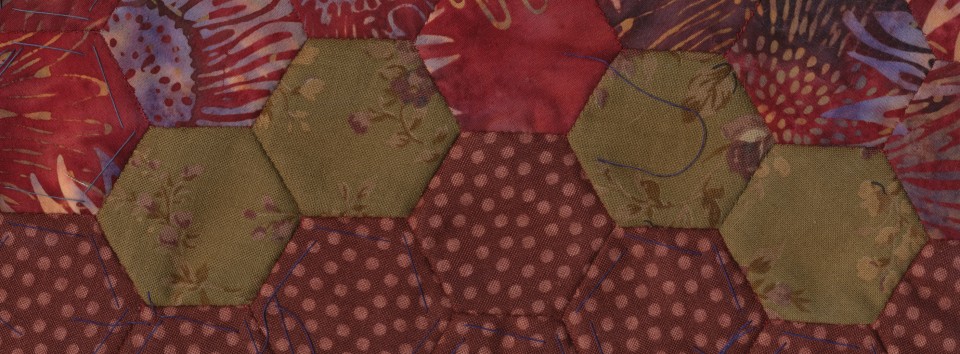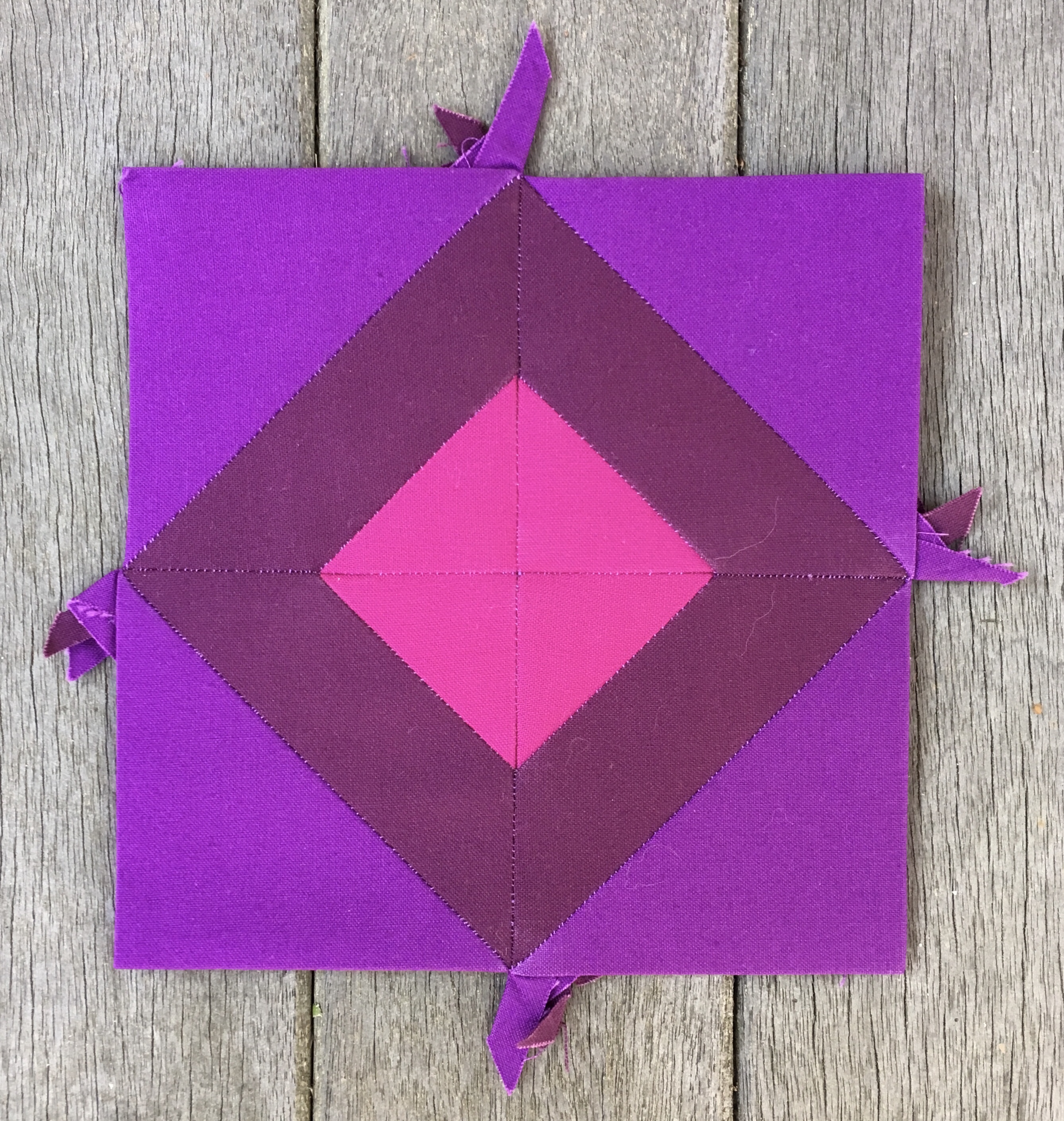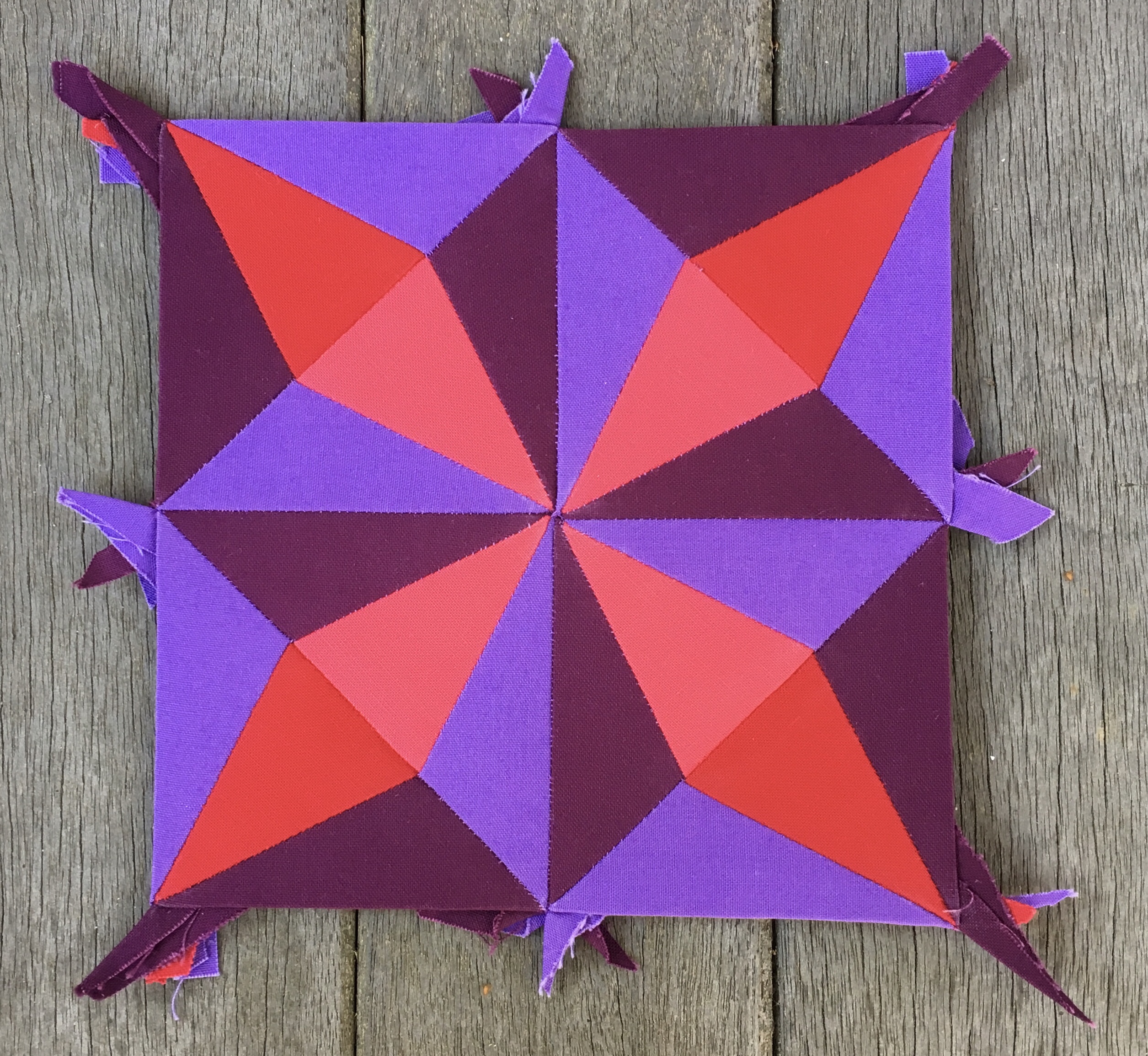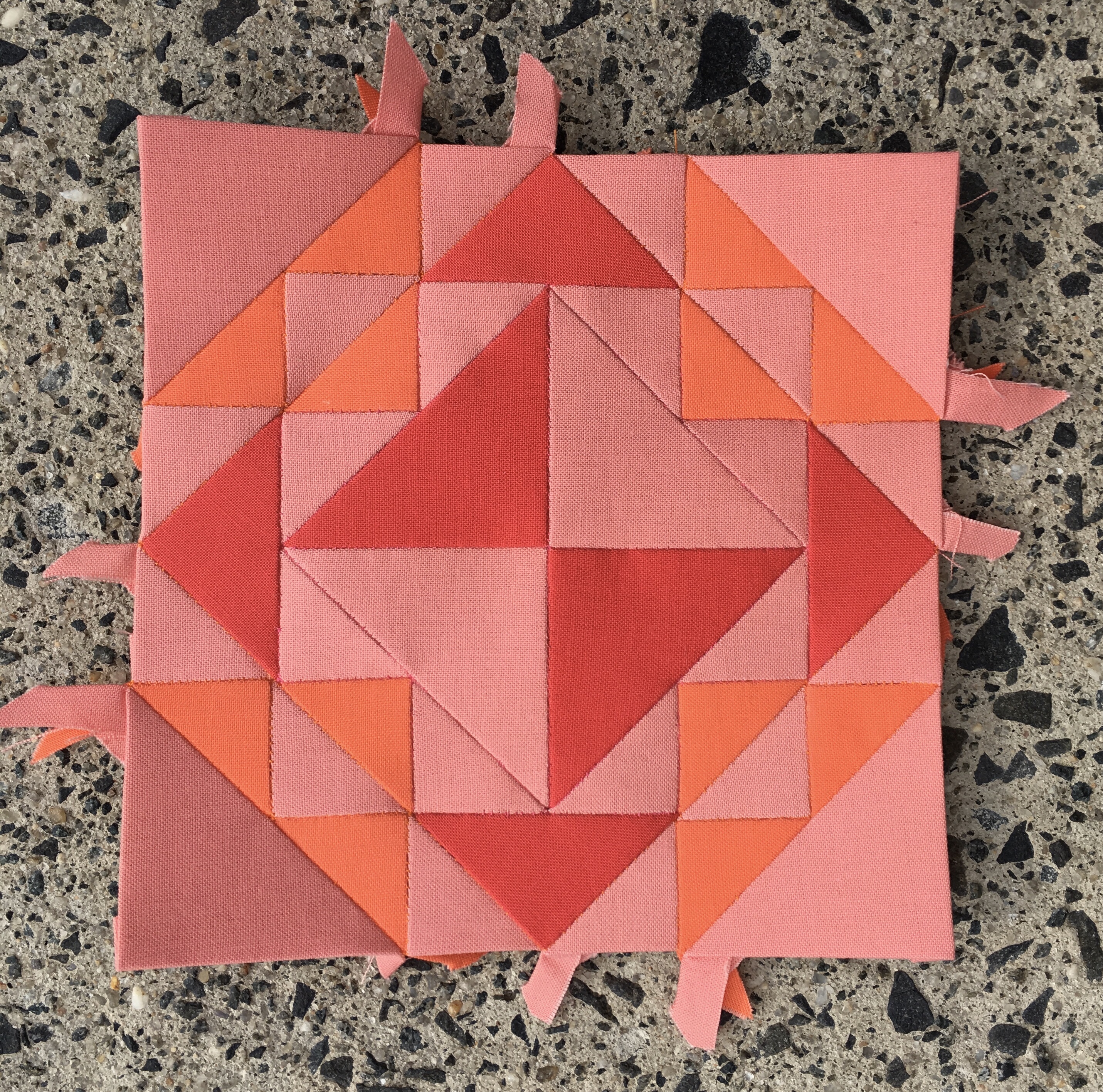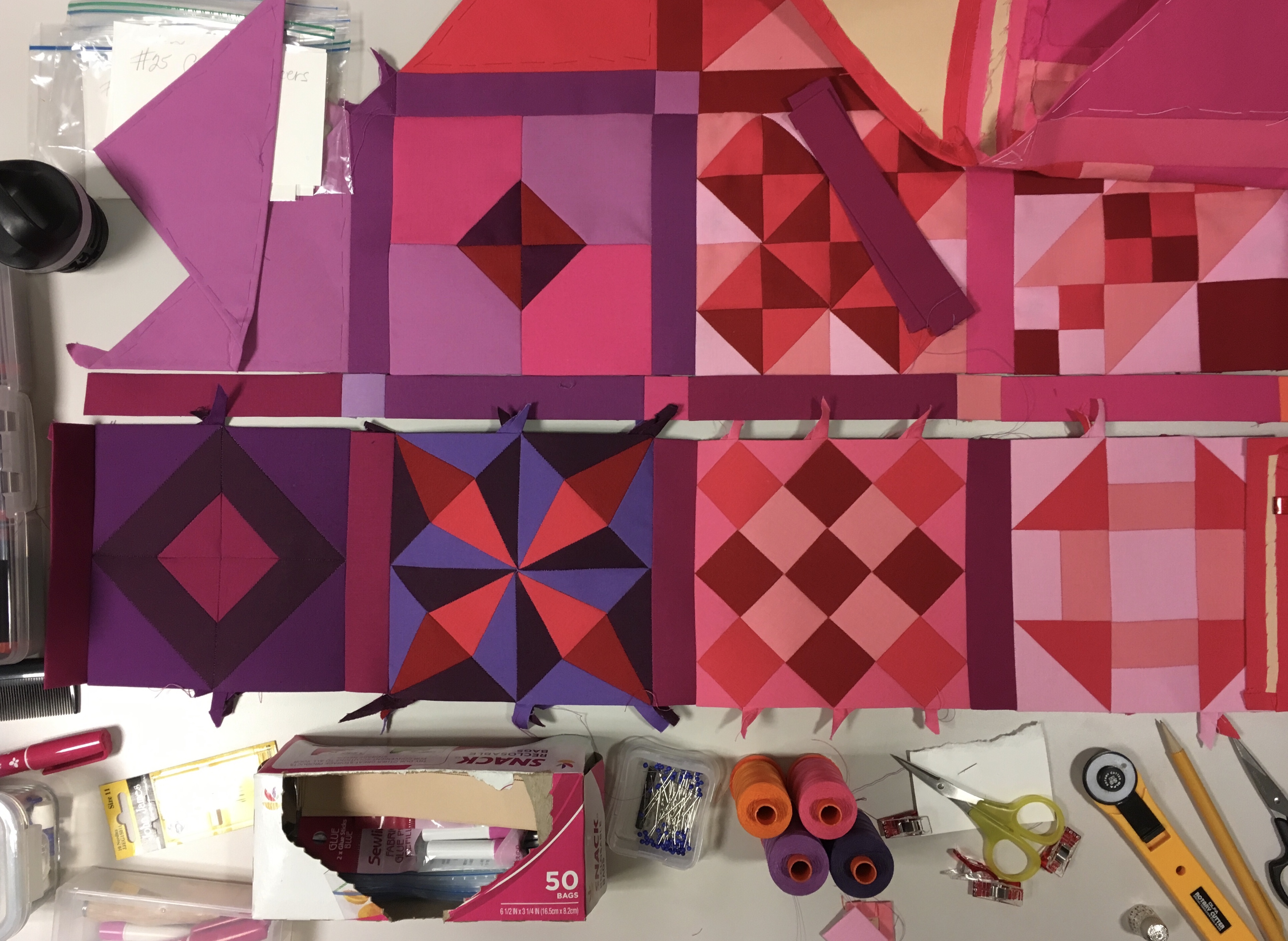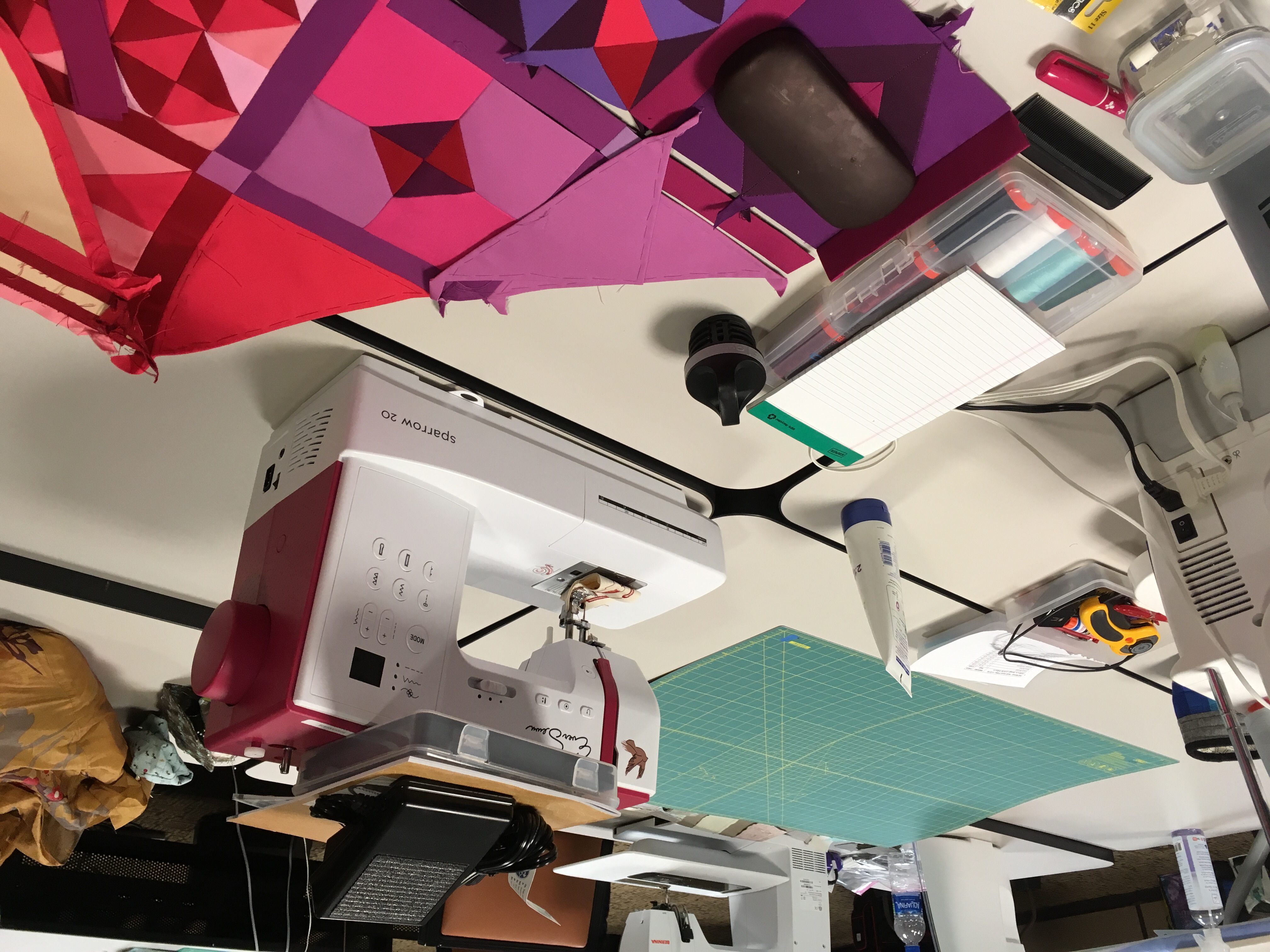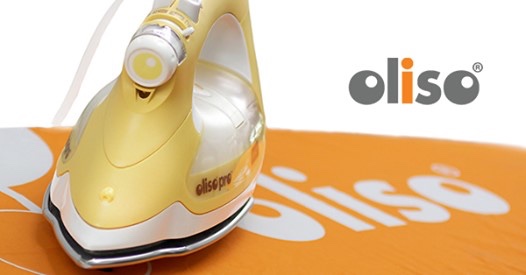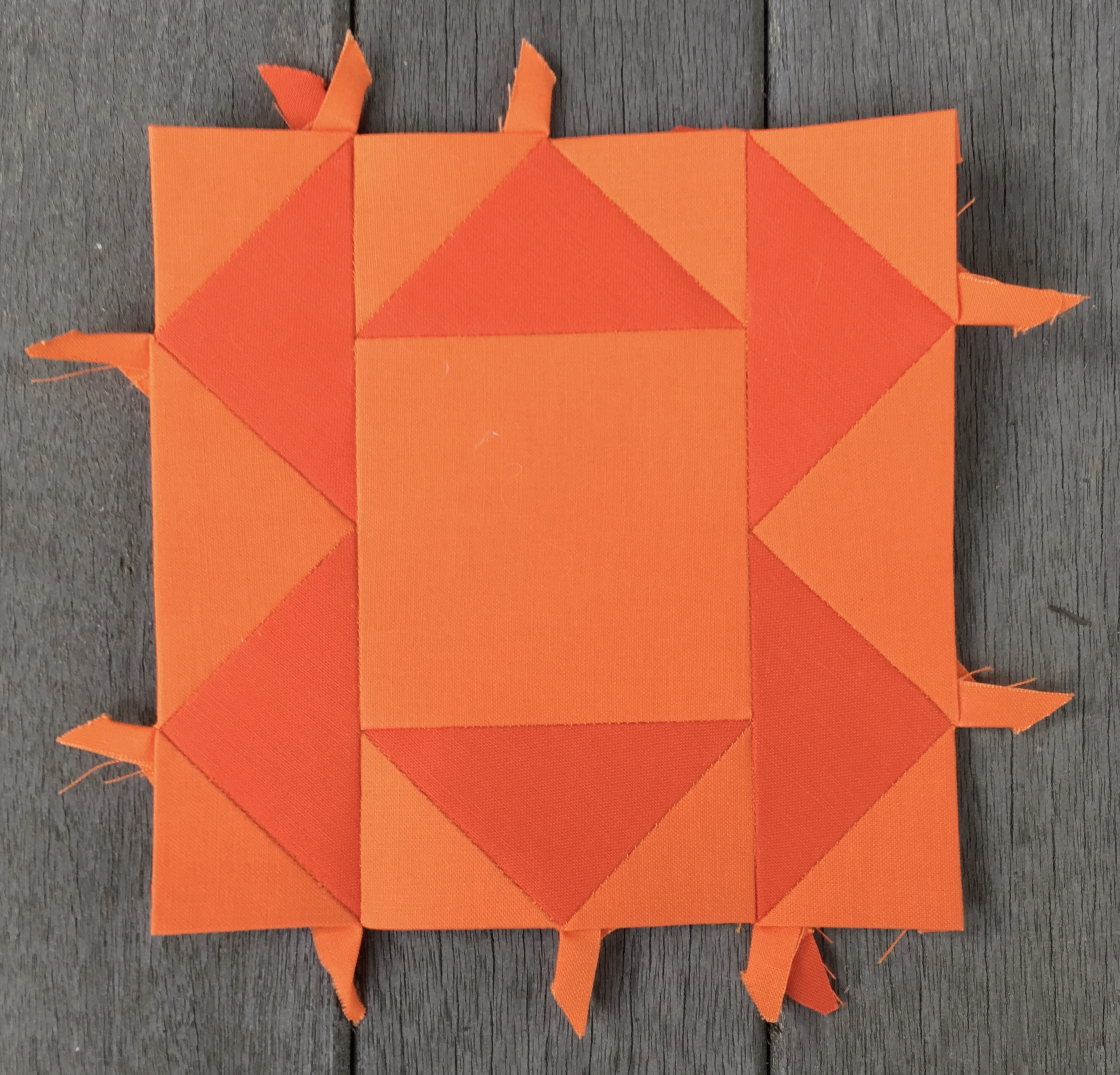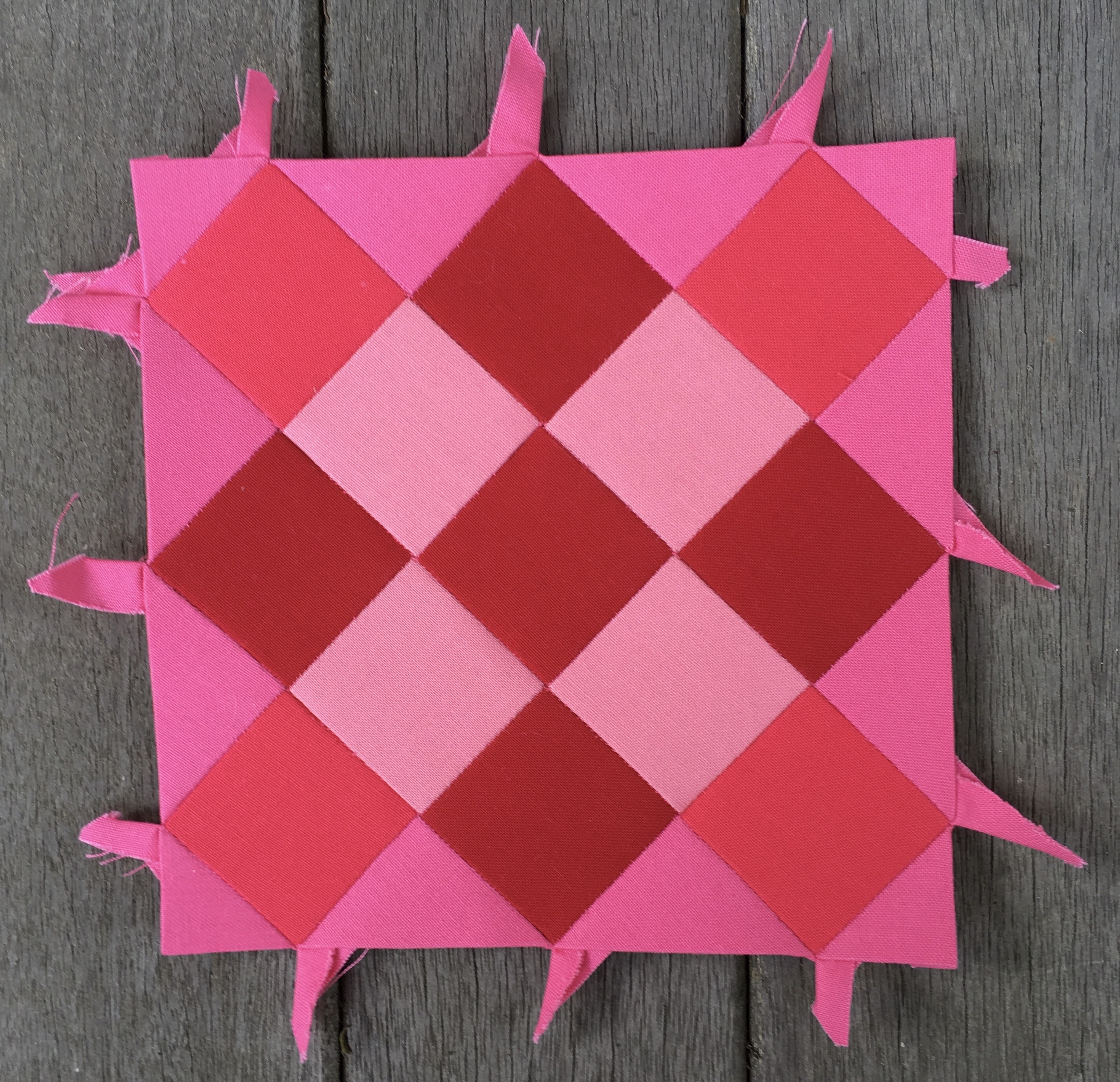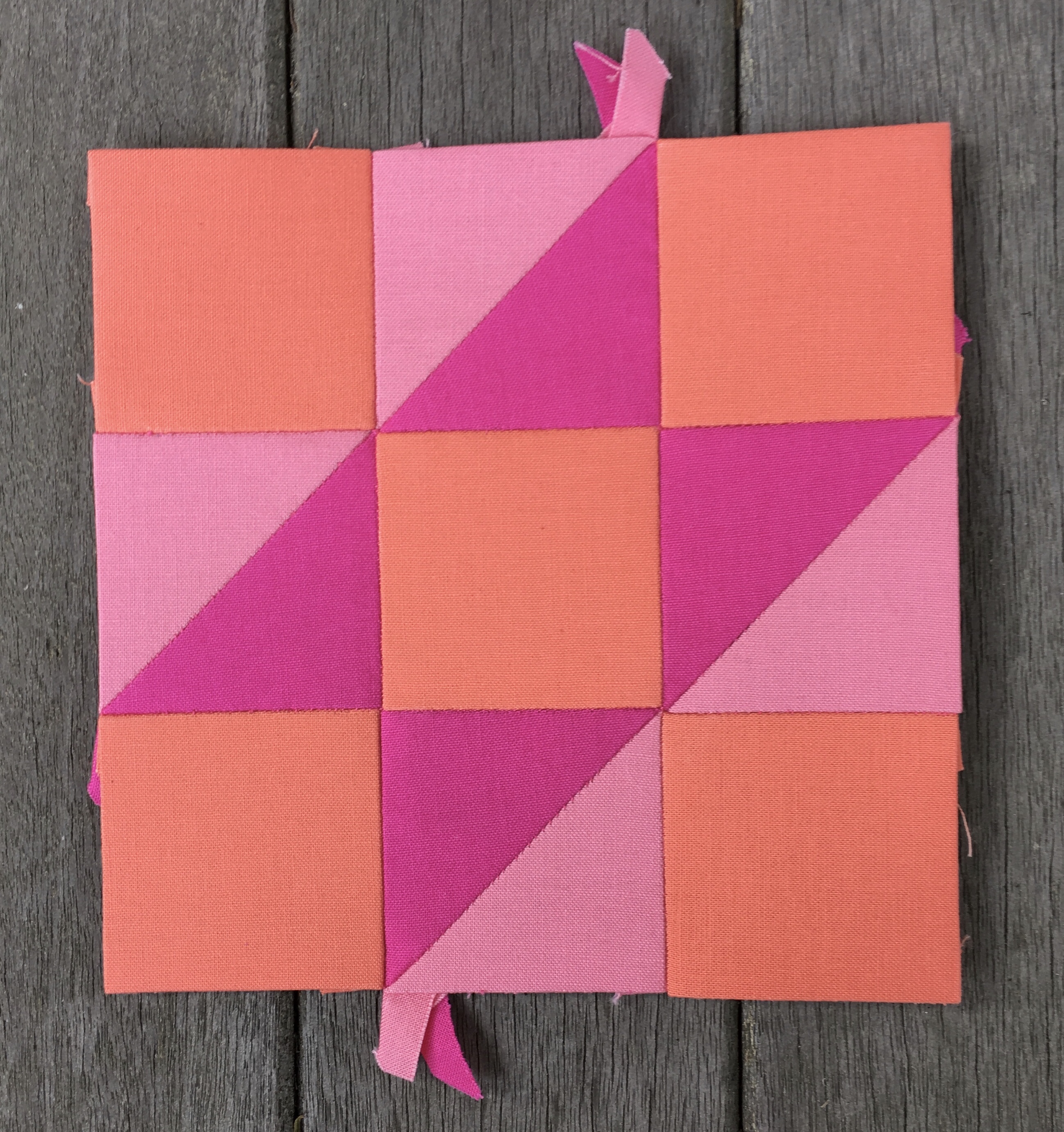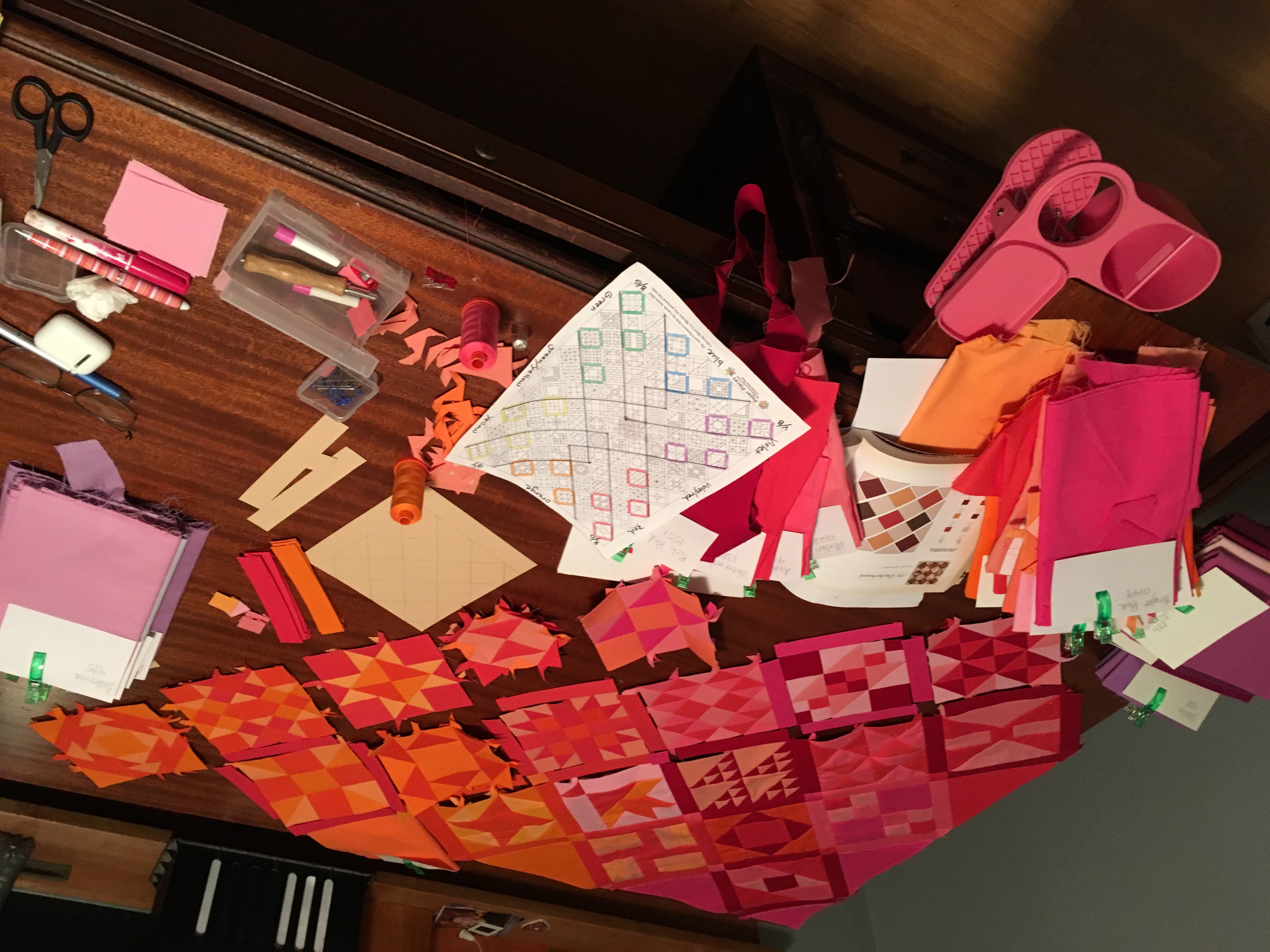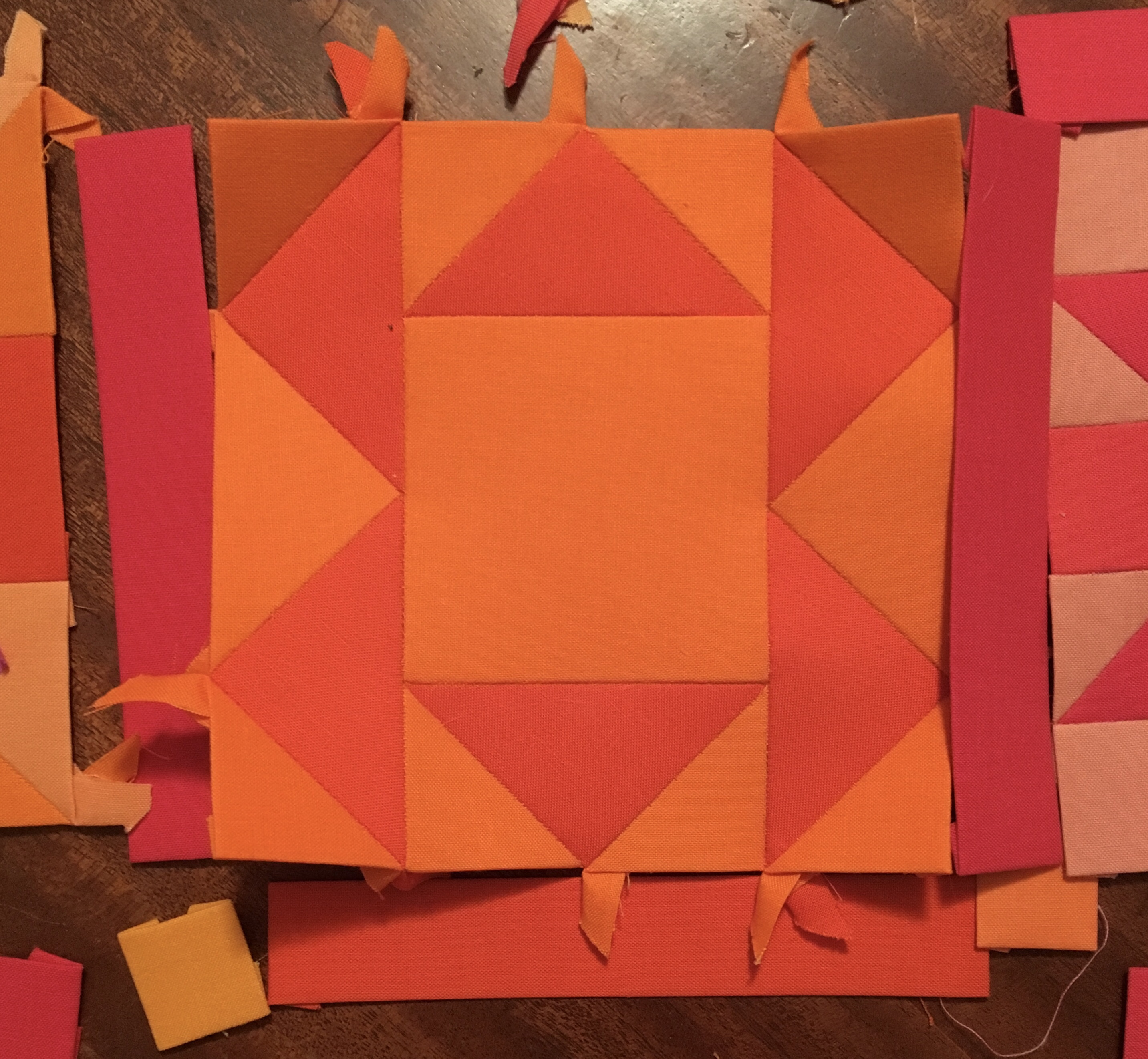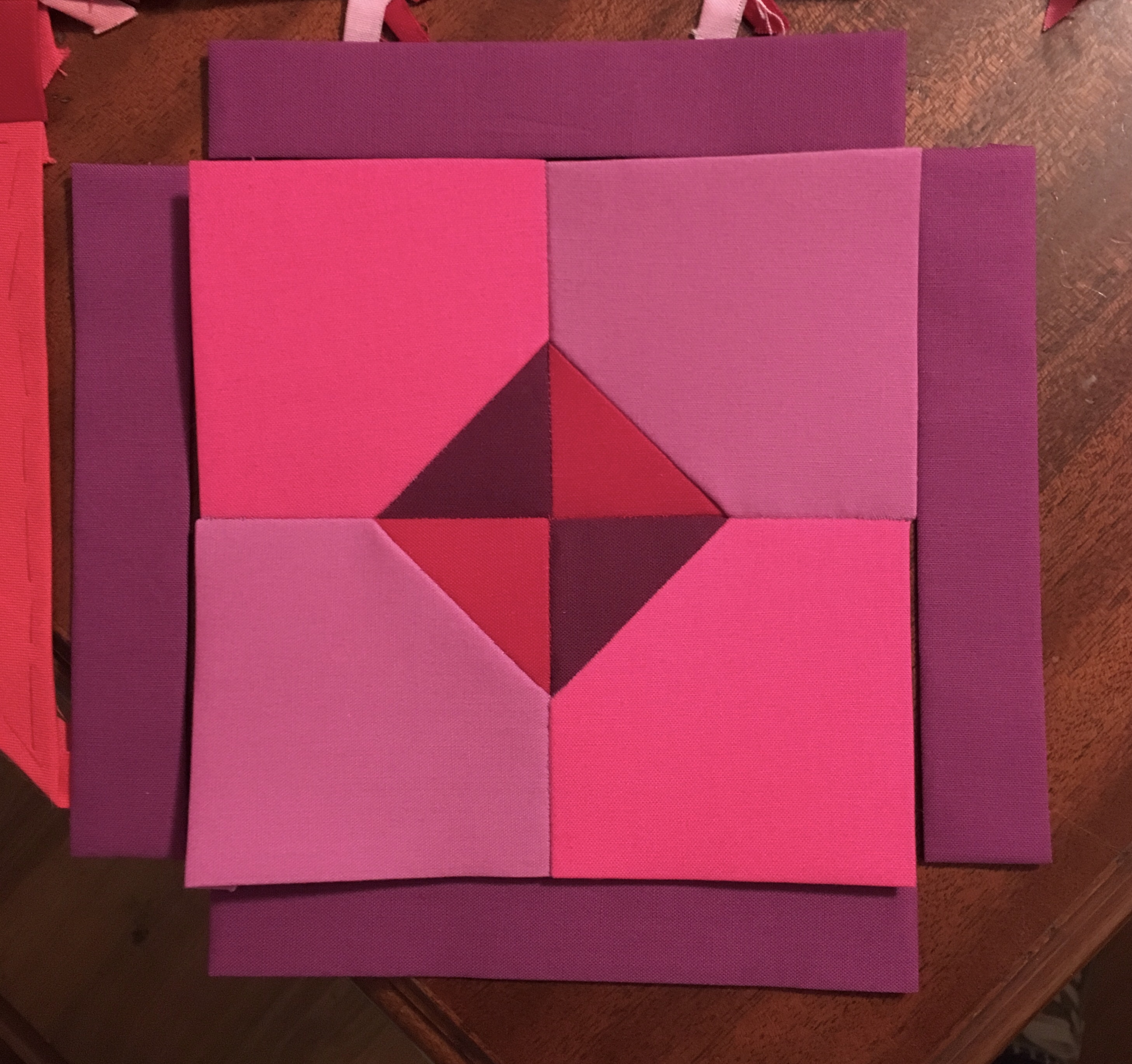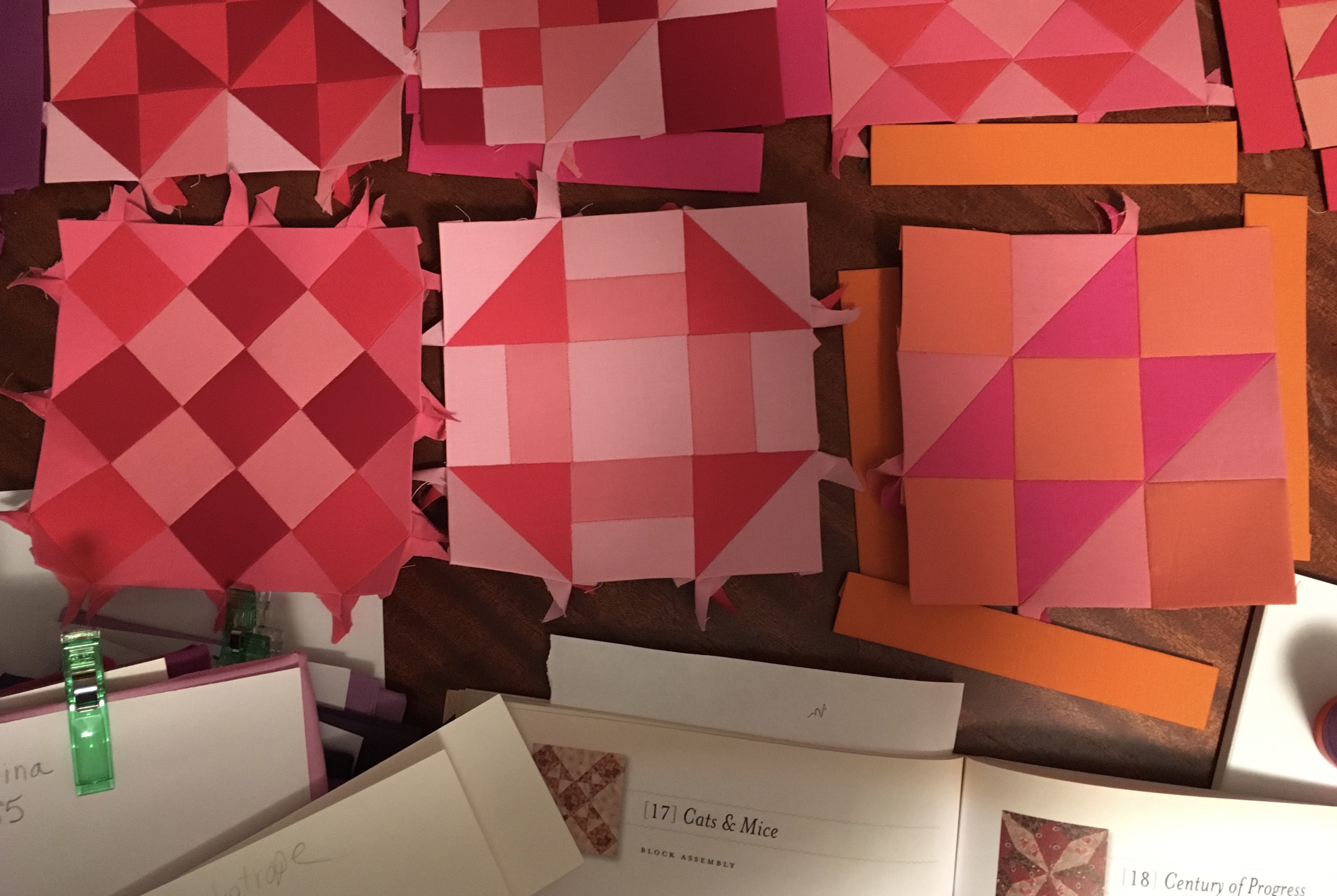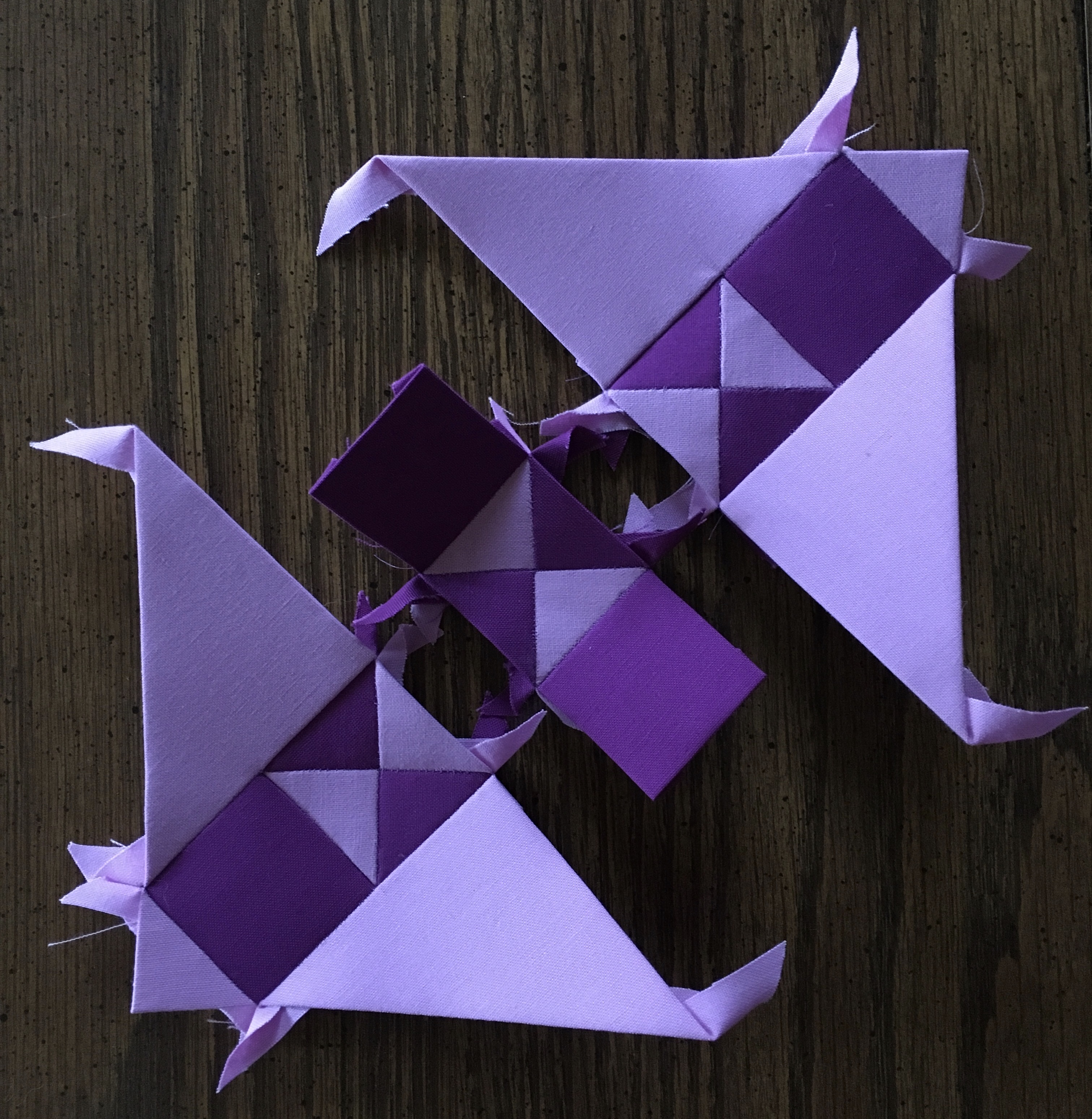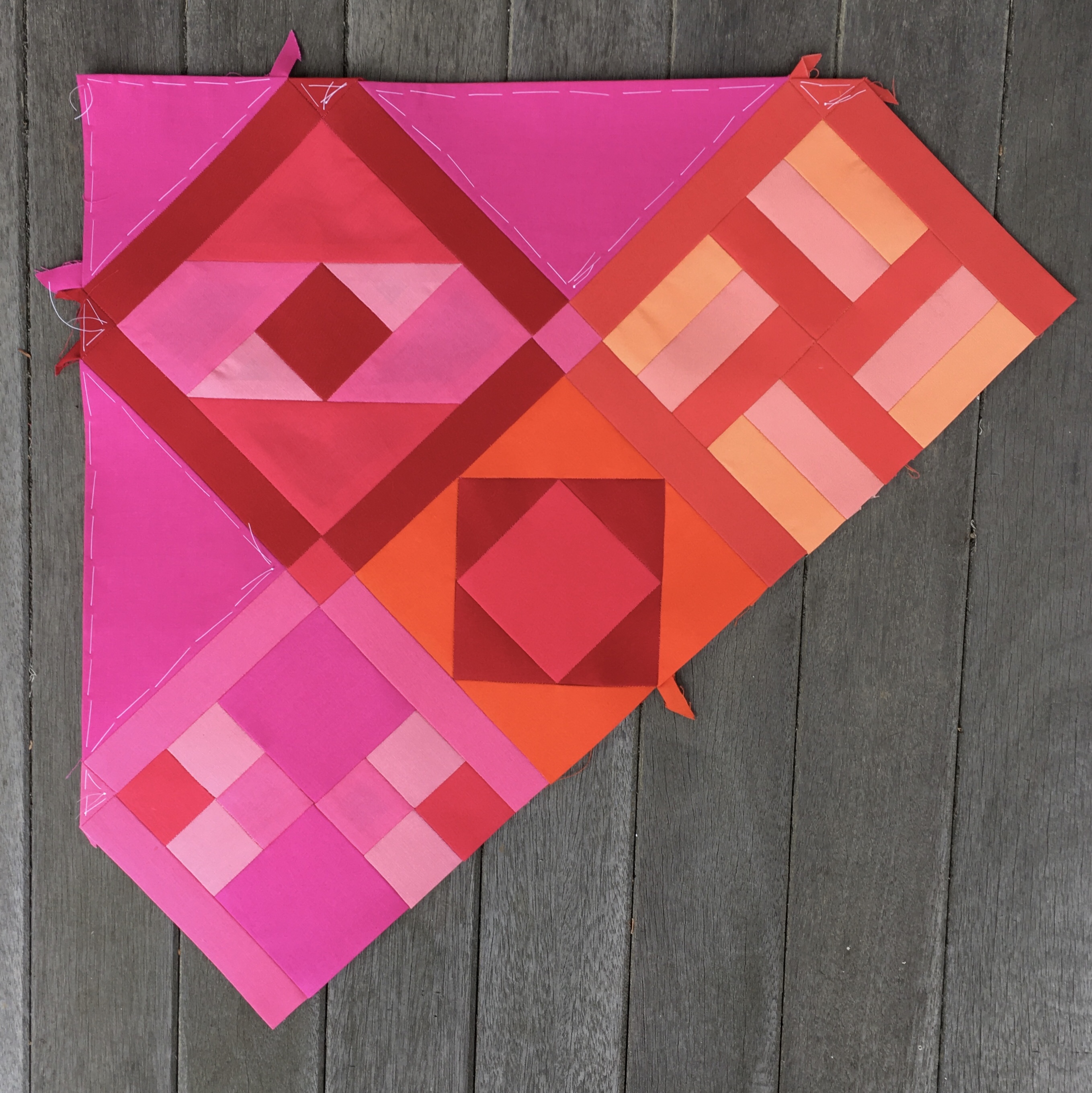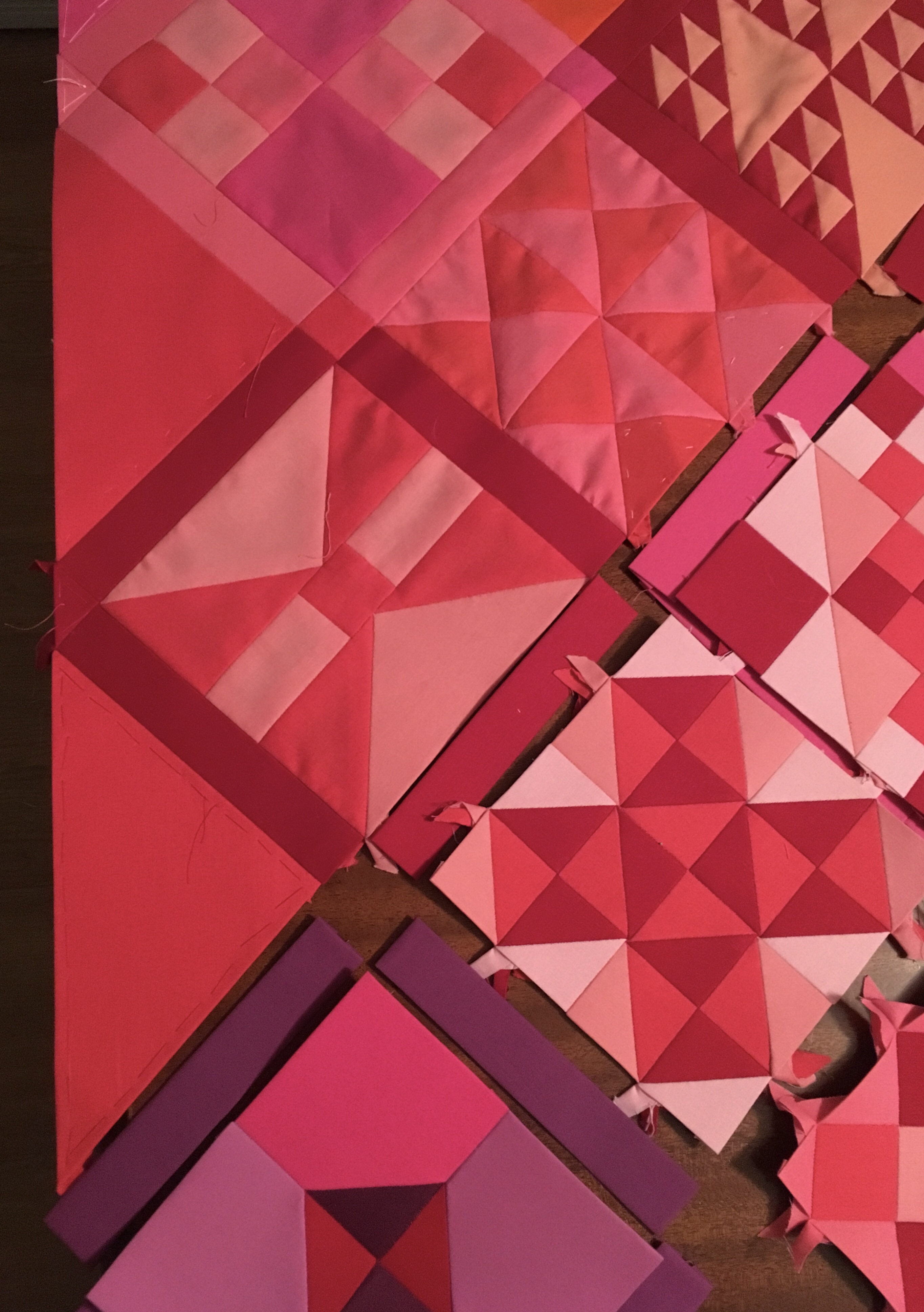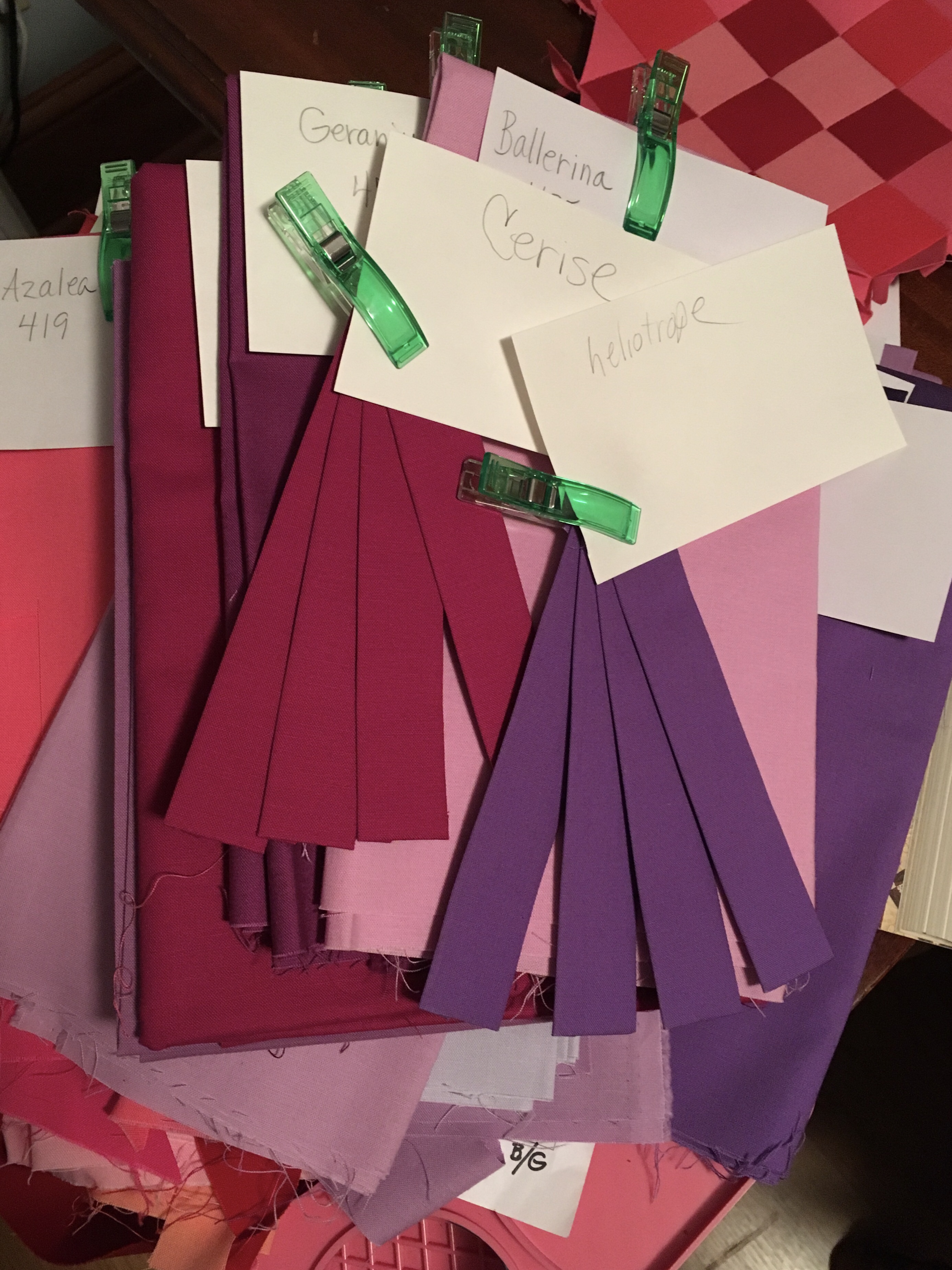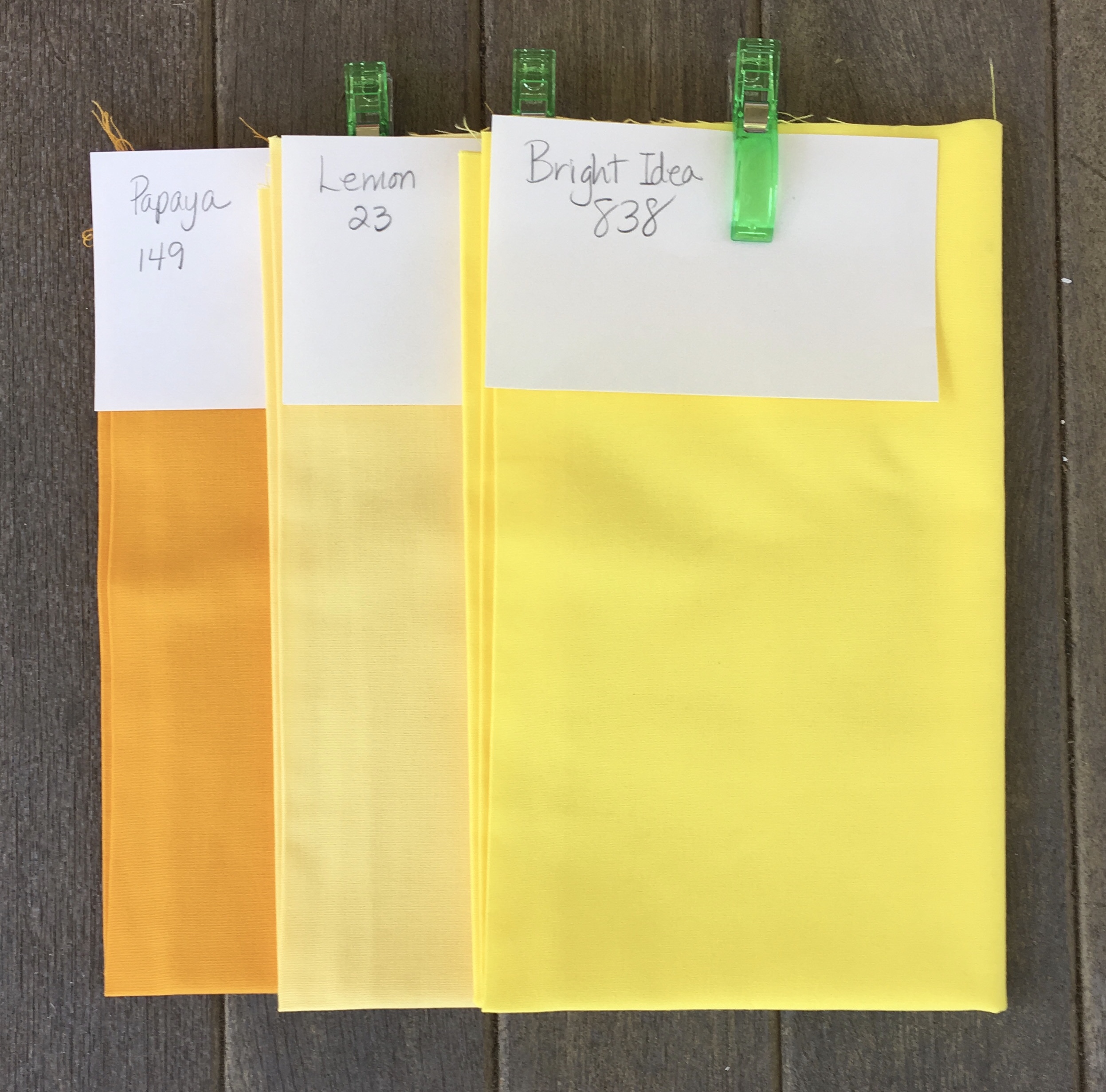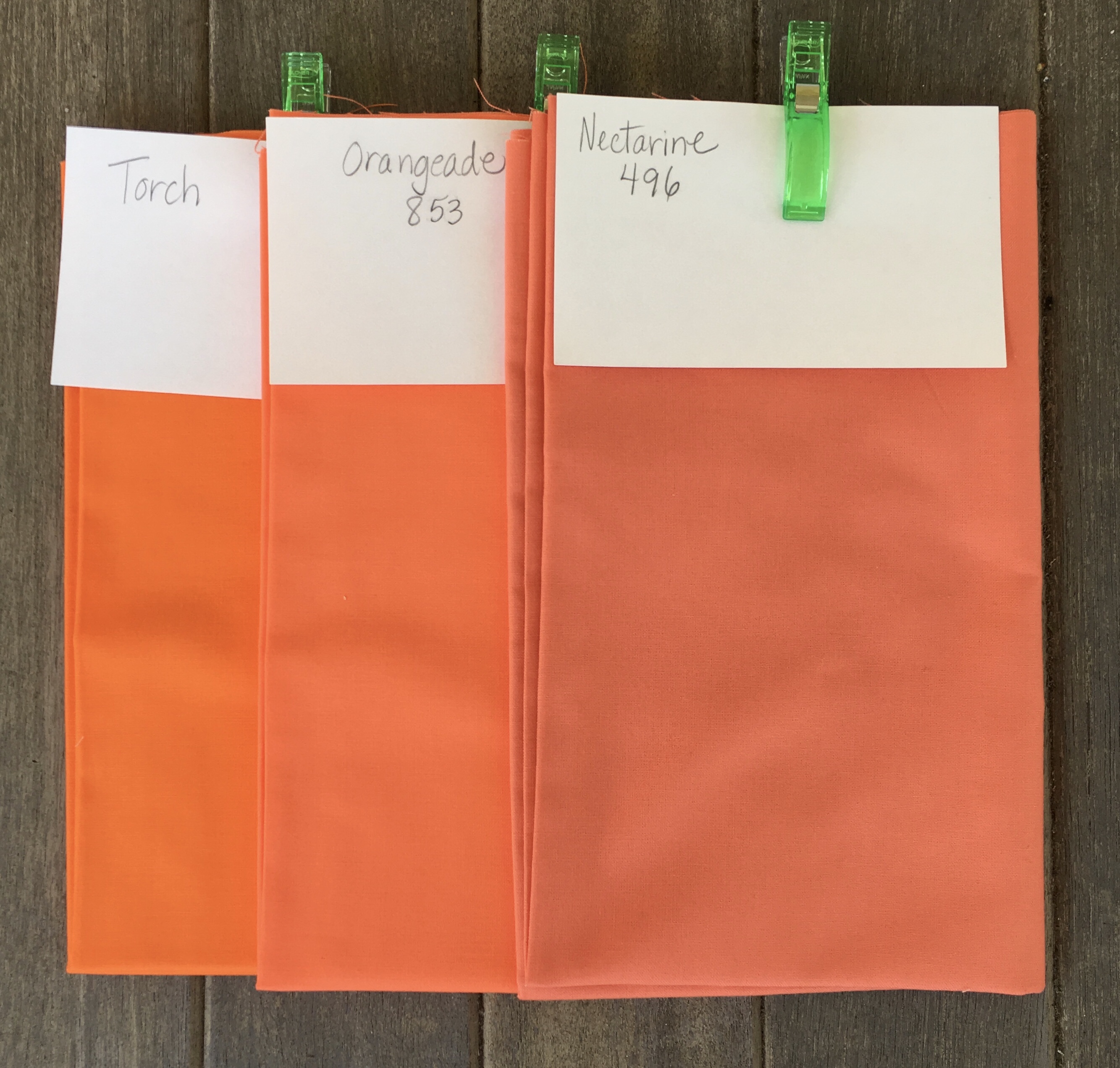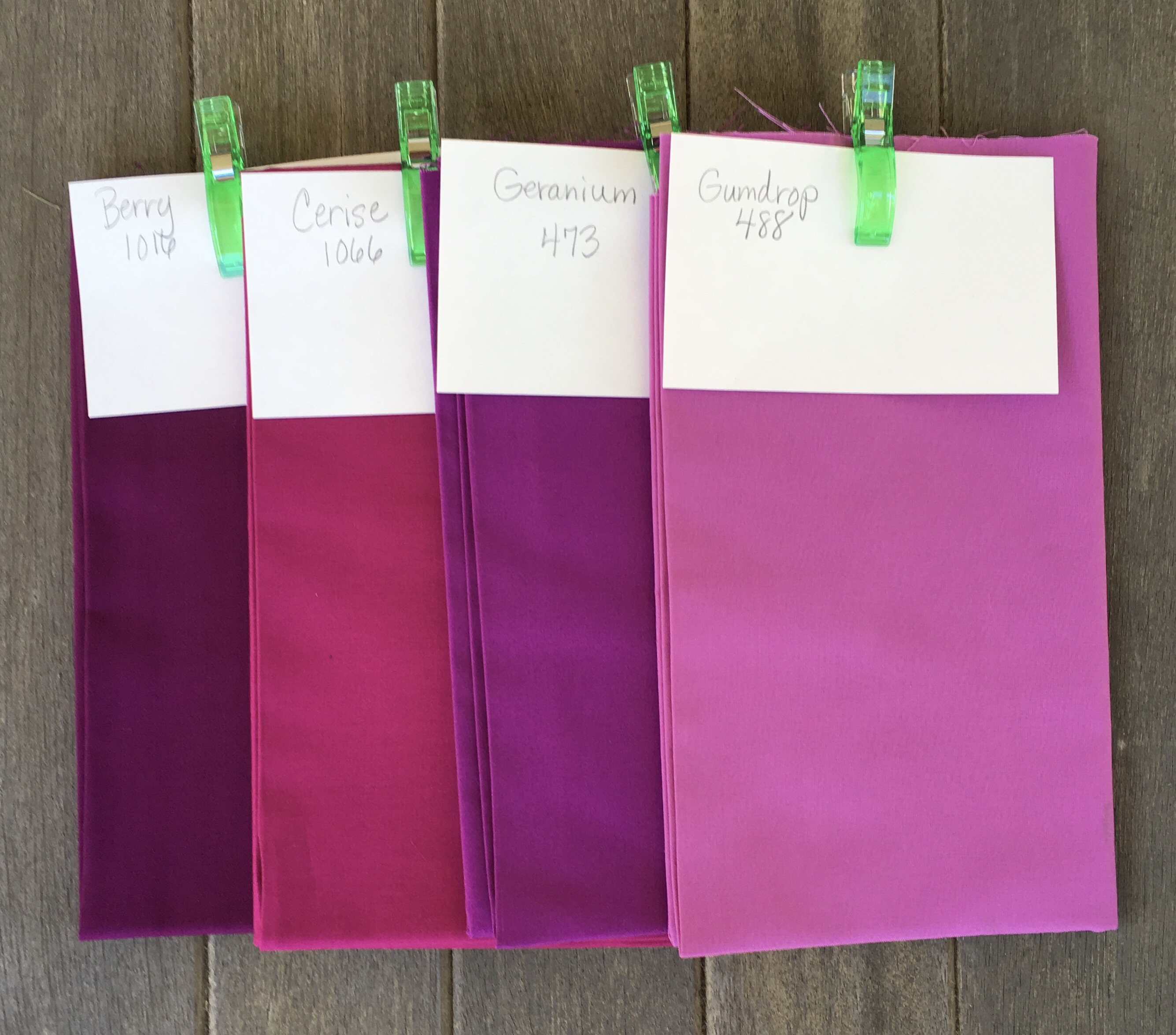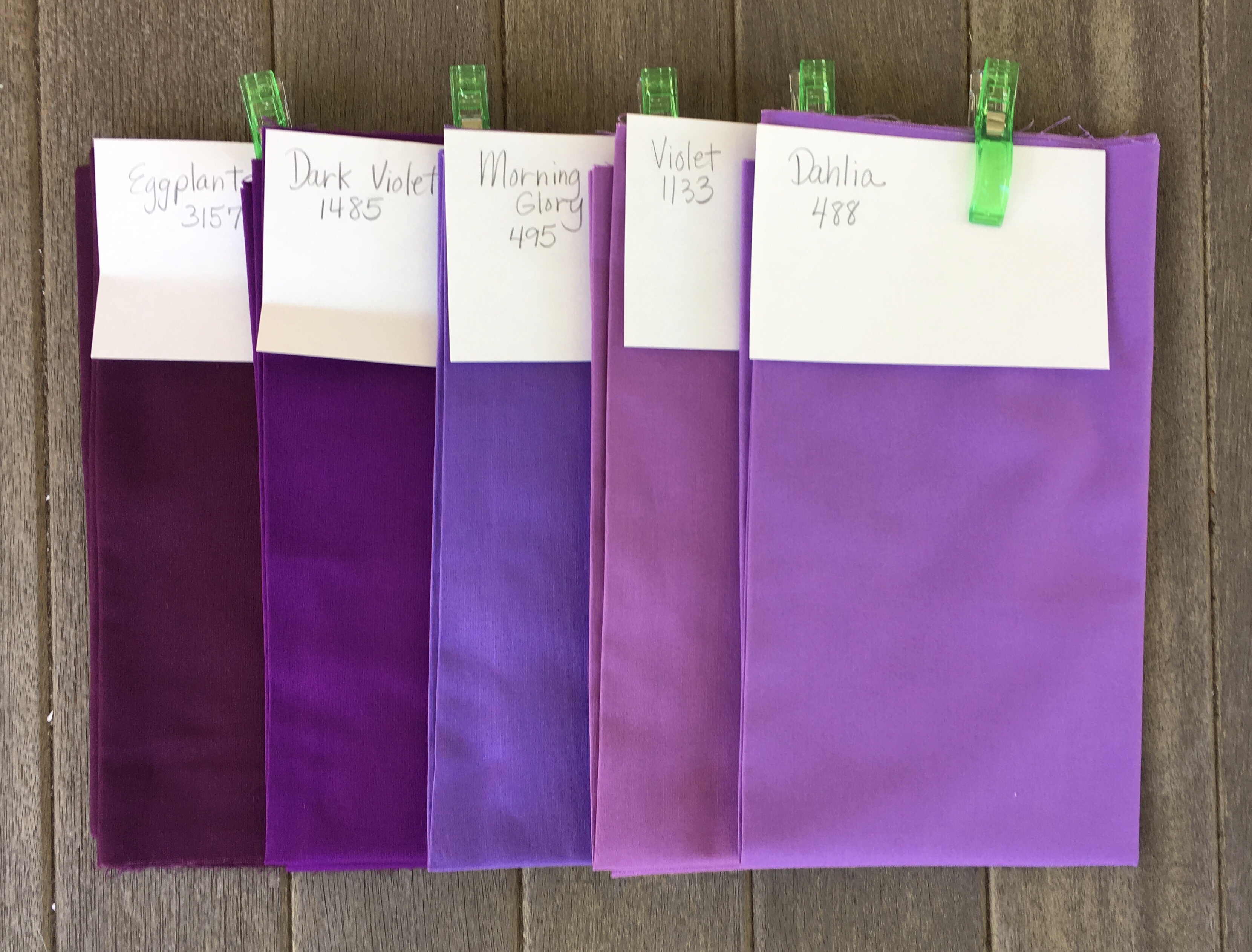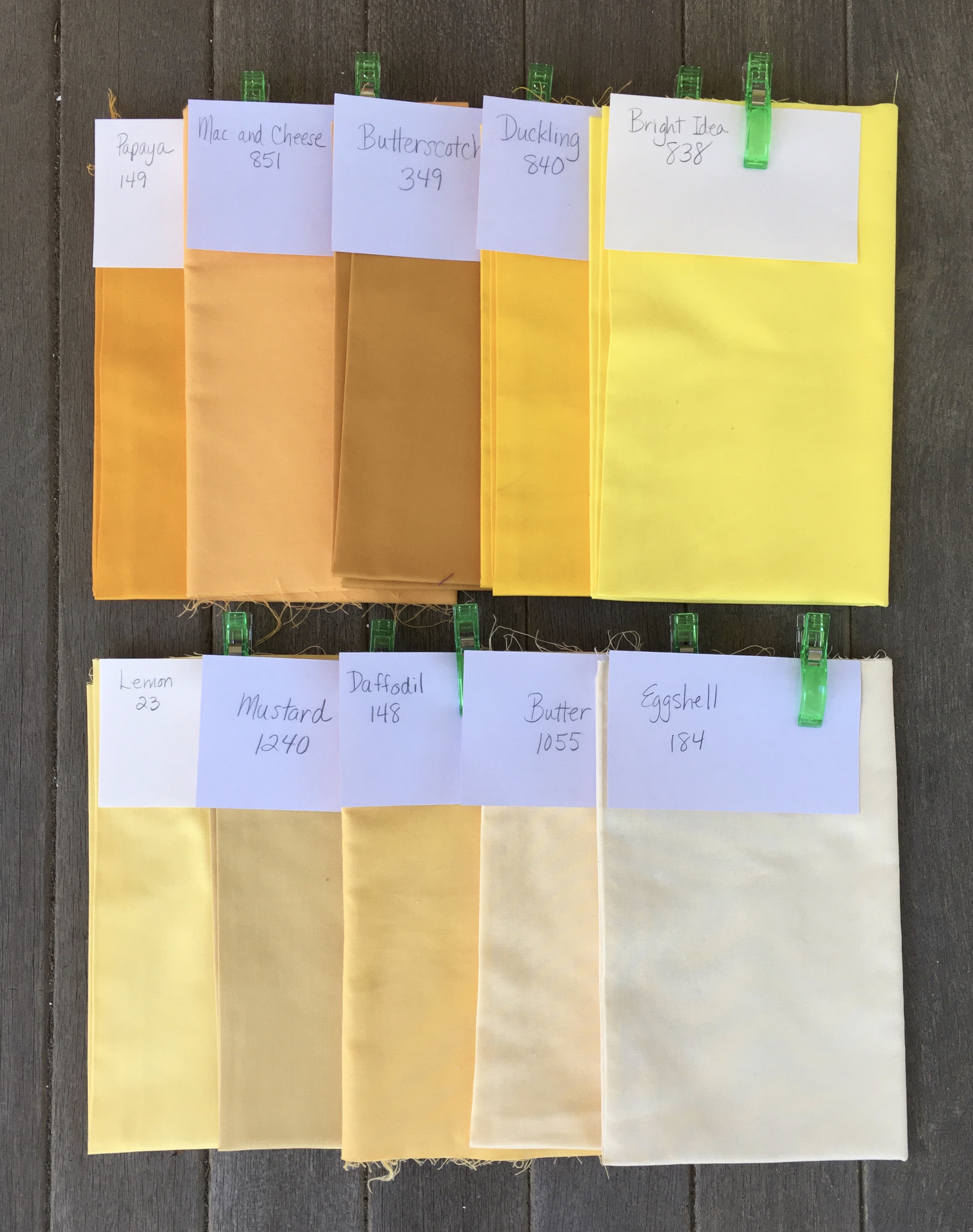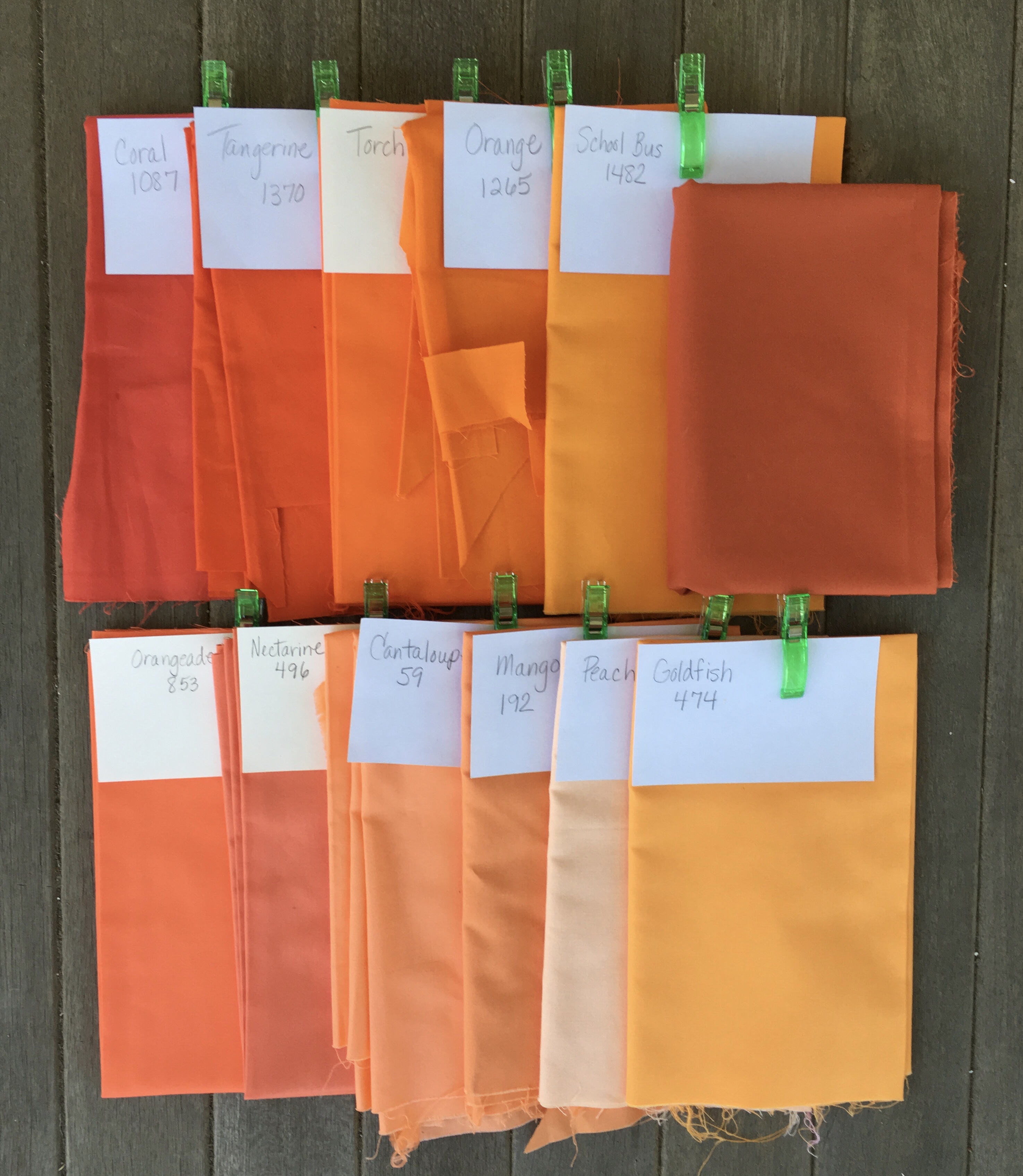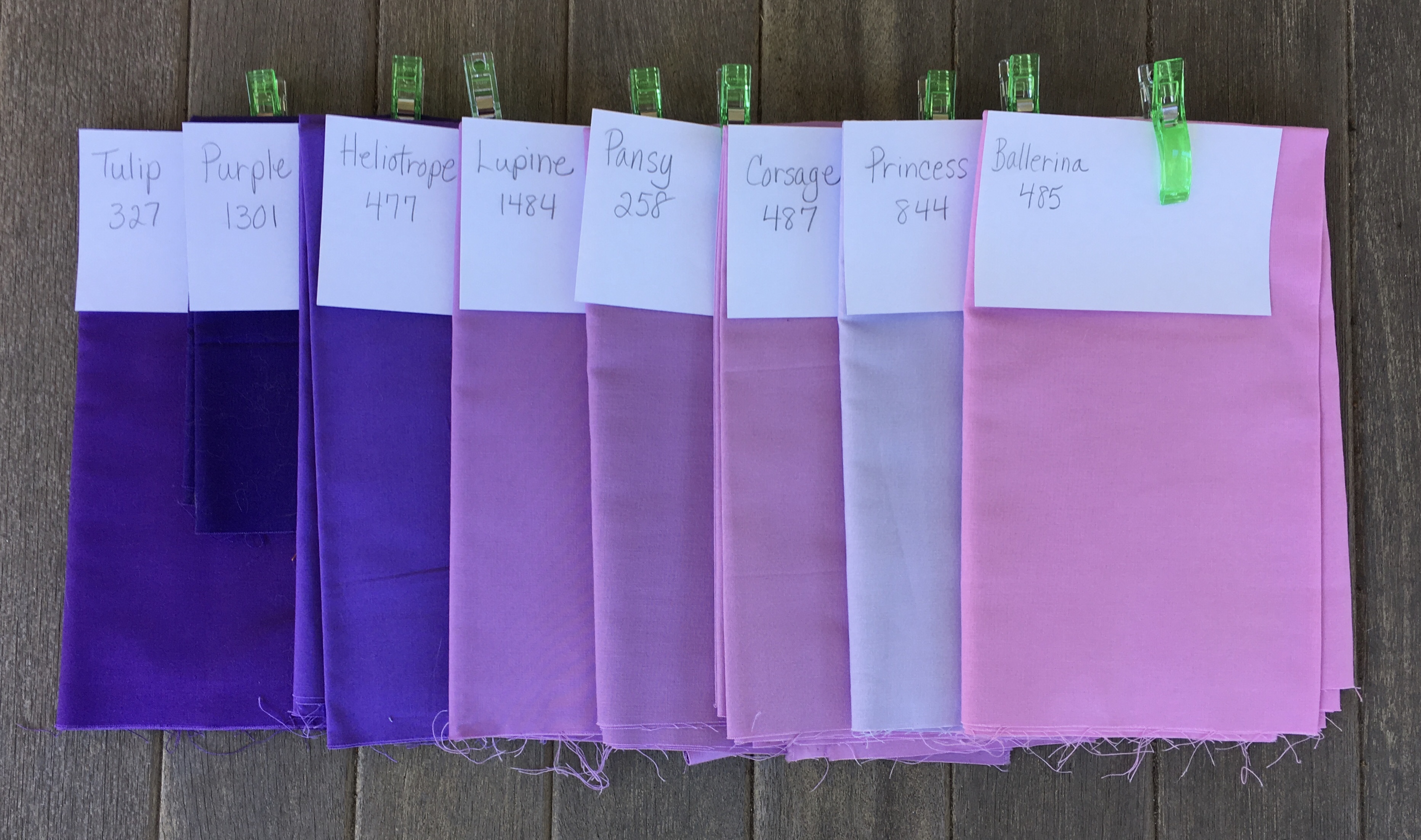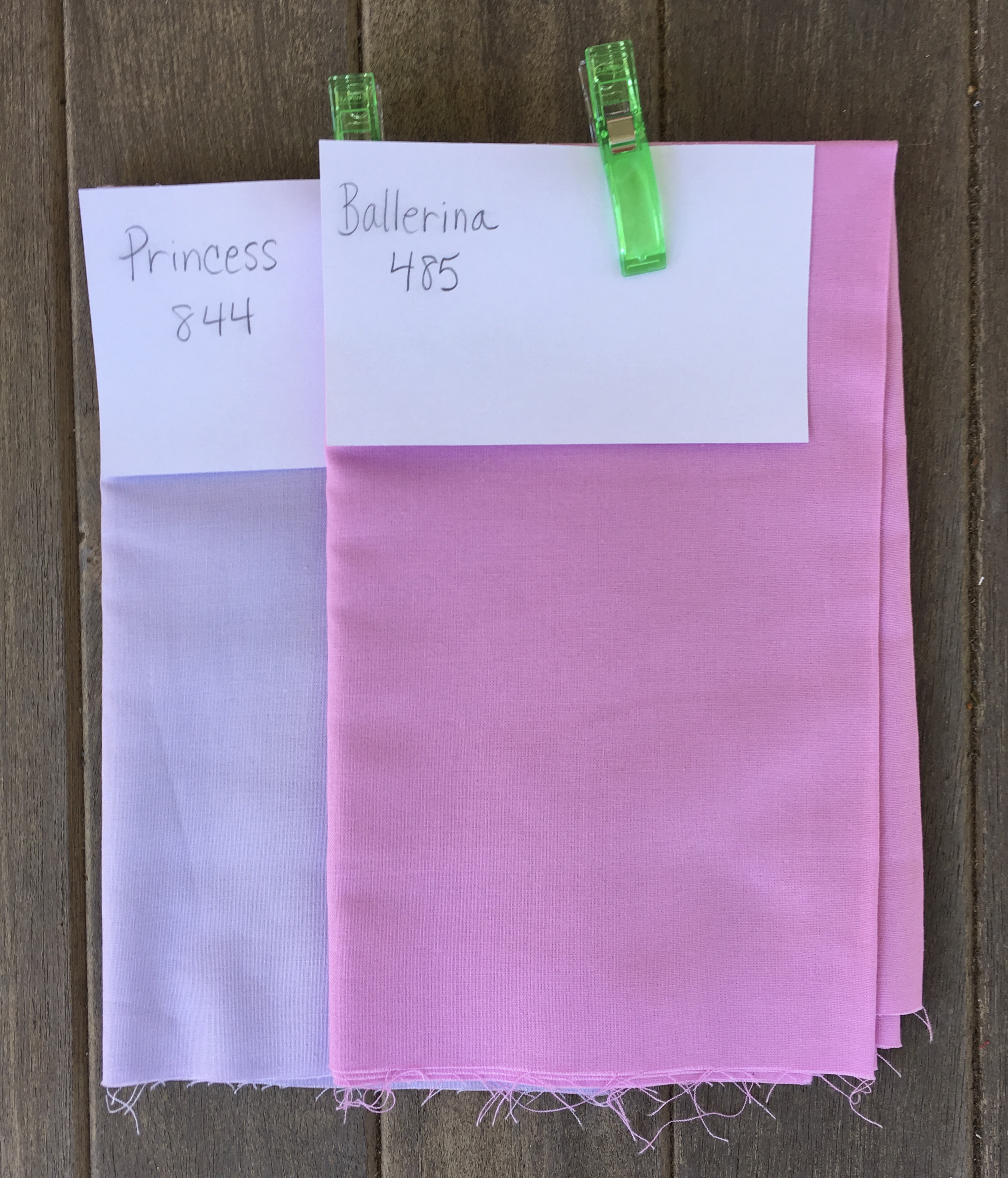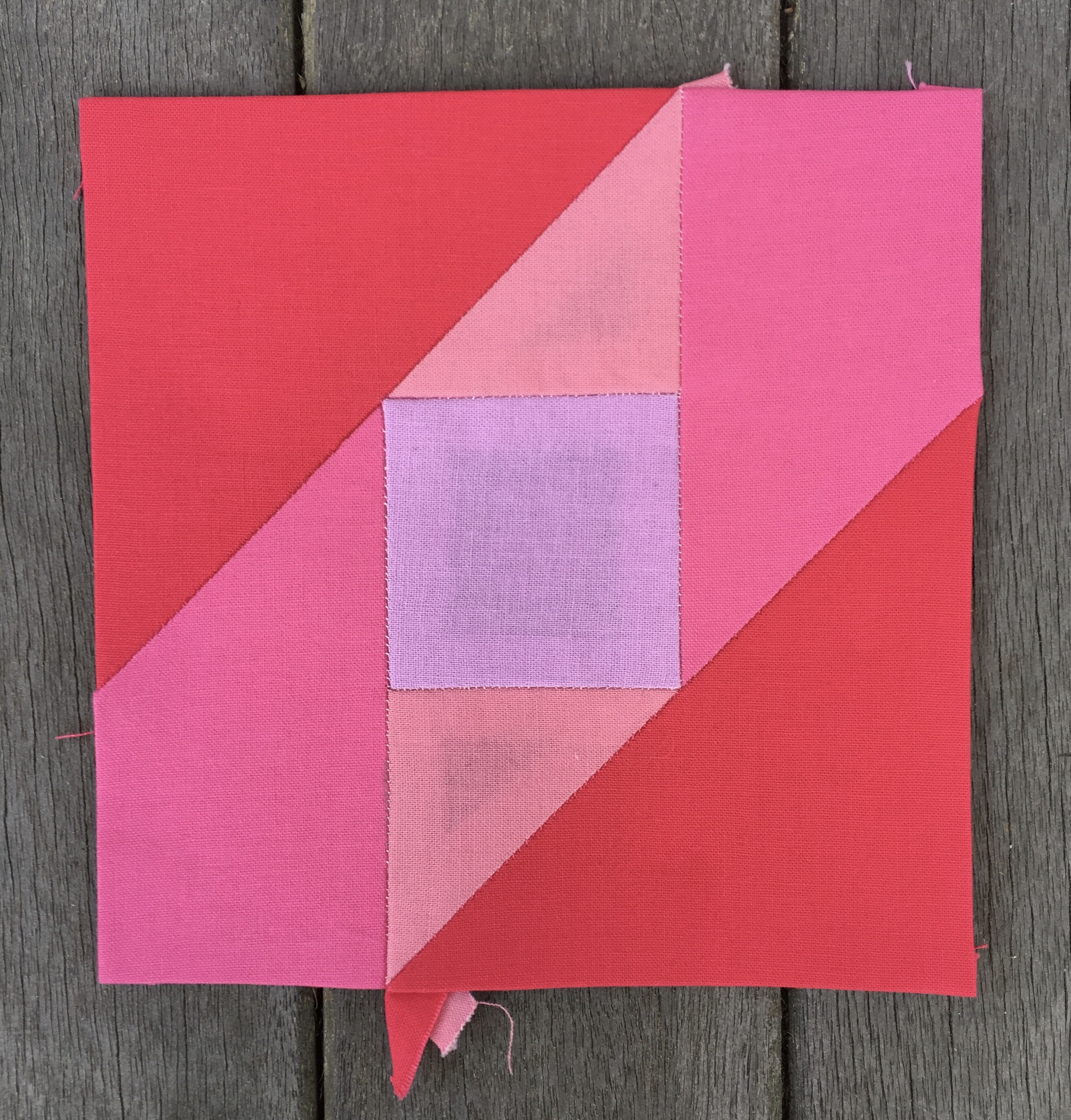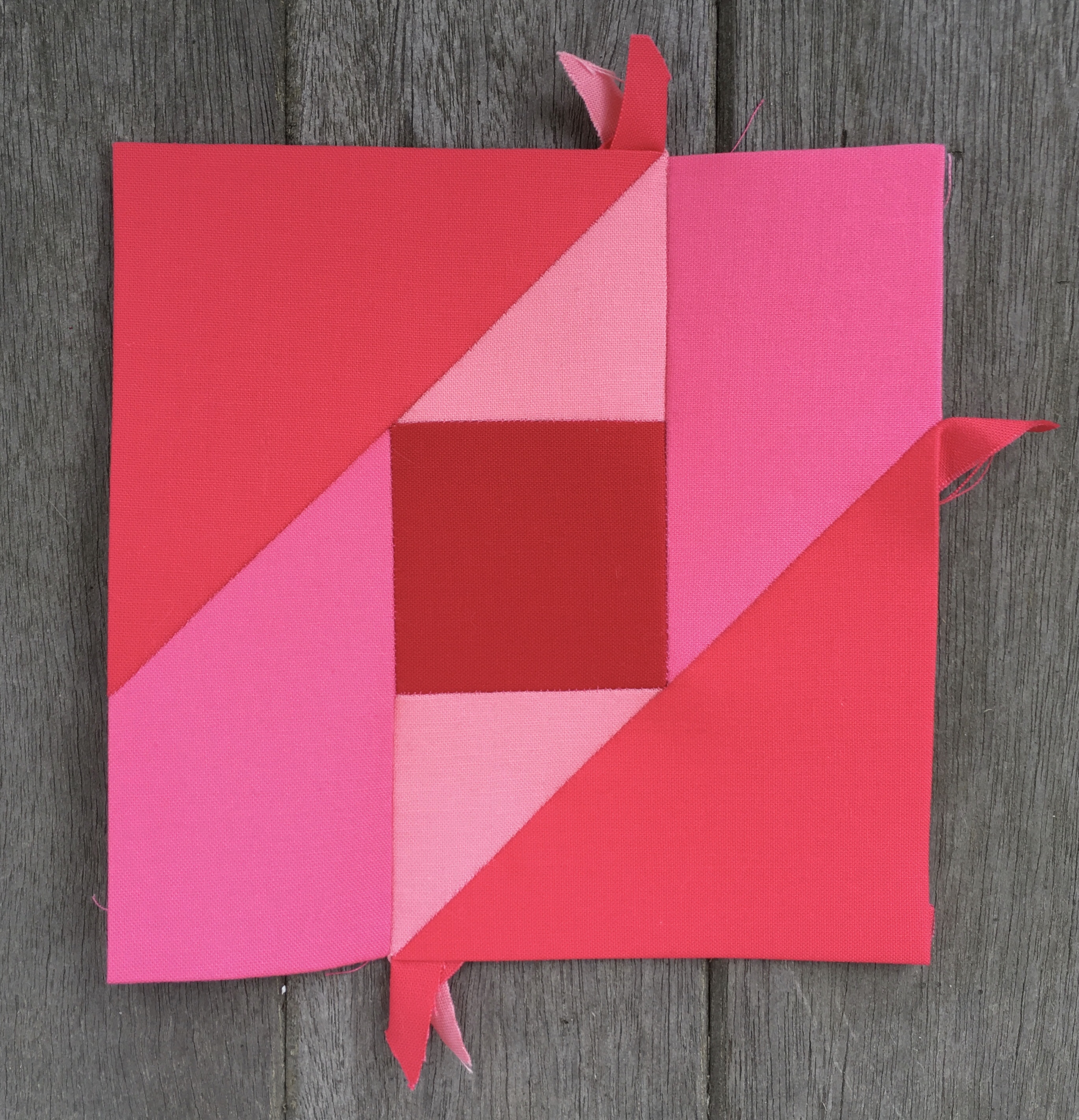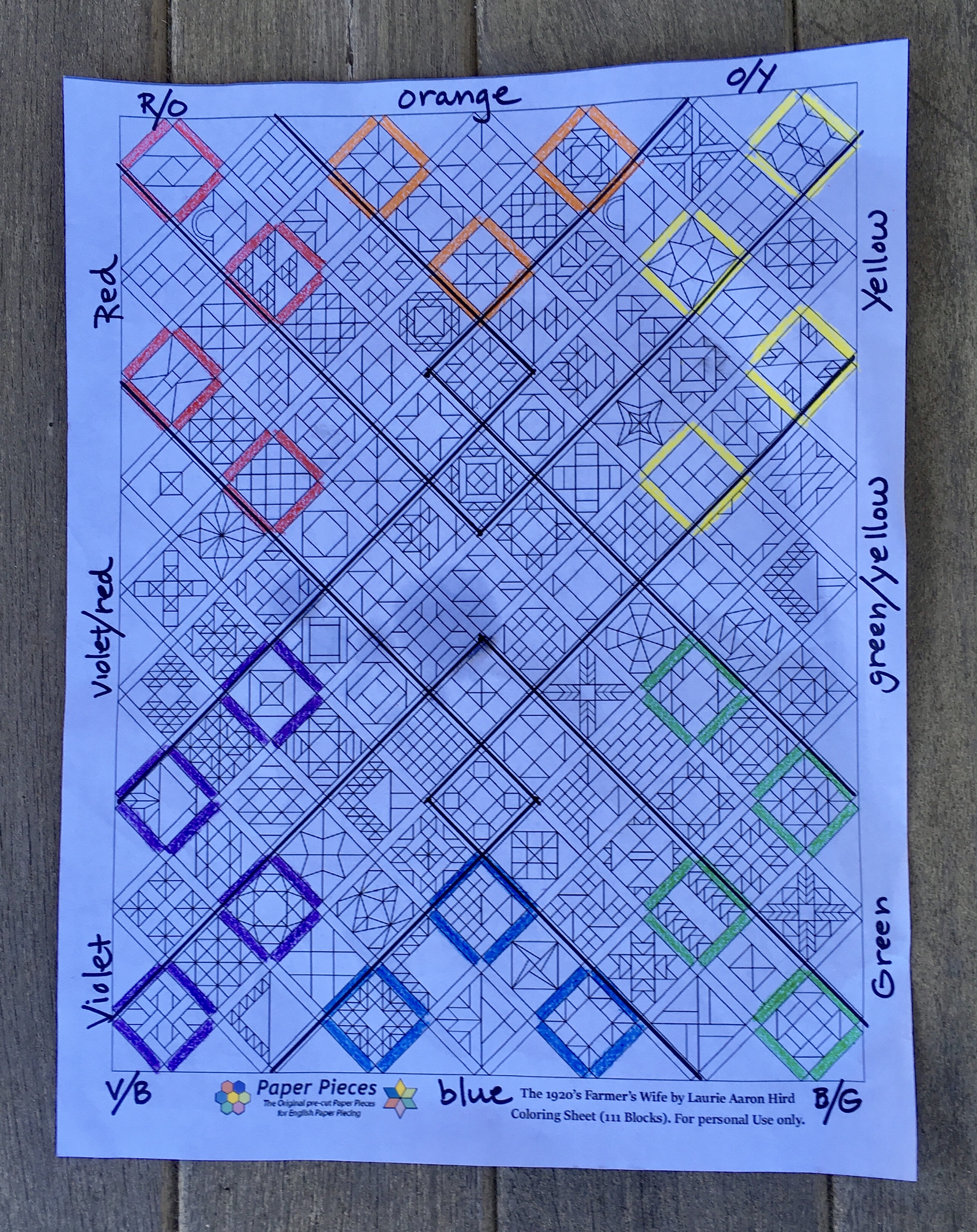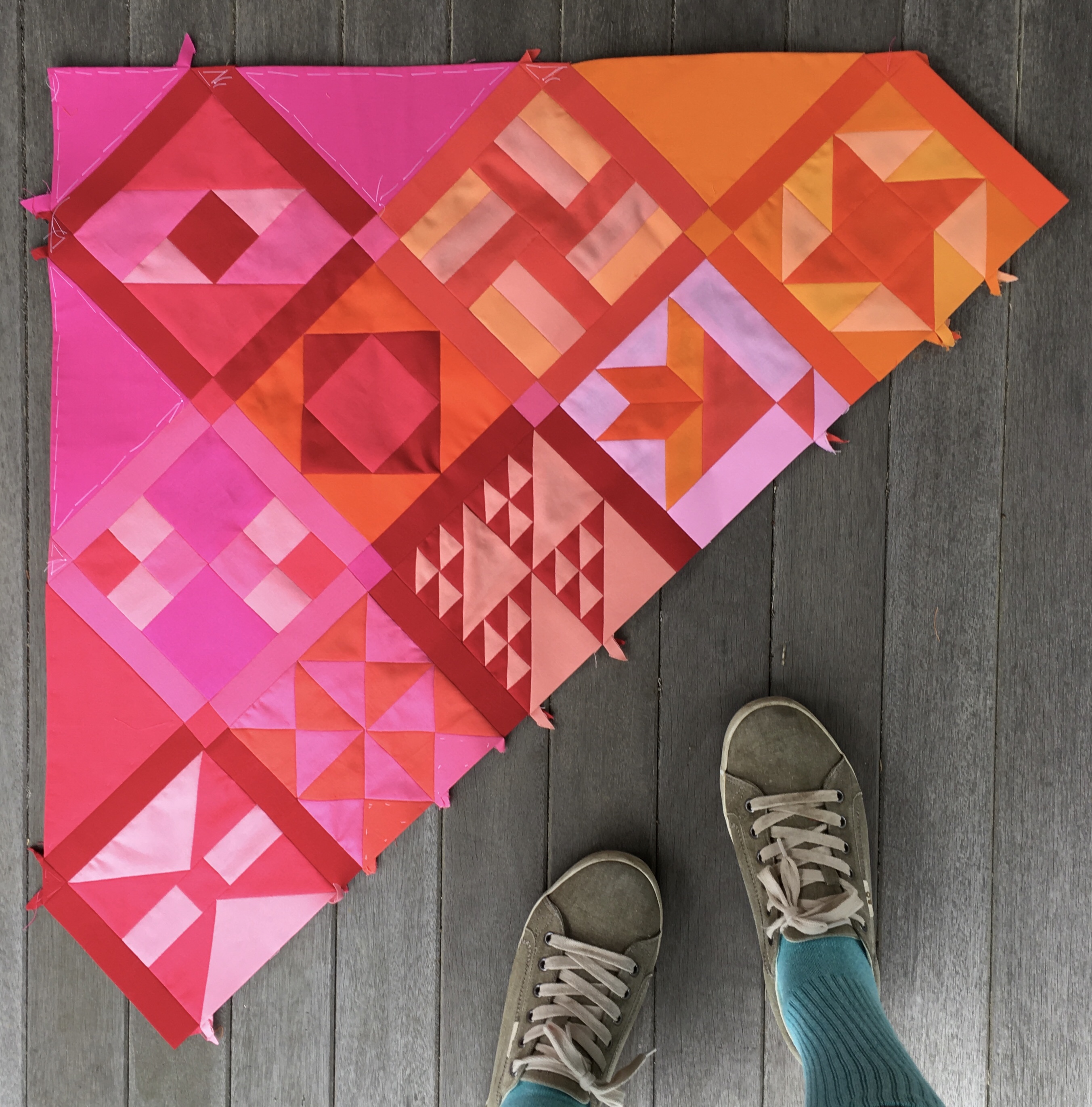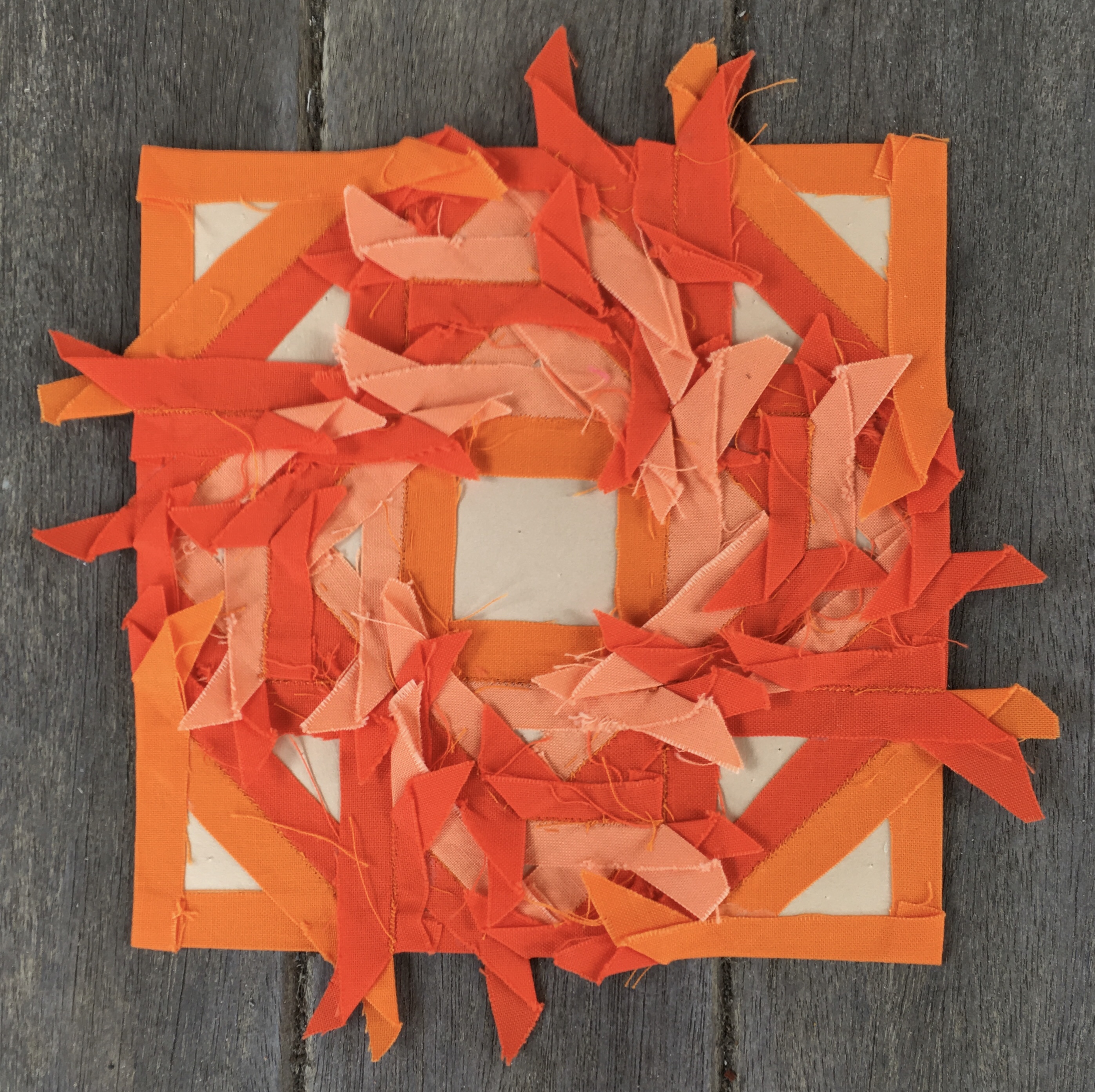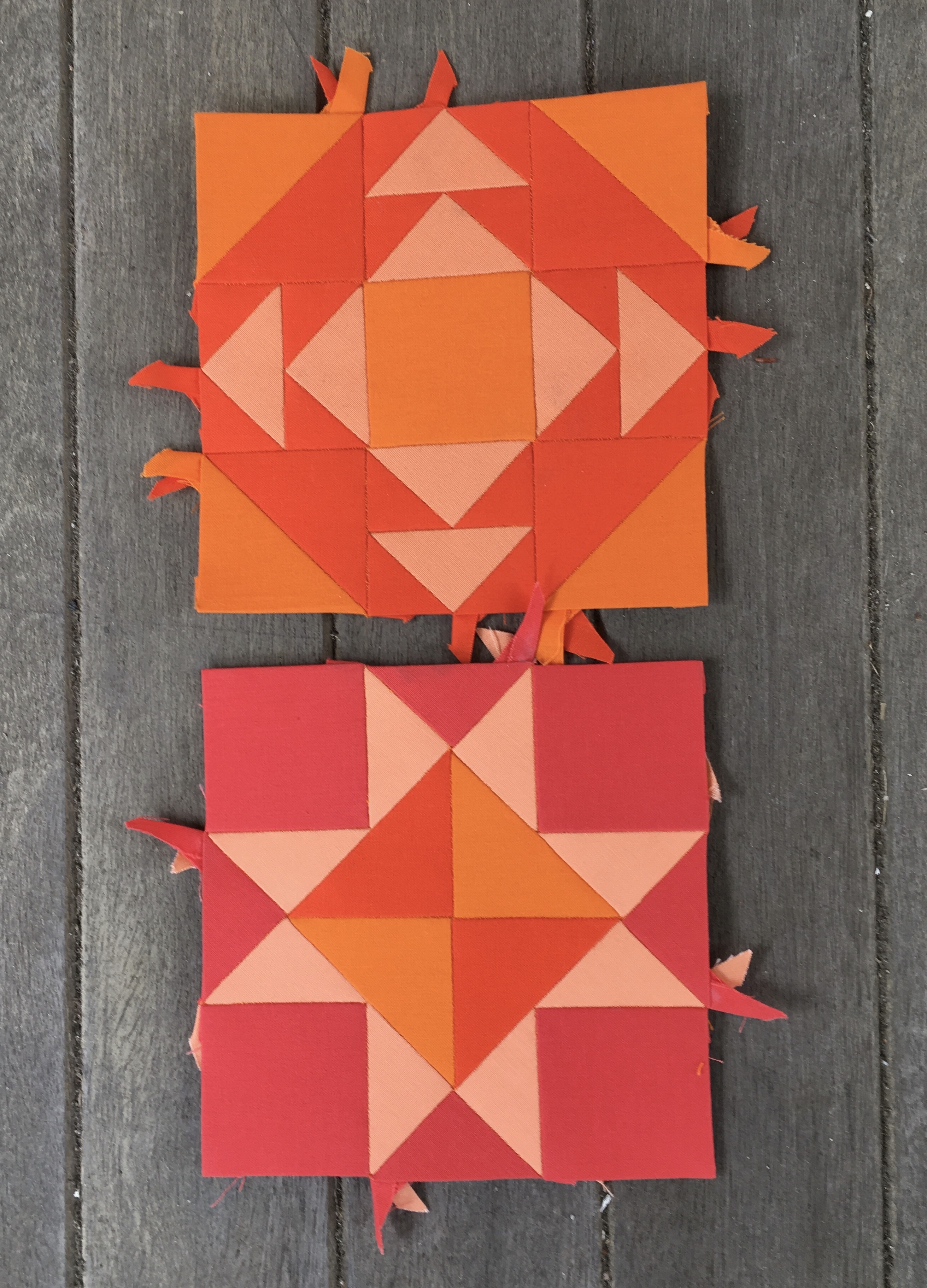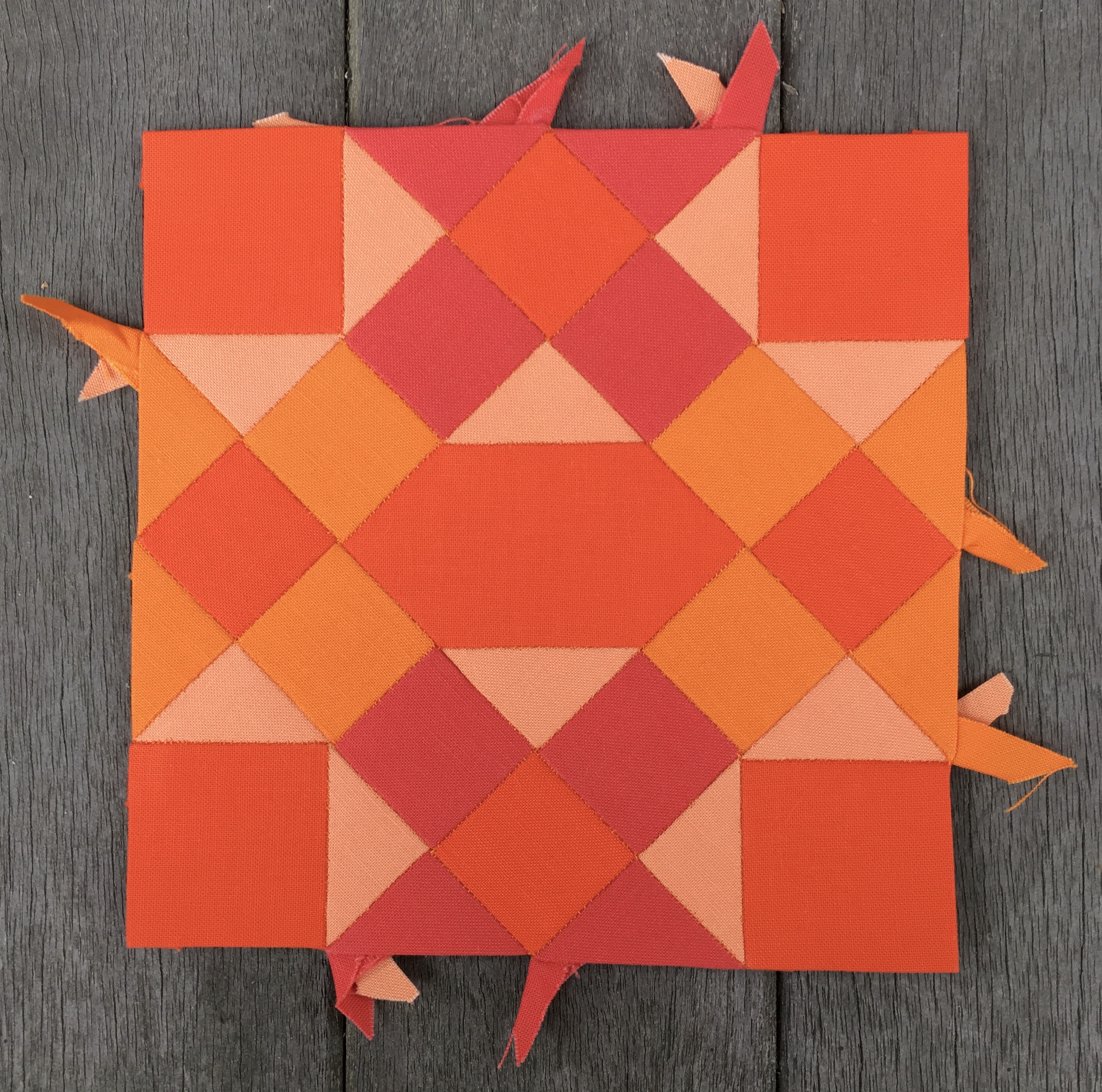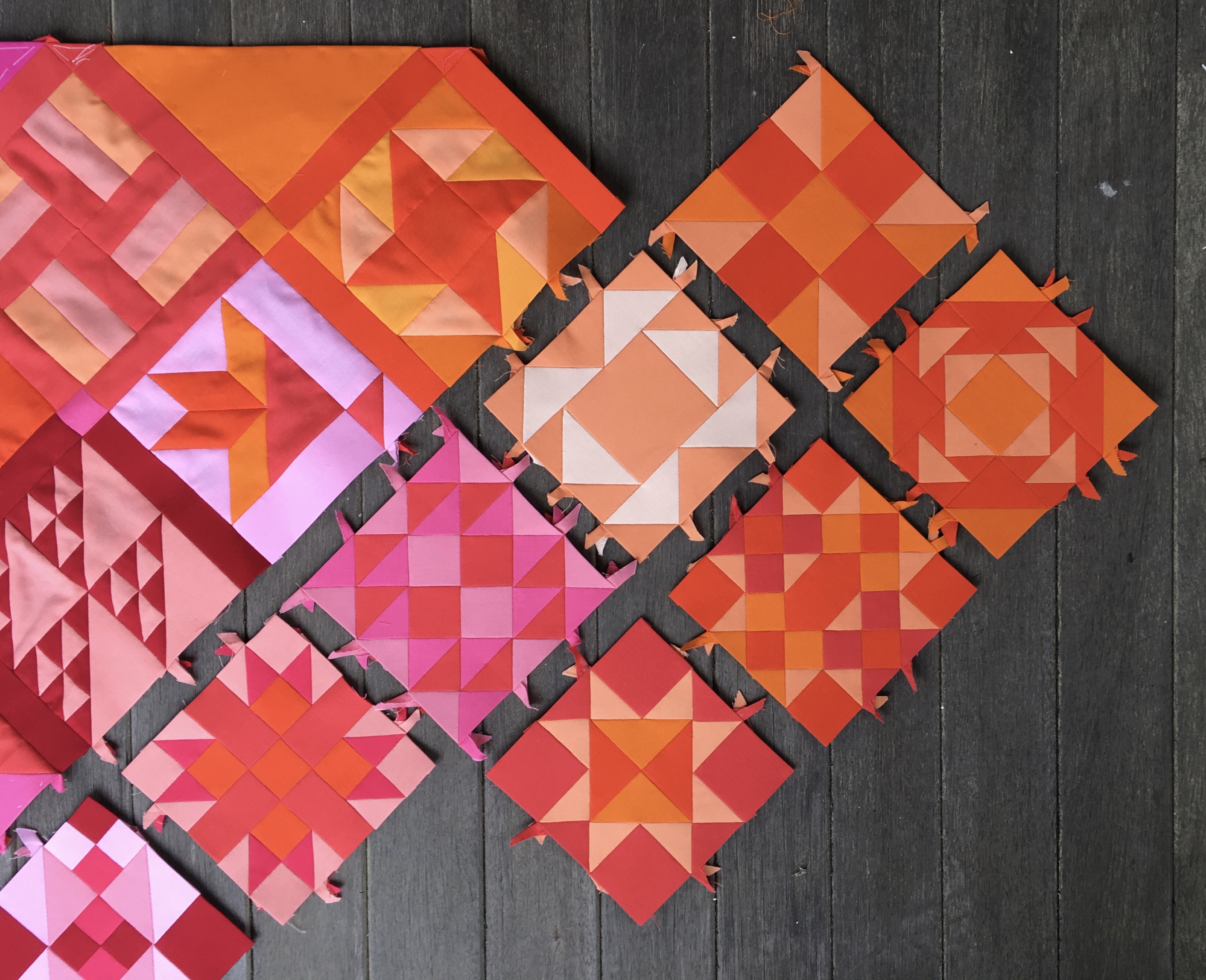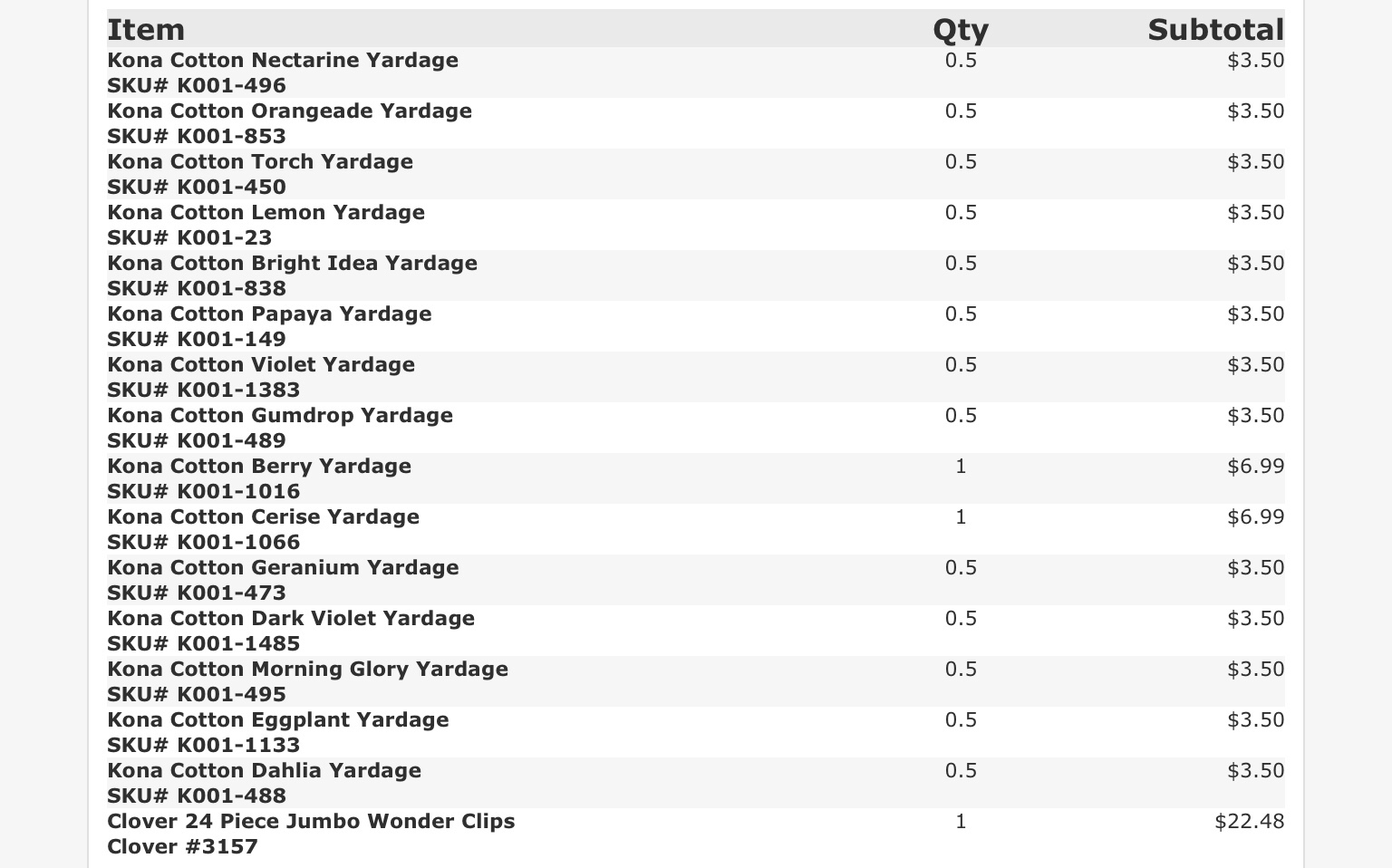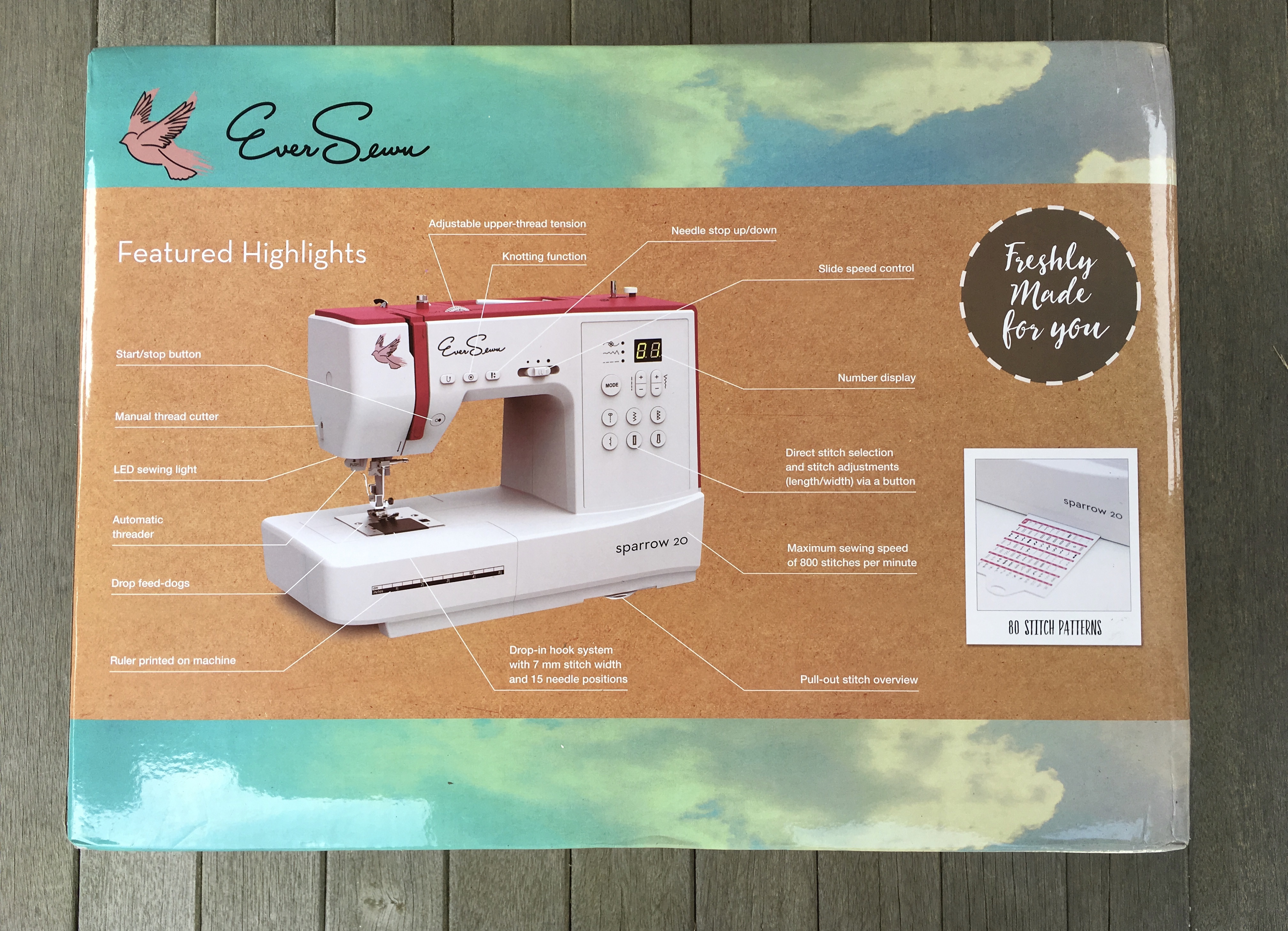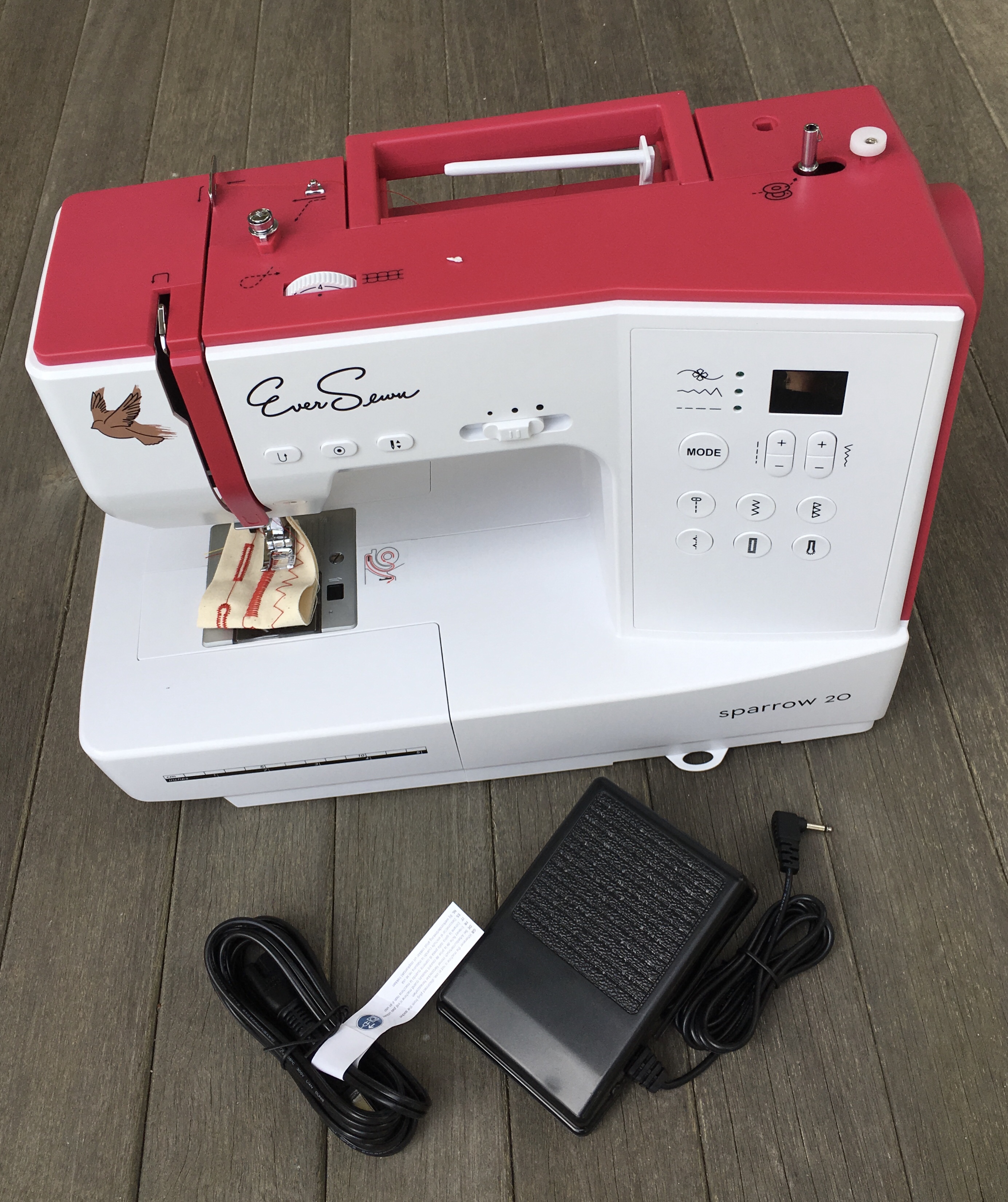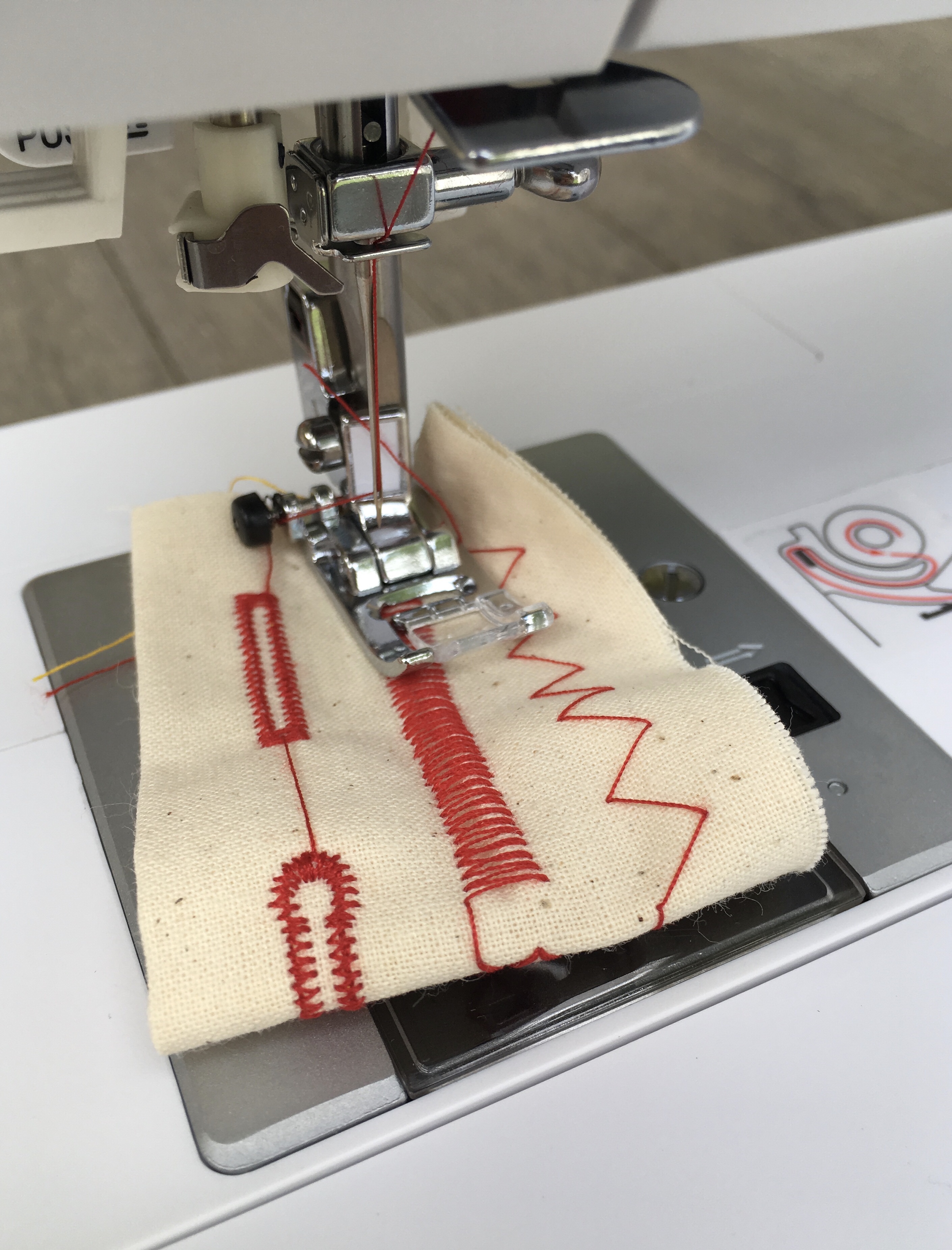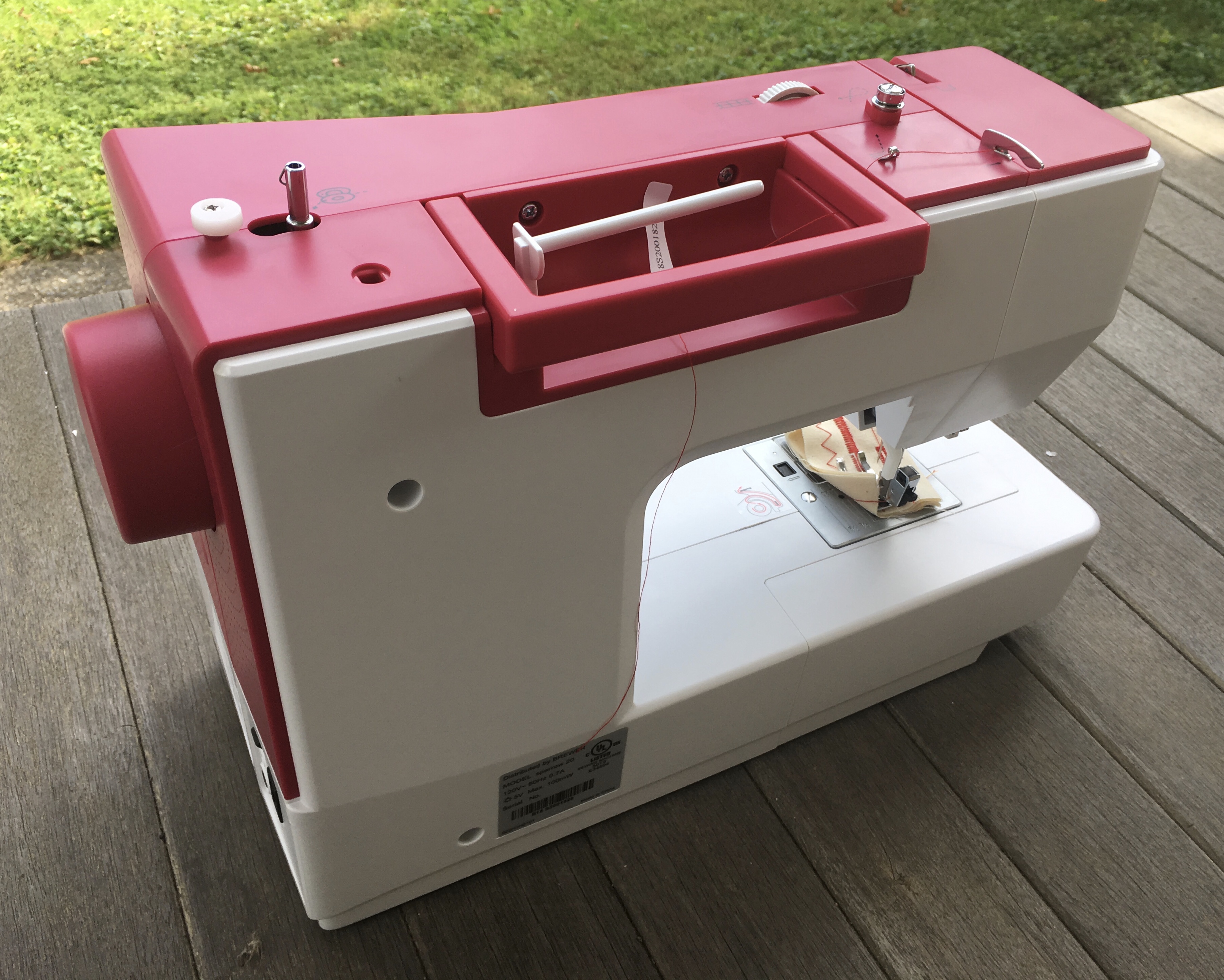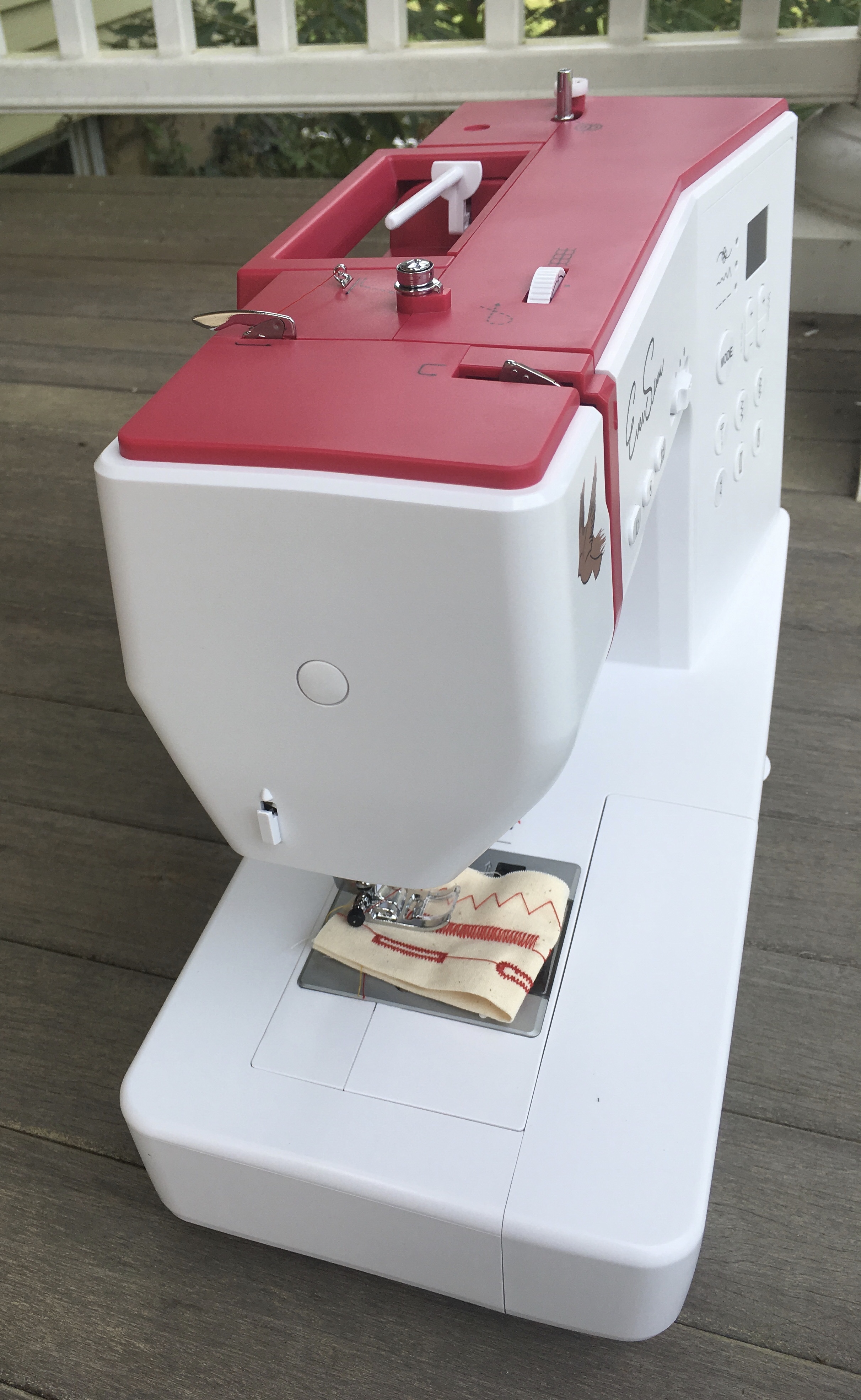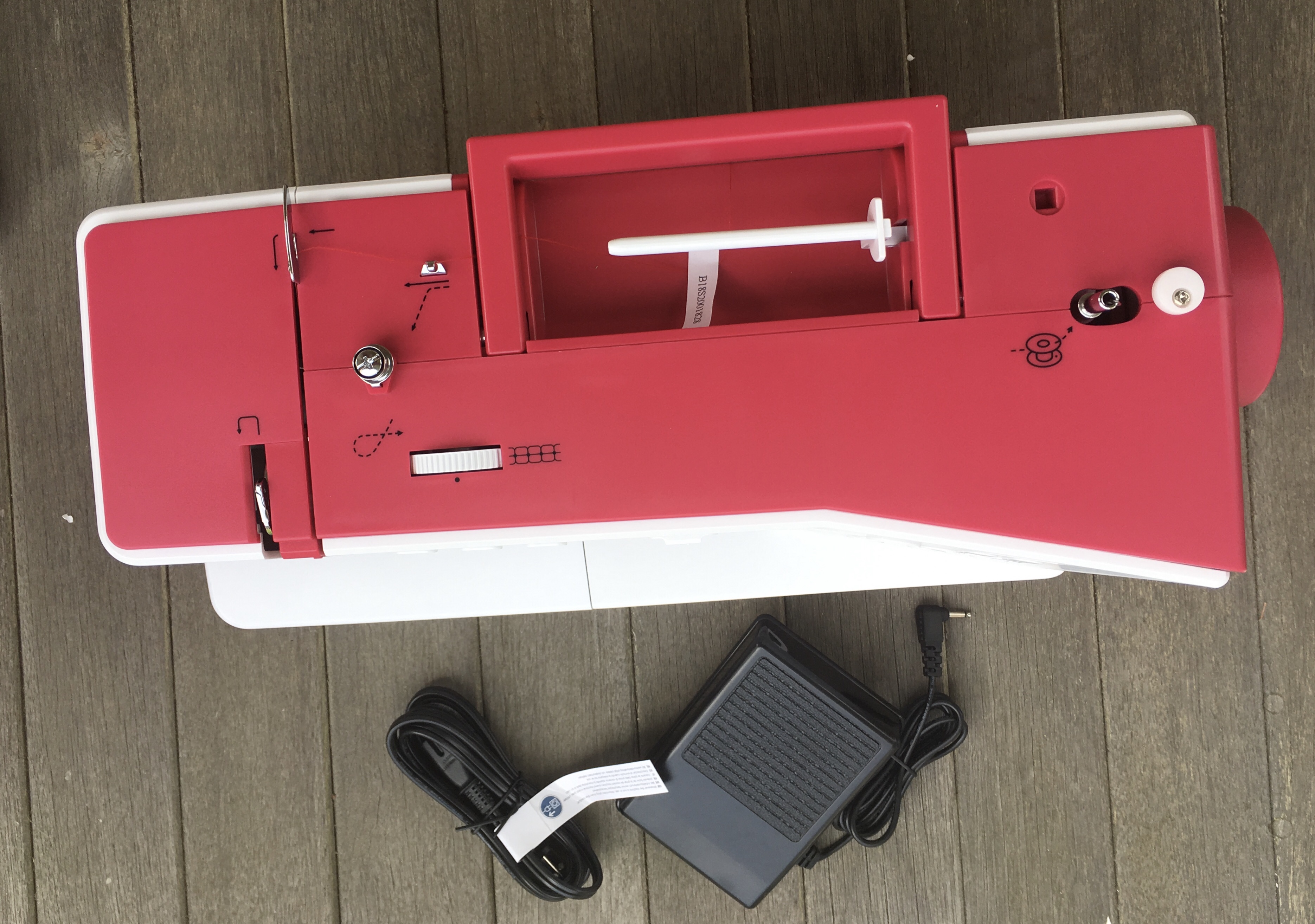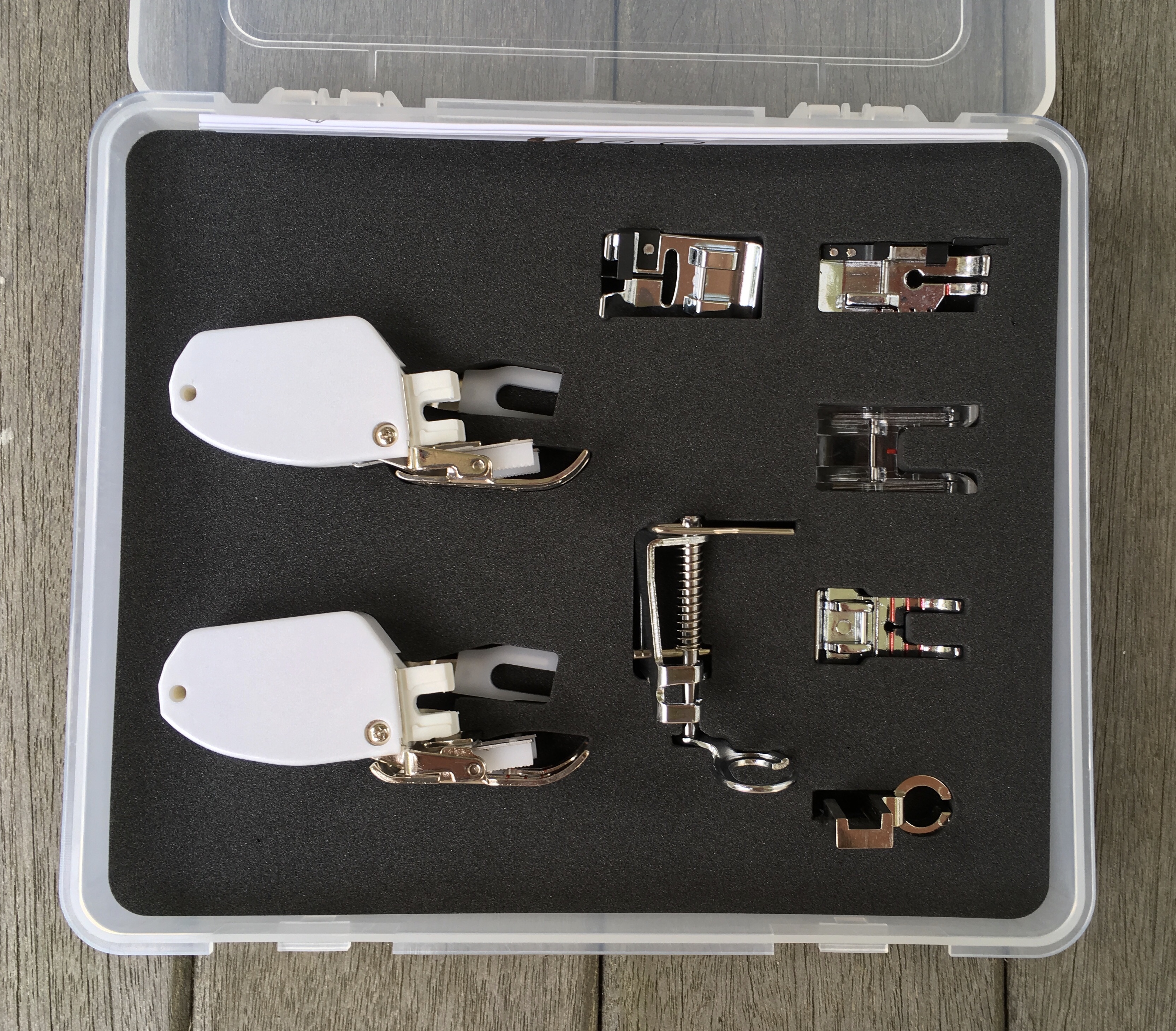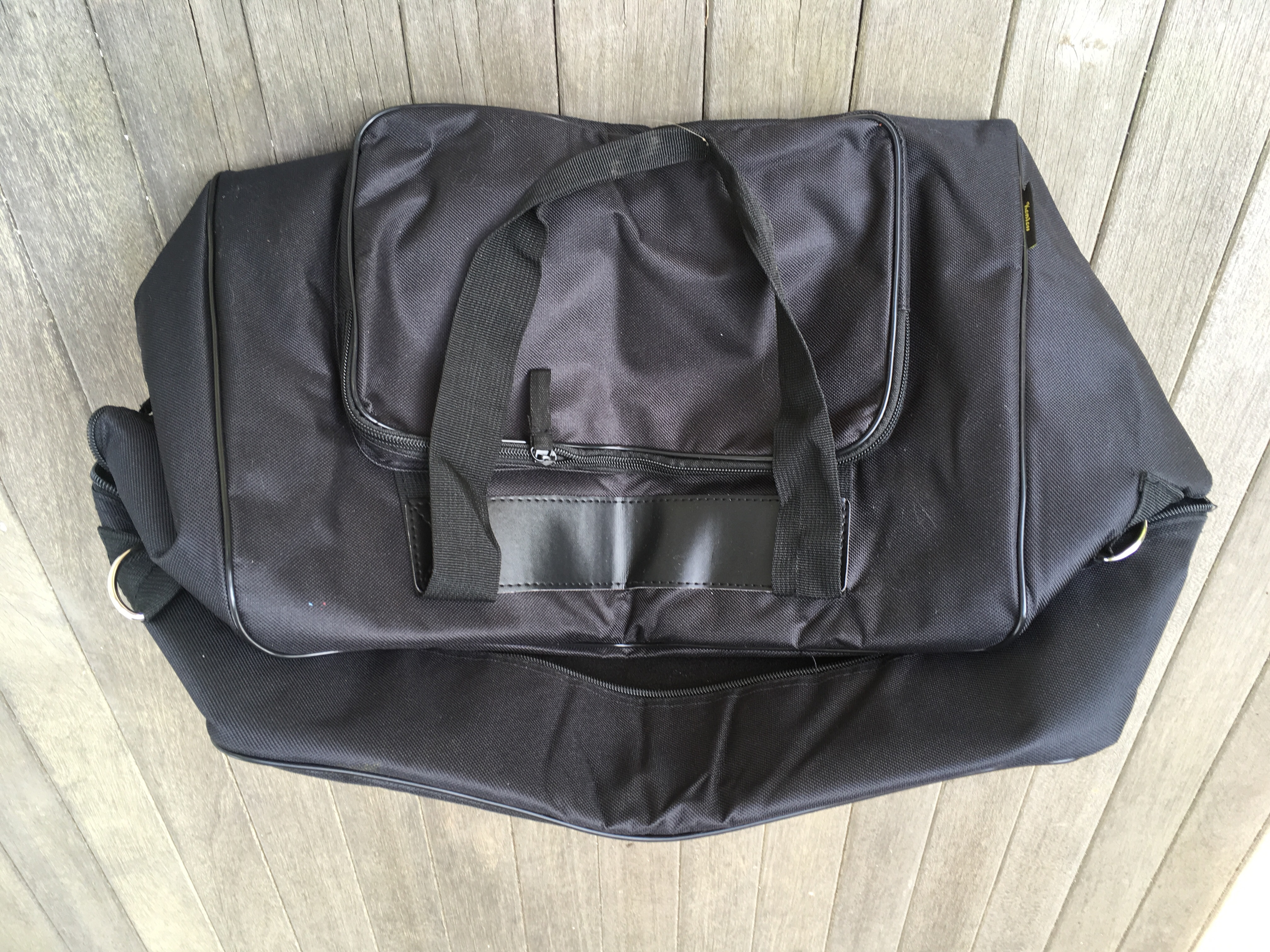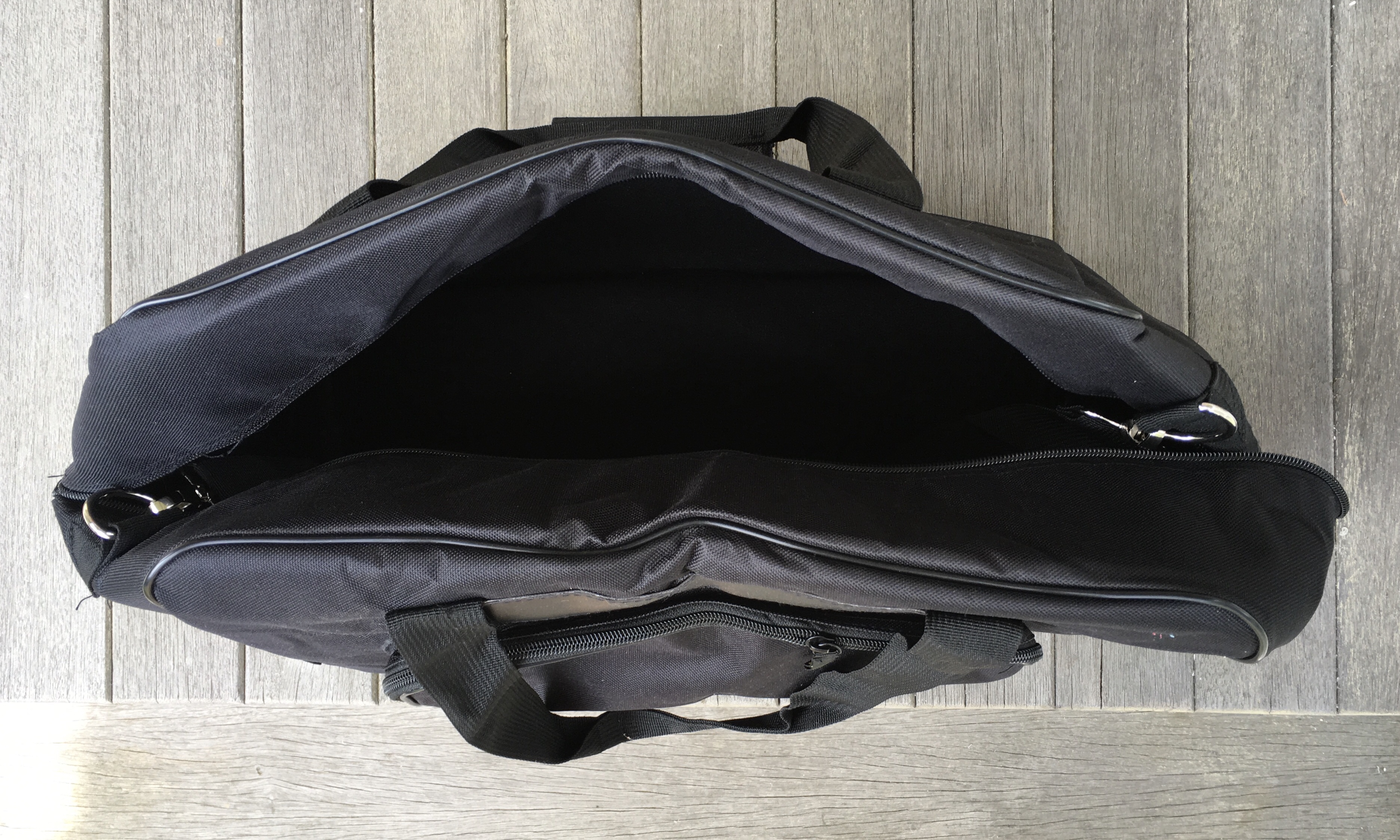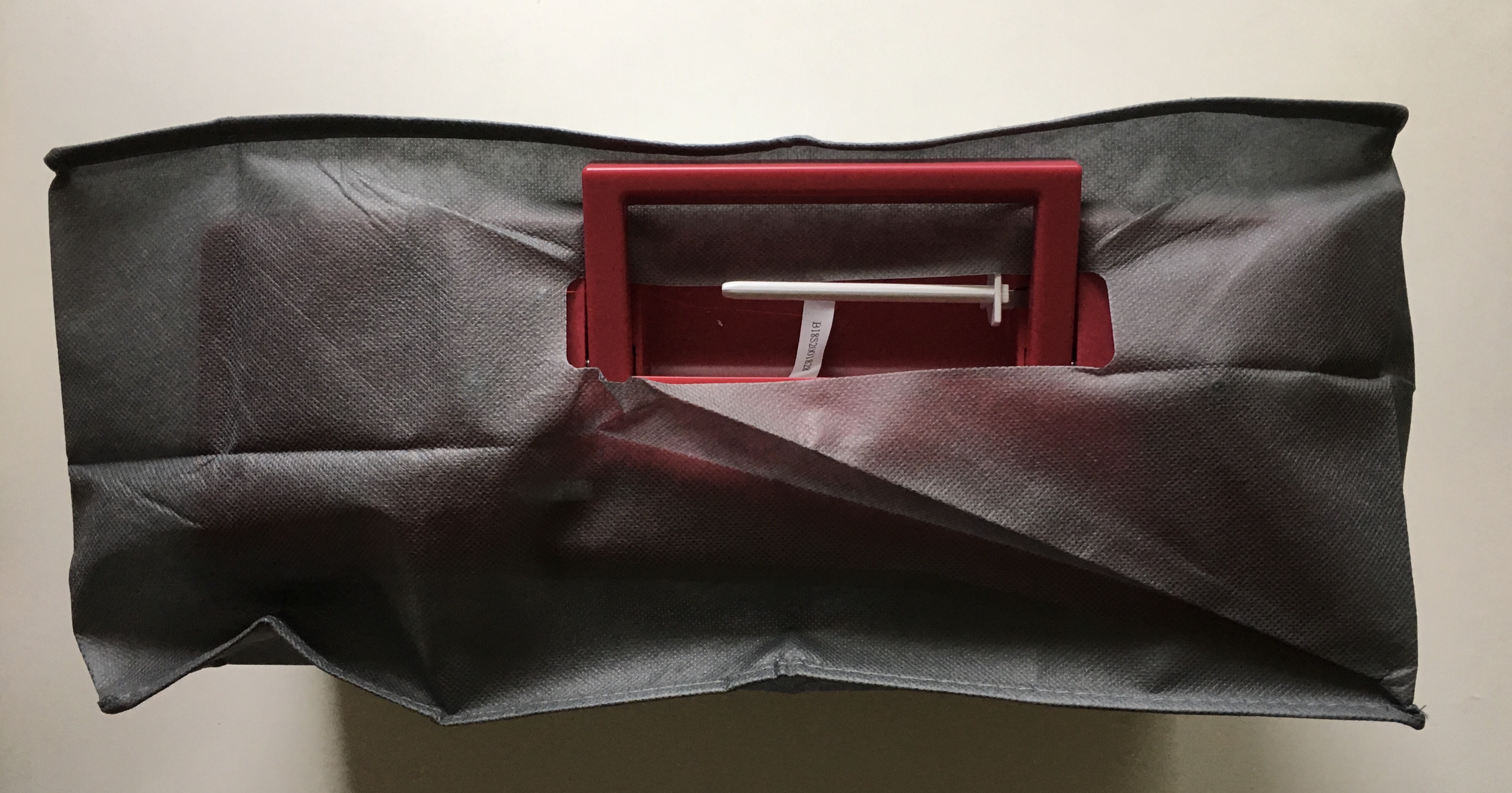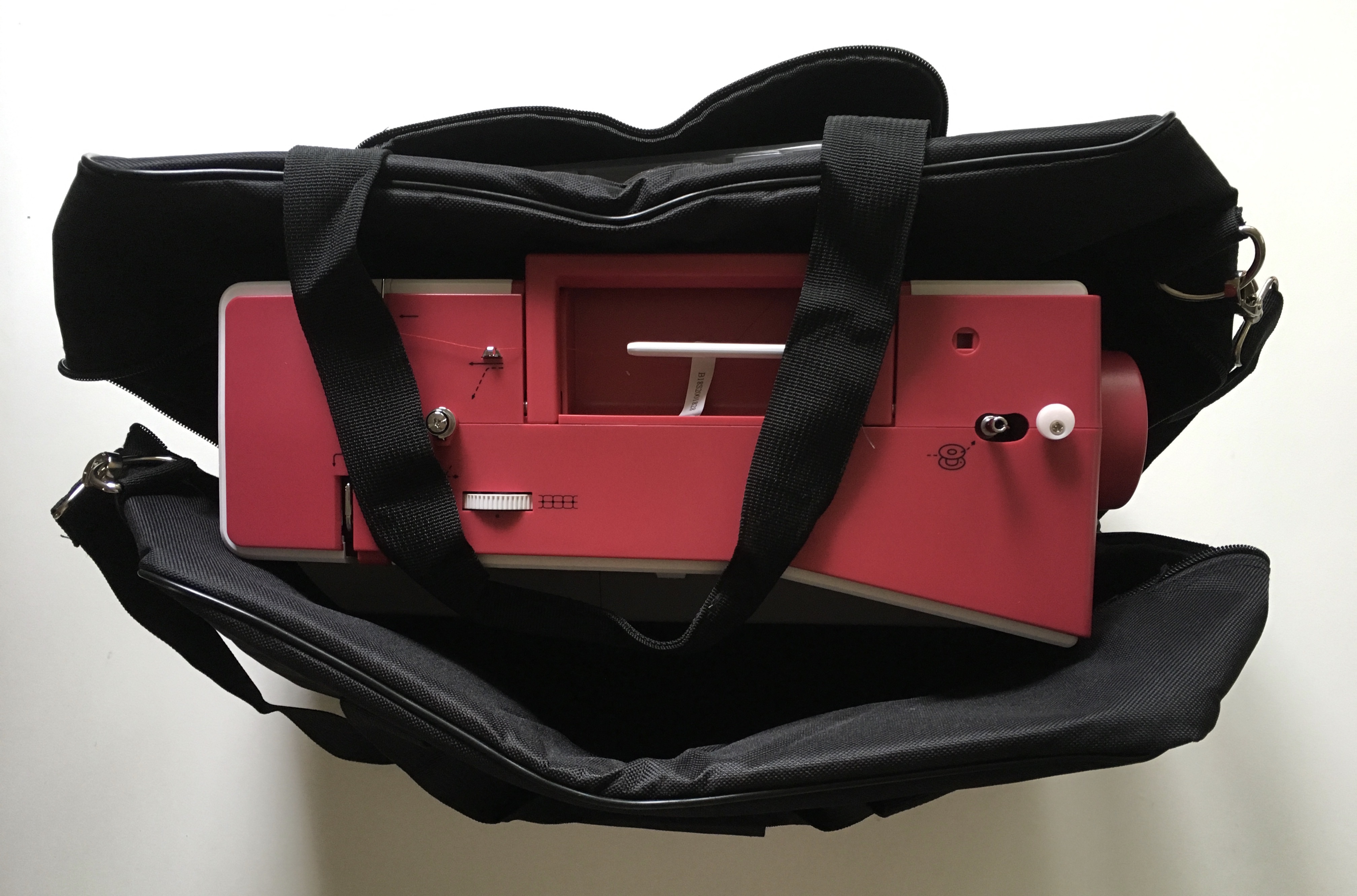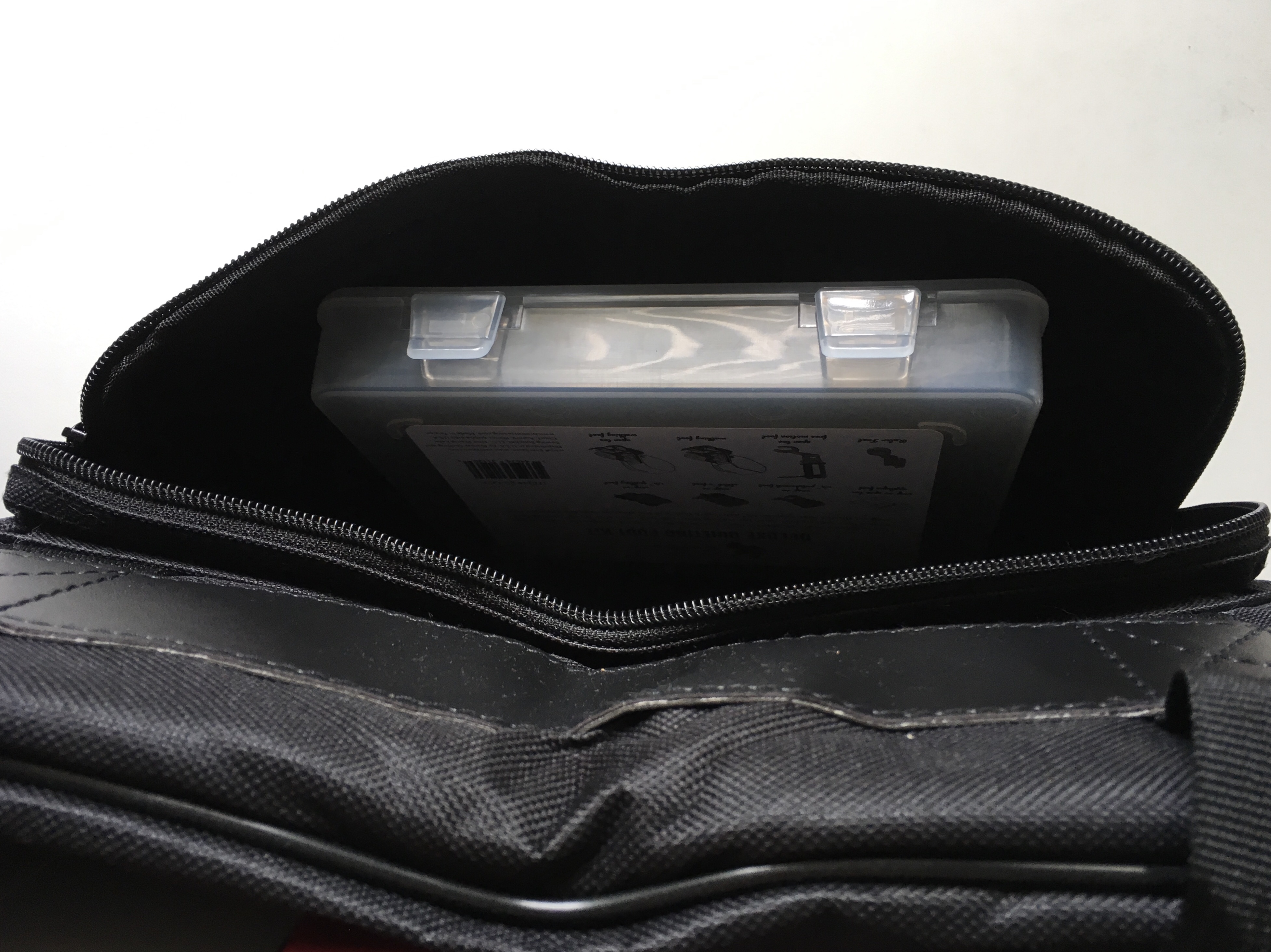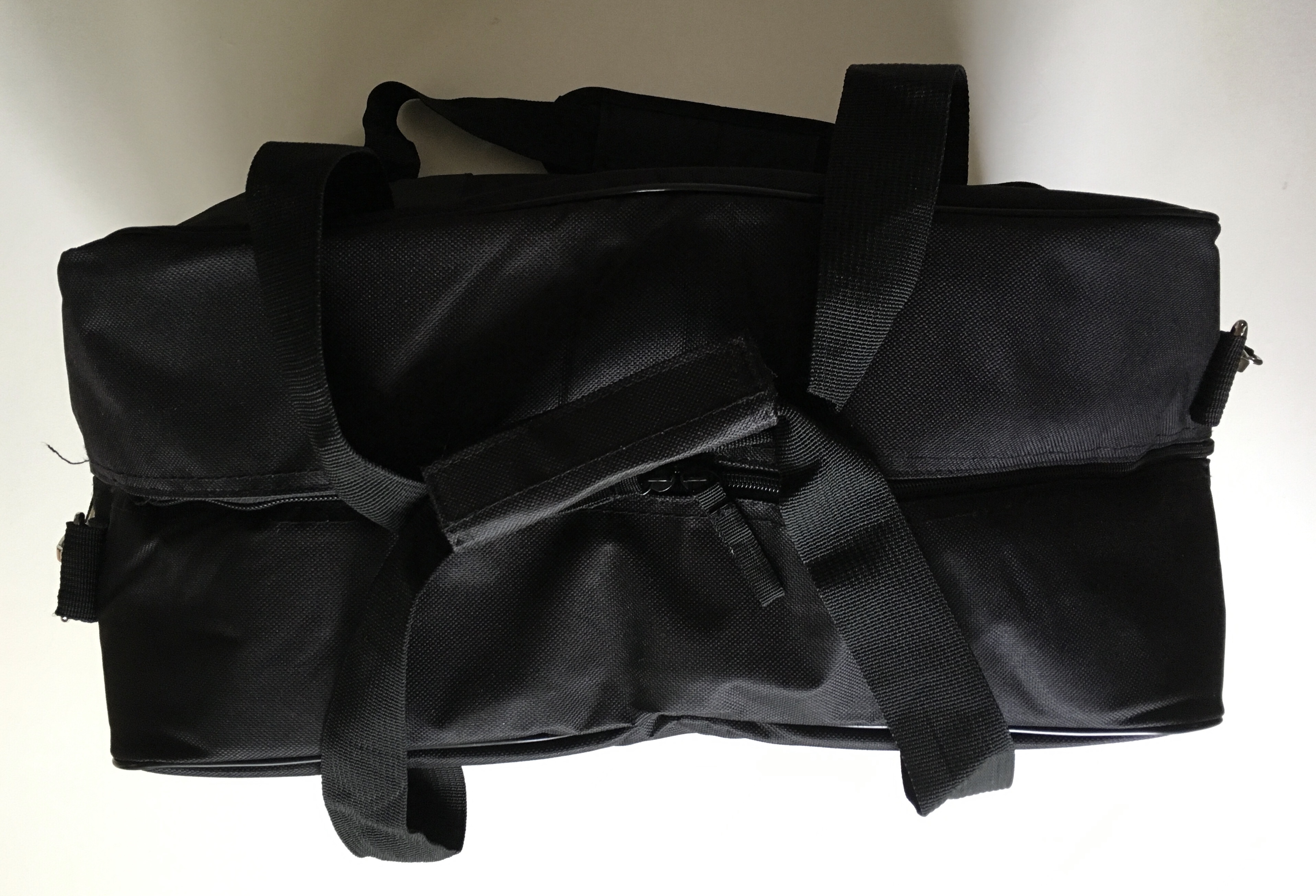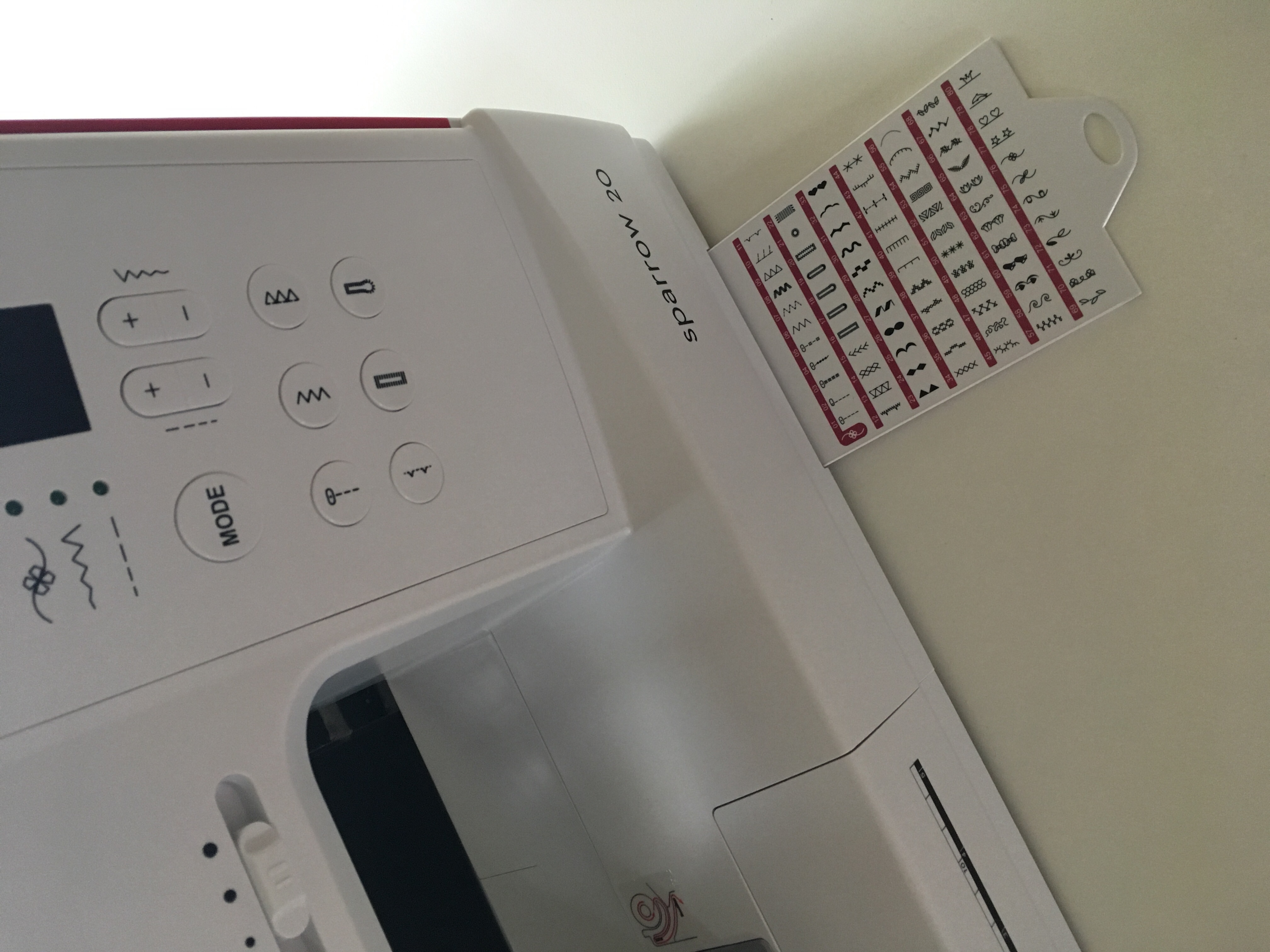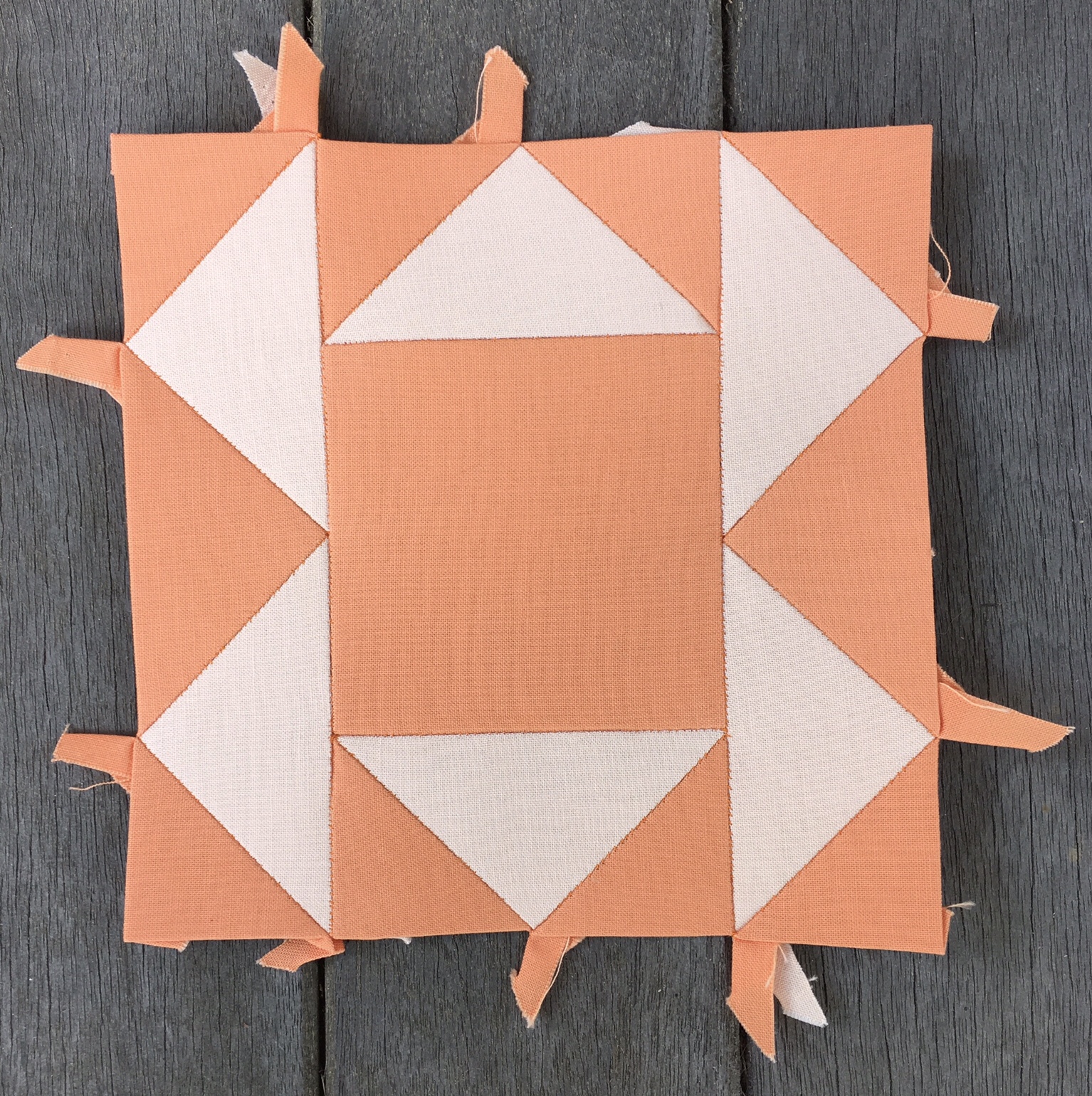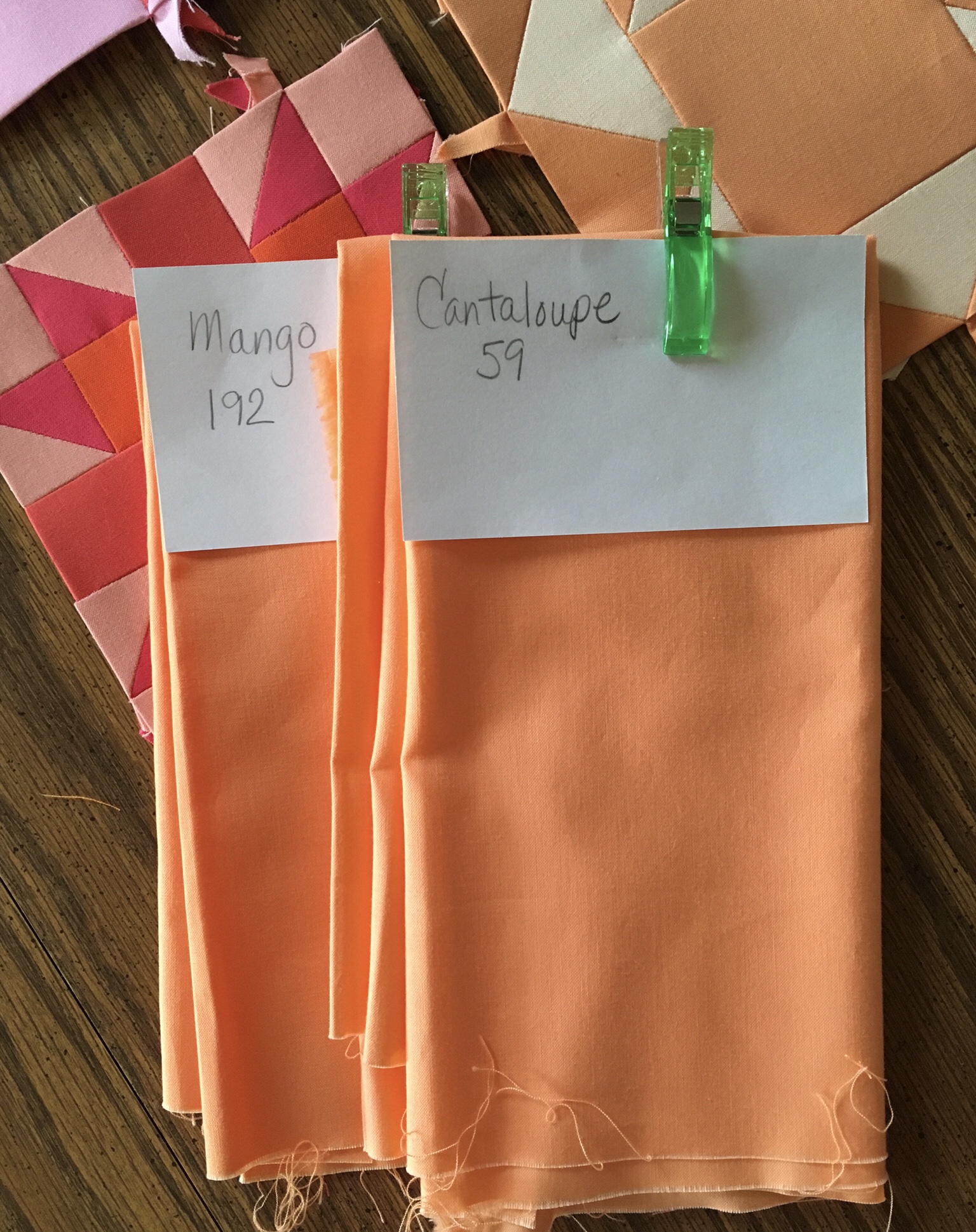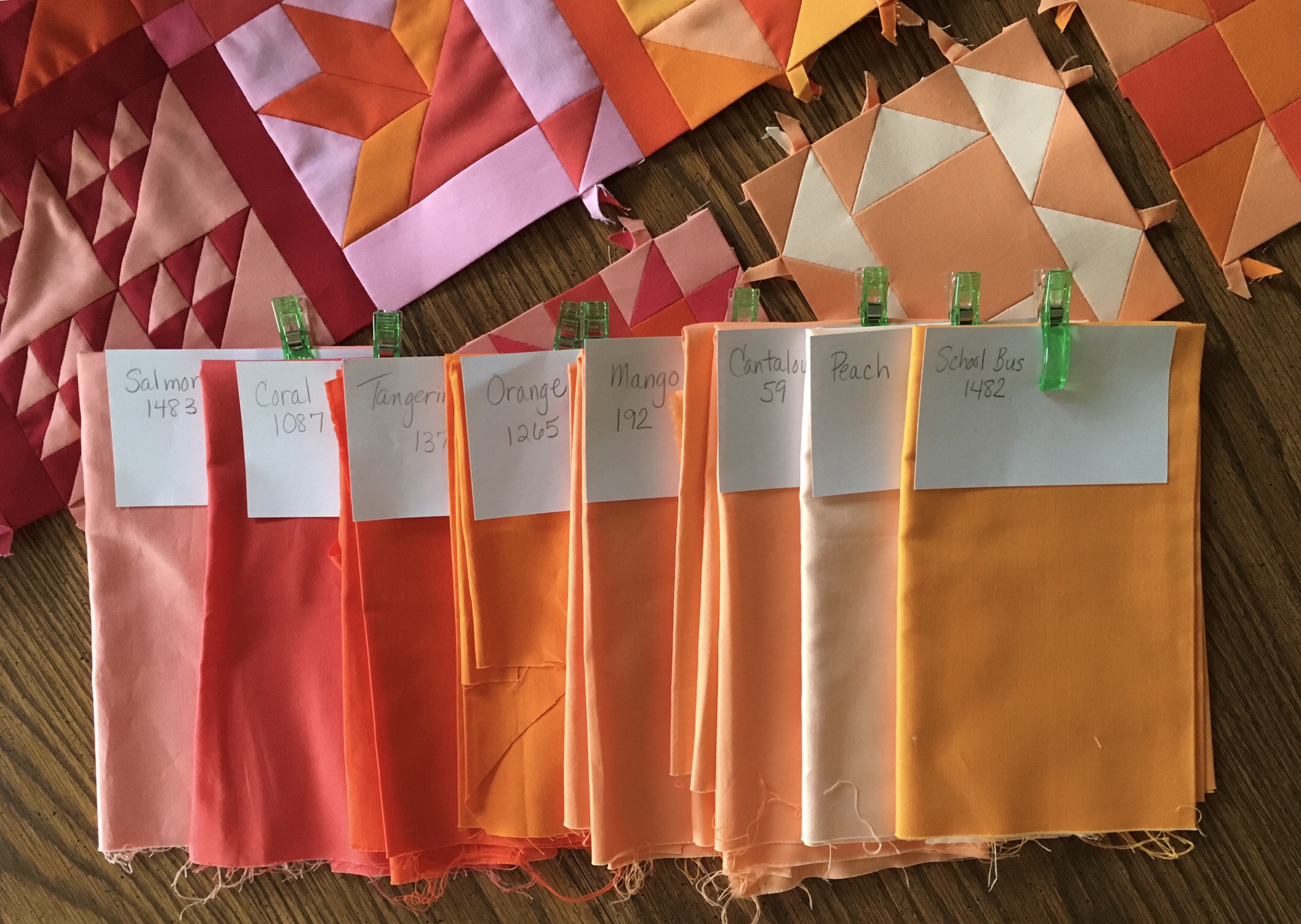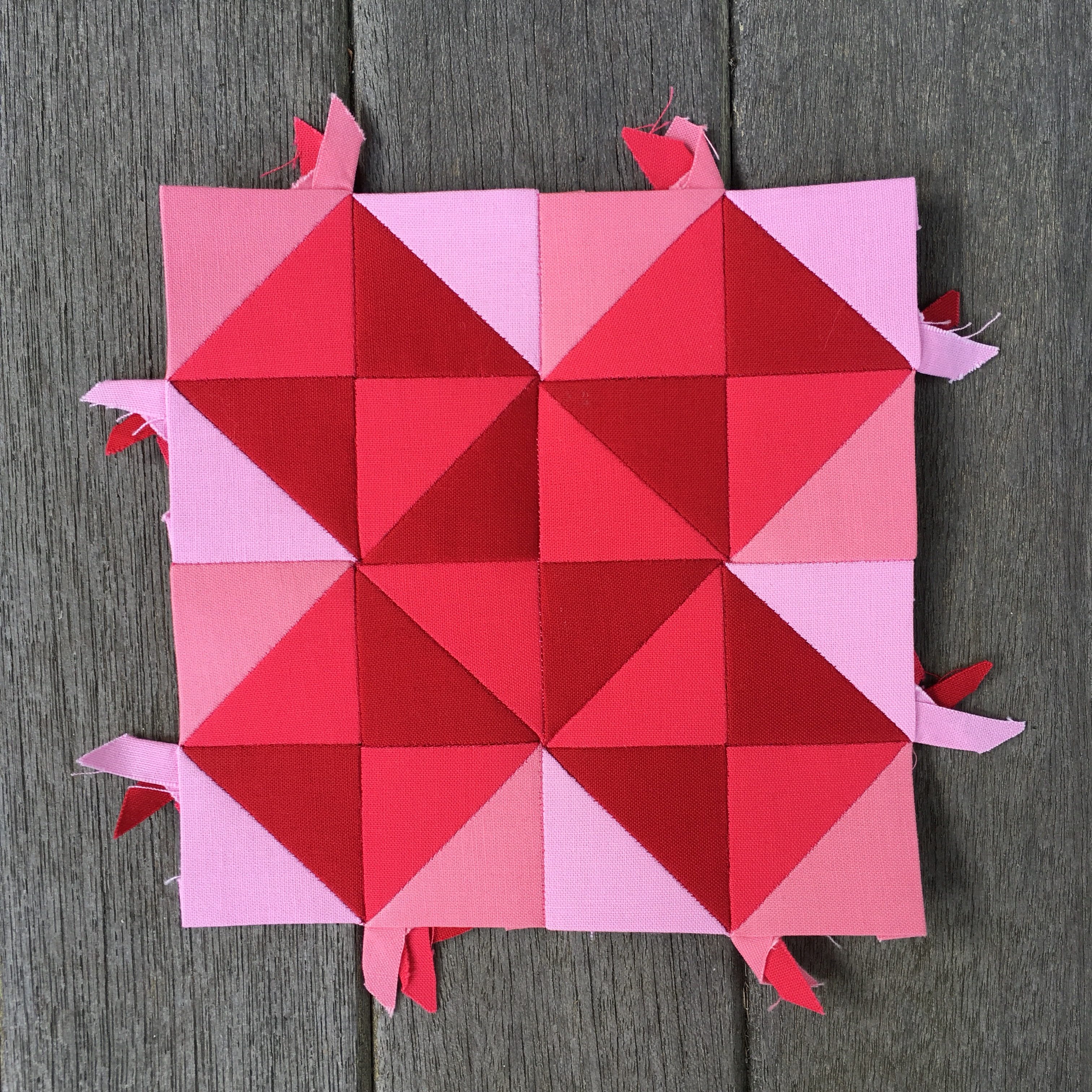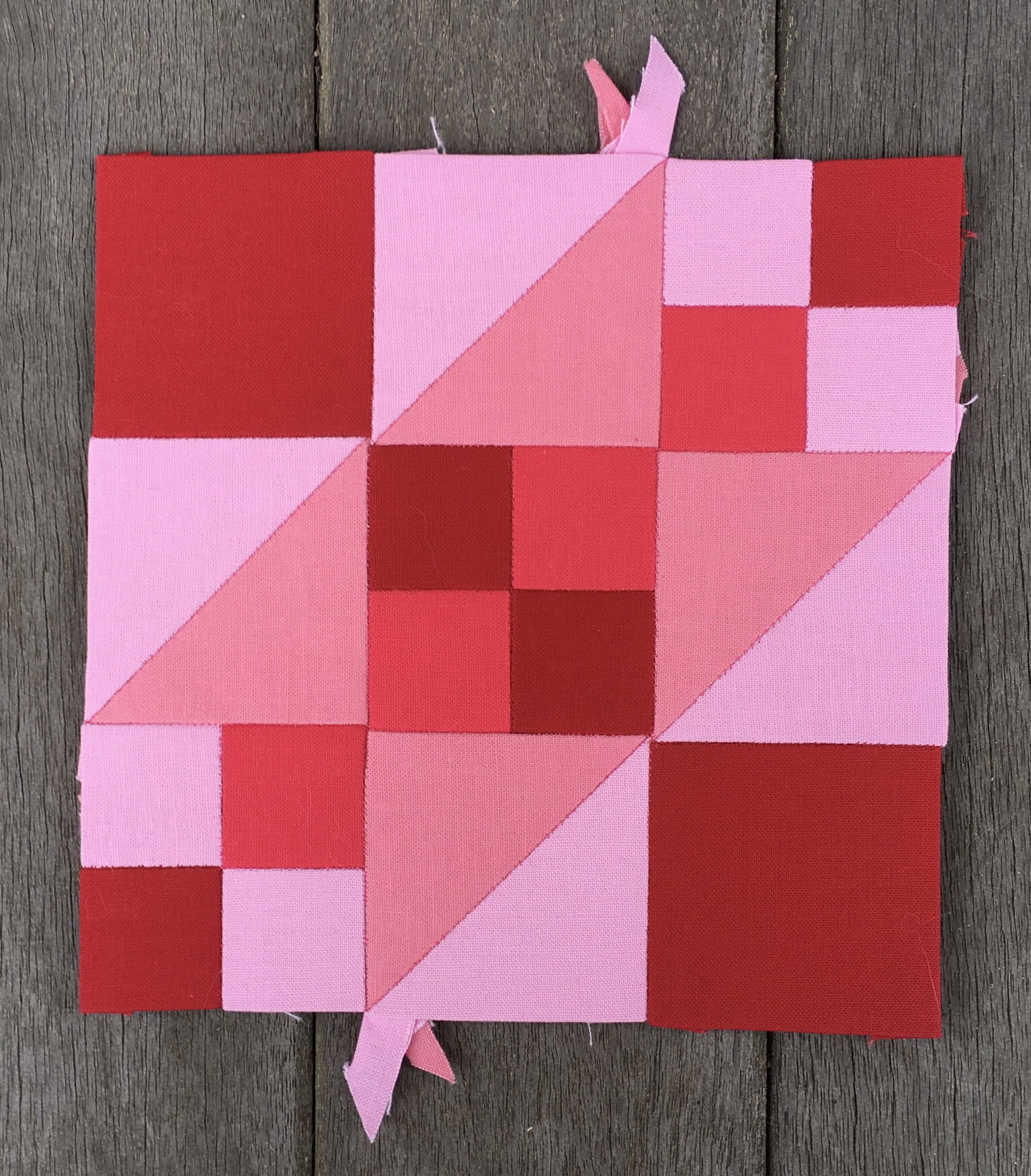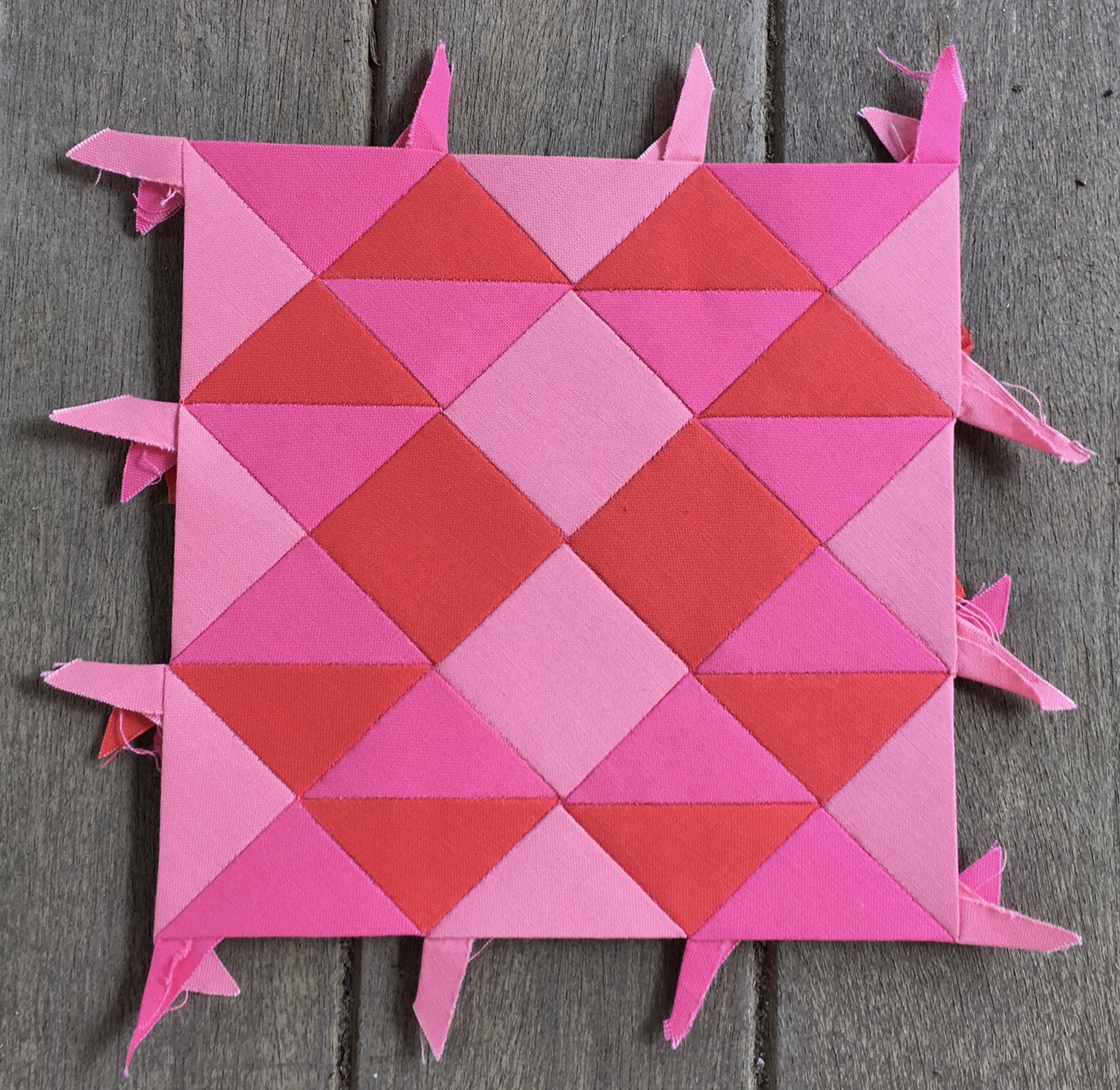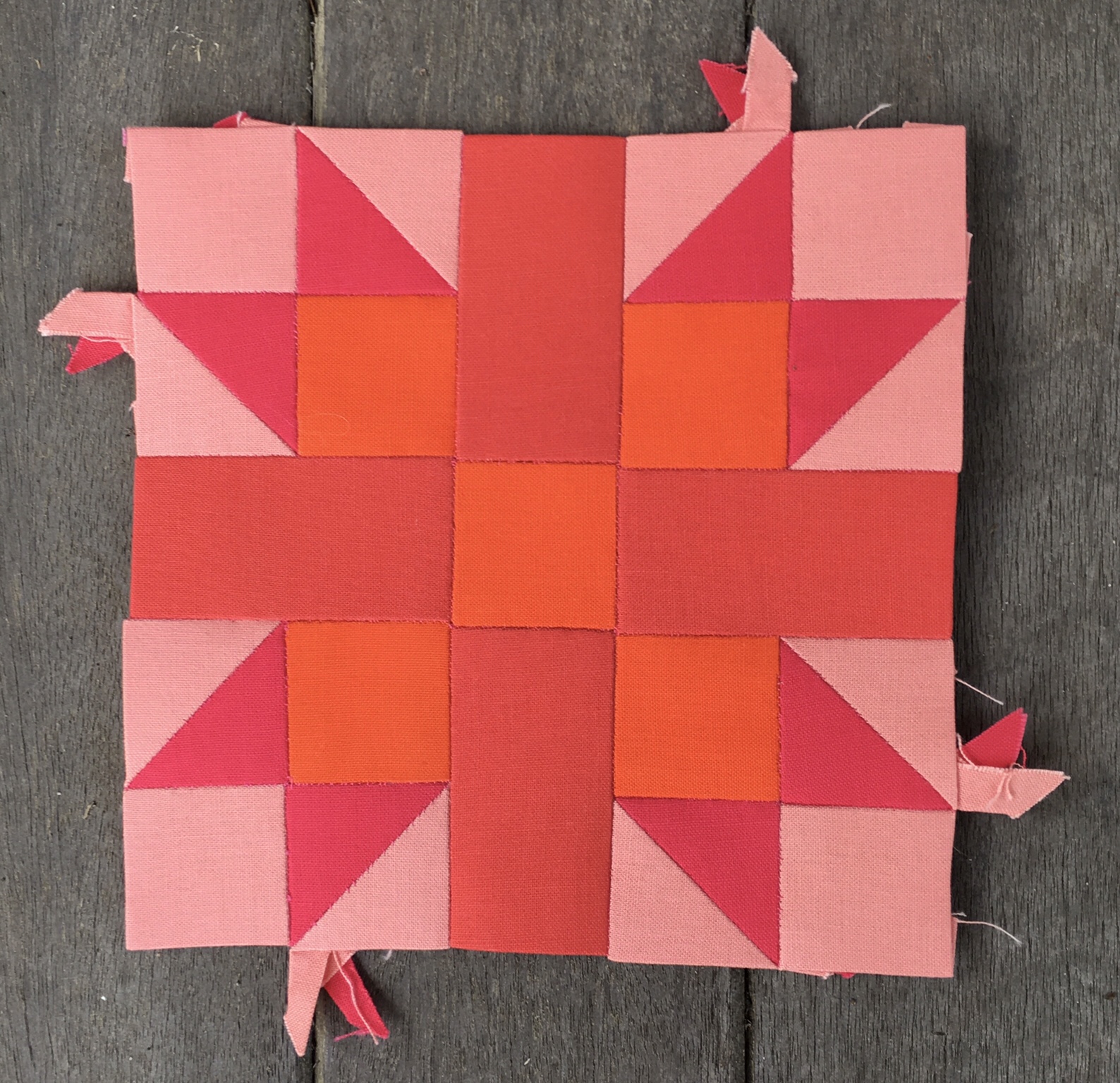I spent last weekend at the Central Jersey Modern Quilt Guild Retreat at the Hyatt House in Branchburg, New Jersey. This is my fourth year at this retreat and my fifth year with the guild.
I prepared for this retreat by finishing most of the blocks necessary for the fifth row of my Farmer’s Wife Quilt. I also organized papers for my violet area incase I had a chance to do more blocks after finishing with the fifth row. My new Eversewn Sparrow 20 sewing machine got packed up so I could use her if my shoulders tensed up from too much hand work. I brought my reds, oranges, yellows, and violets with me in bins. I knew I would not need the greens or blues. I was prepared.
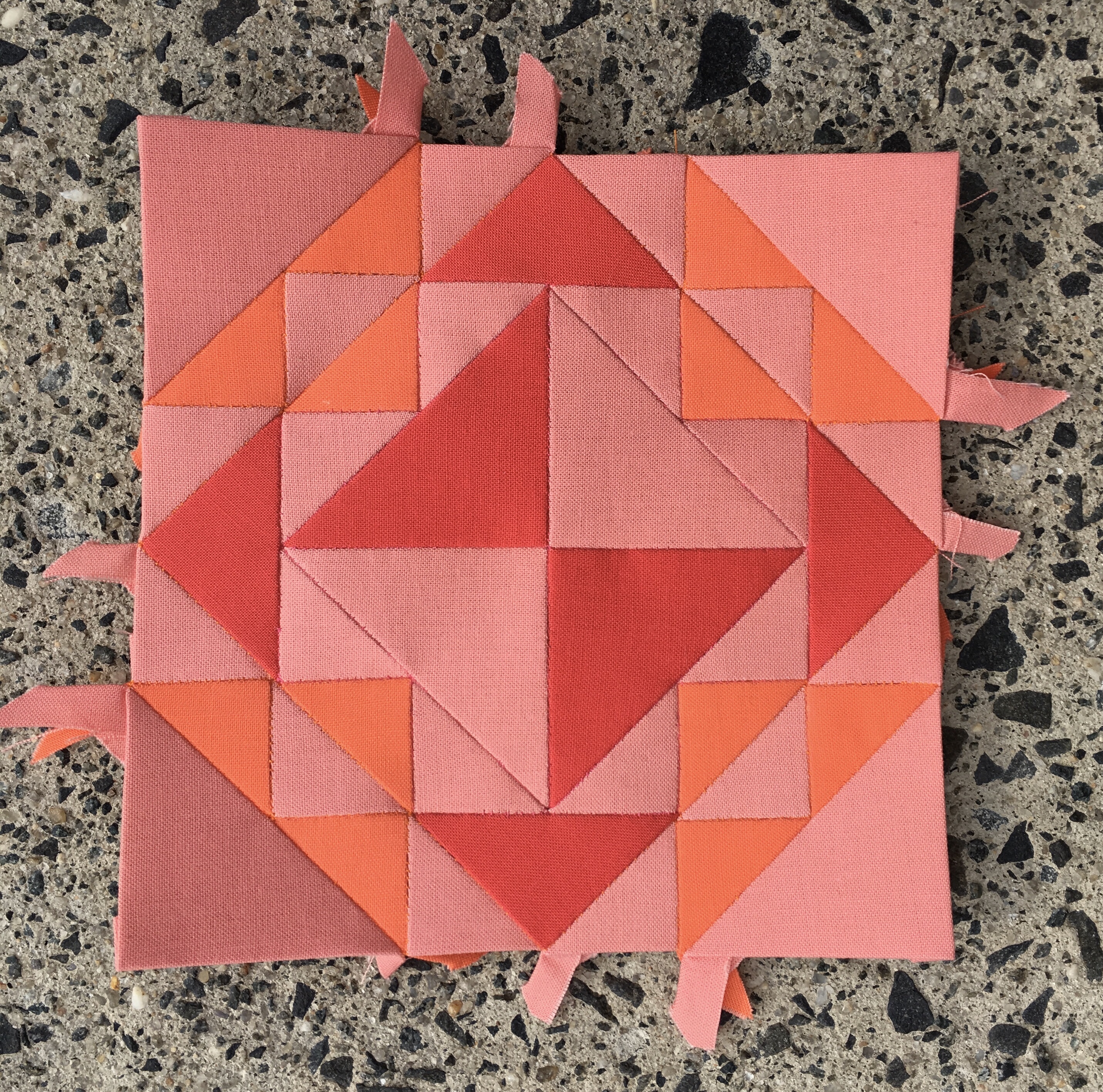
I fell short of completing #22 Corn & Beans before leaving the house. So my first order of business was to complete that block and document her. I did not have access to my usual staging area, my front porch, so I used the concrete stoop leading to the outdoor entrance right next to our work room. I kind of like the color and texture of this staging area.
After that I placed my blocks, sashing, and corner stones out, and took photos of the upcoming assembly. Well actually I did some assembly first as you can see from the first photo.
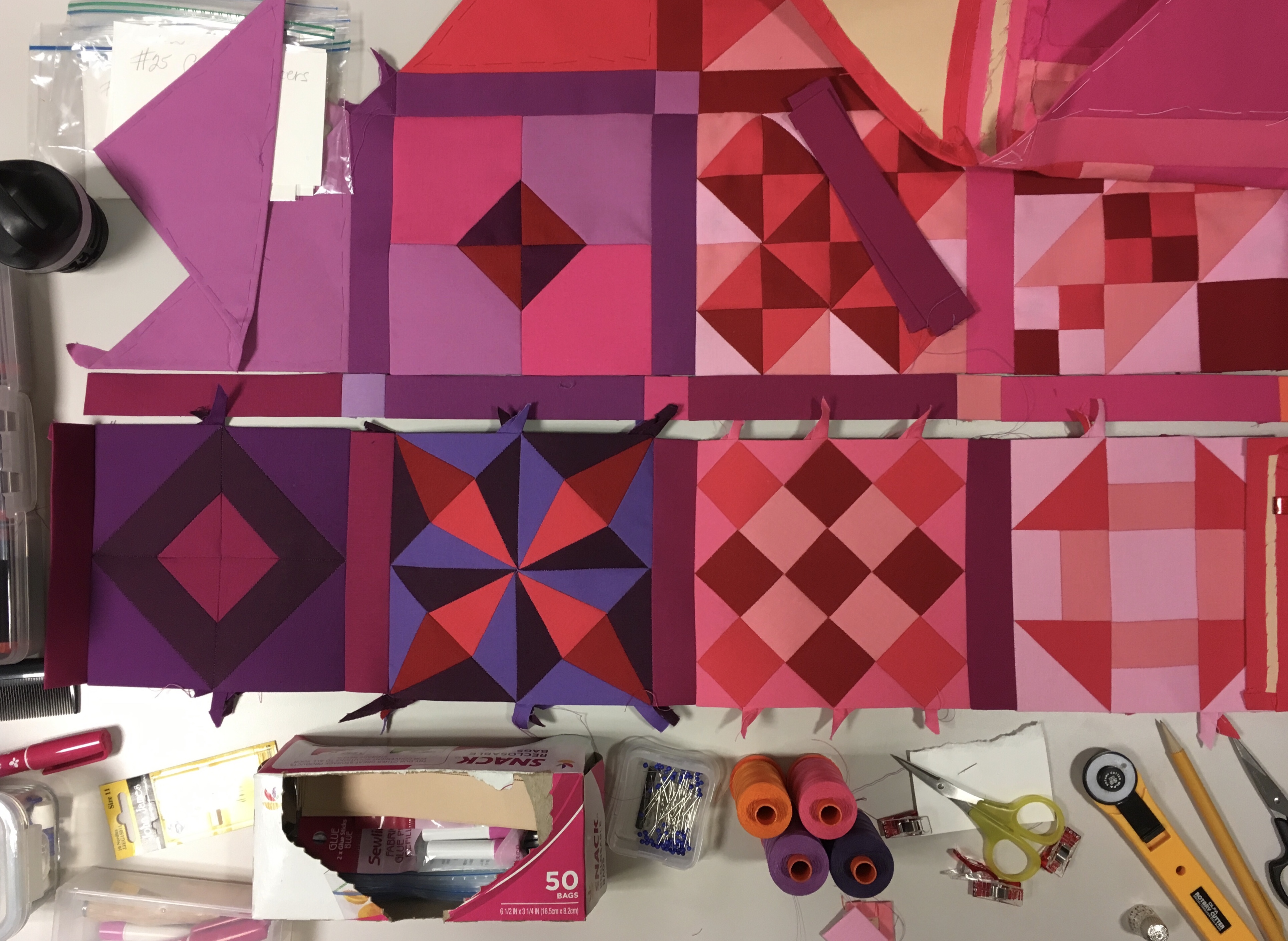
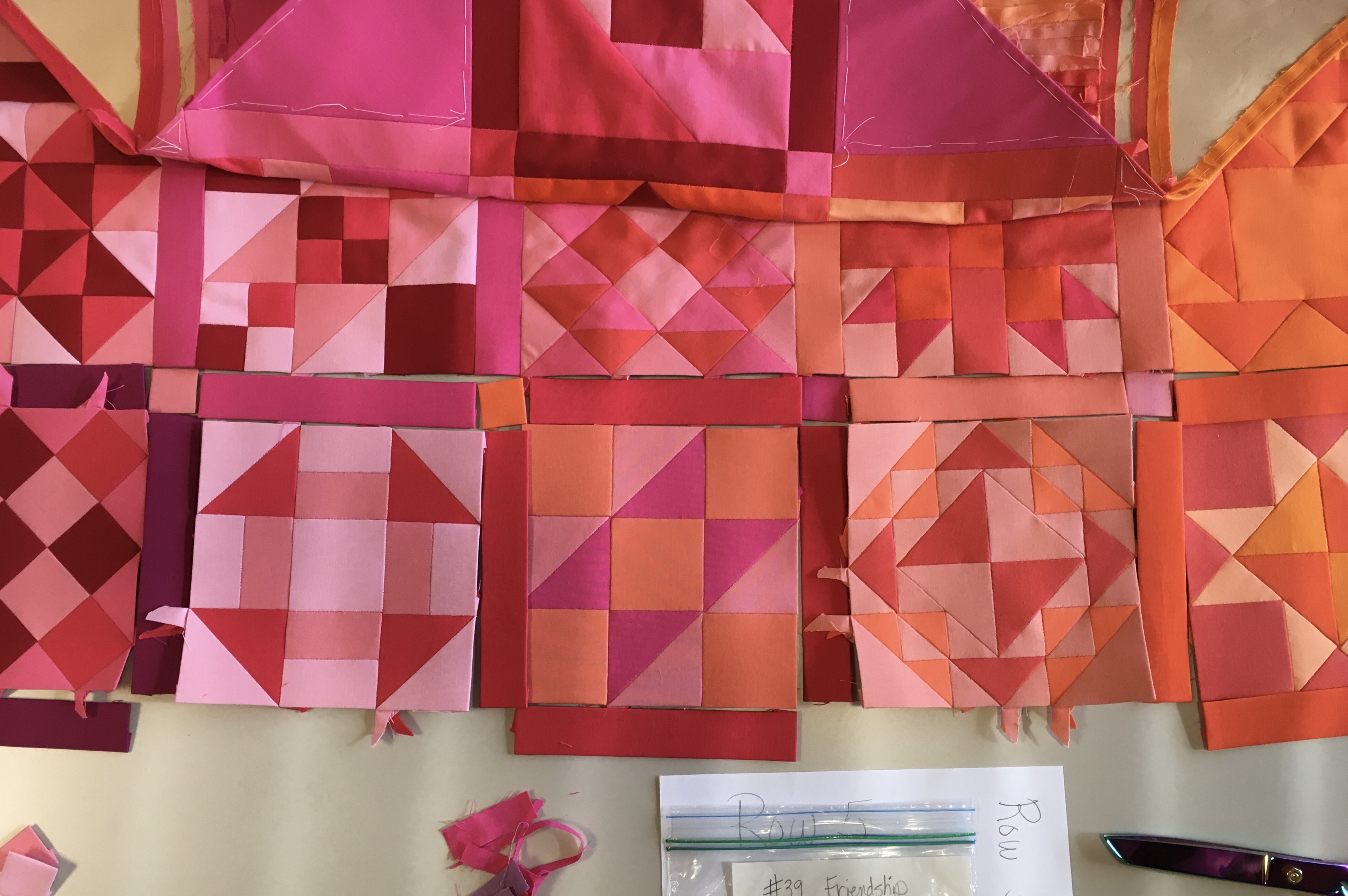

By the time I took these photos mid day light was streaming through semi closed blinds, clearly visible in the last photo.
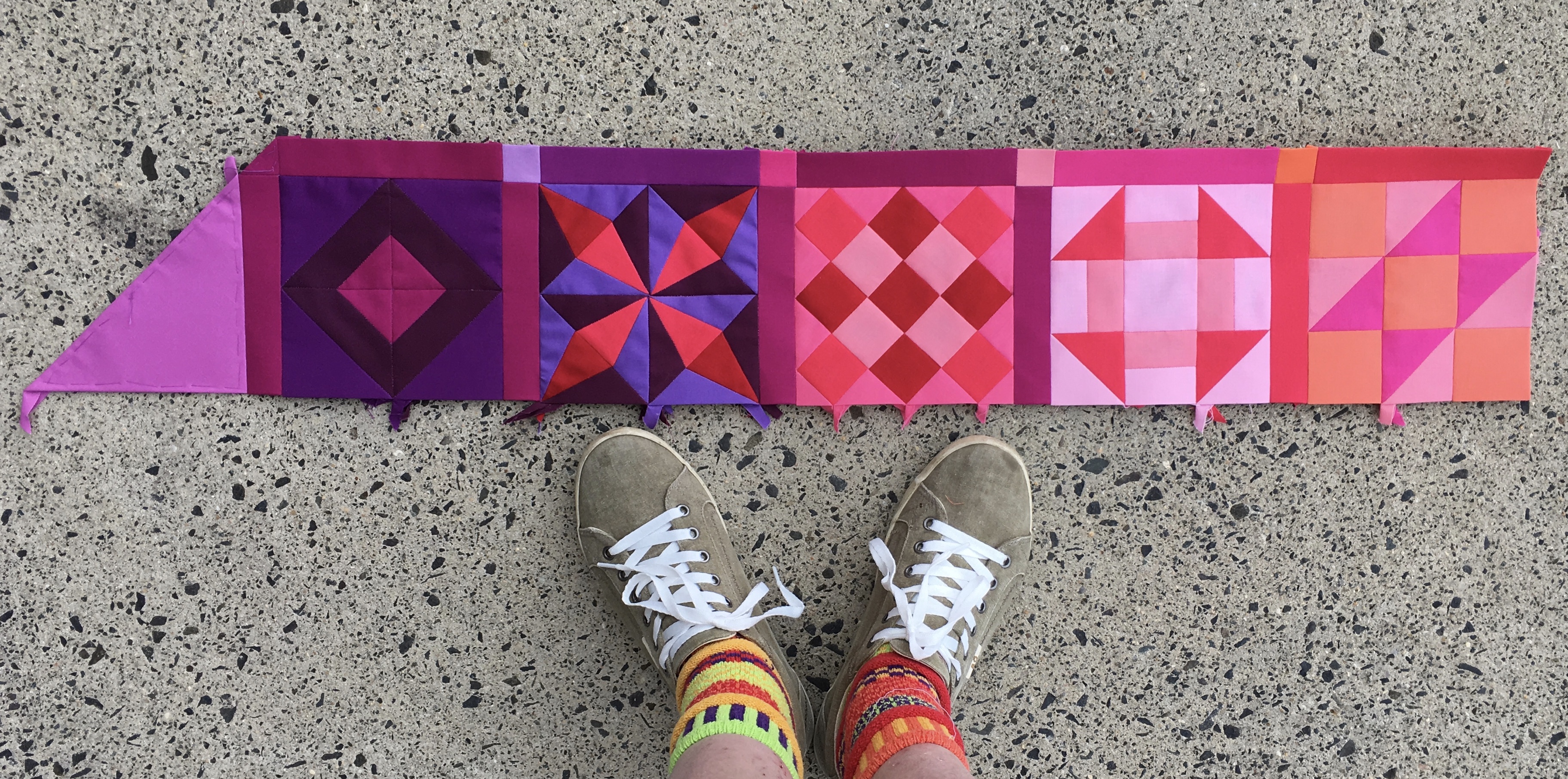
I labored long and hard on the first five blocks of the fifth row. They were completed by the end of the first day. I rested and at the beginning of the second day I documented my work. This is starting to sound biblical.
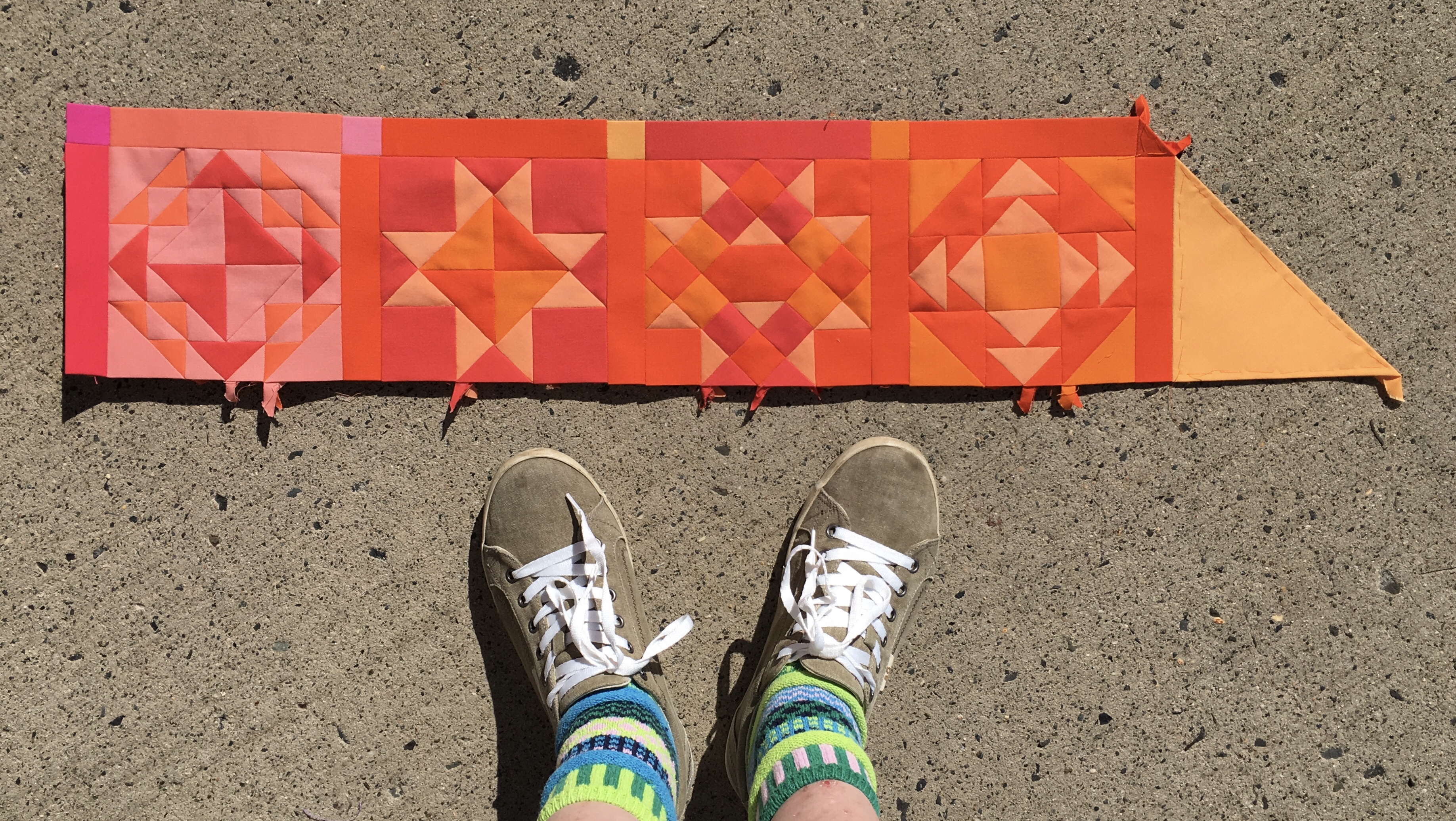
On the second day I assembled the last four blocks of the fifth row. I managed to finish that work, and document it, in mid day glaring light. I should have waited until later in the day to take this photo, but I have learned something here. Even the concrete suffers from the strong light. You get the idea though.
Edit: I took this photo a few days after getting home.

It shows off the second half of the row better.
My initial plan was to join the two halves of row five and join the row to the body of the quilt. Remember her?
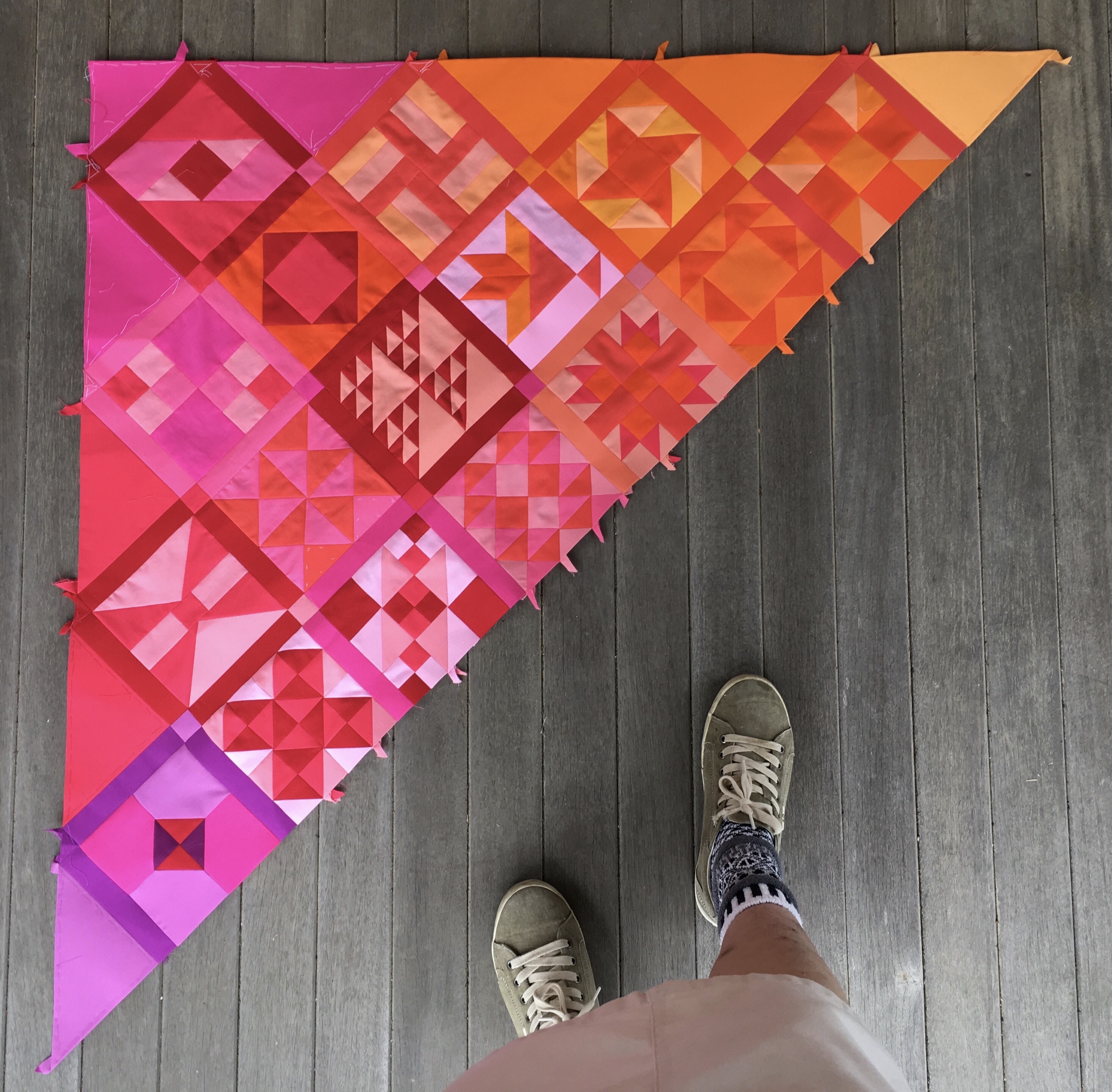
However, after nearly two days of easing sashing I decided I needed a change of pace so I moved my Sparrow front and center, opened the documentation, hooked her up and got to work getting to know her. It was our first time together.
She had been sitting in the upper left corner of my work area while I did hand stitching for nearly two days.
When I first came into the room on Friday morning I was asked if I was going to be doing all hand sewing this time, or if I had brought a machine. I exclaimed excitedly, “Wait until you see what I brought with me!” I explained about how she weighs 13.5 pounds and that I bought her to lug on the train to Lancaster to my Lambertville Ladies retreats. She made a hit with the group when they saw how cute and light she is. And I showed off the extra feet I bought to go with her.
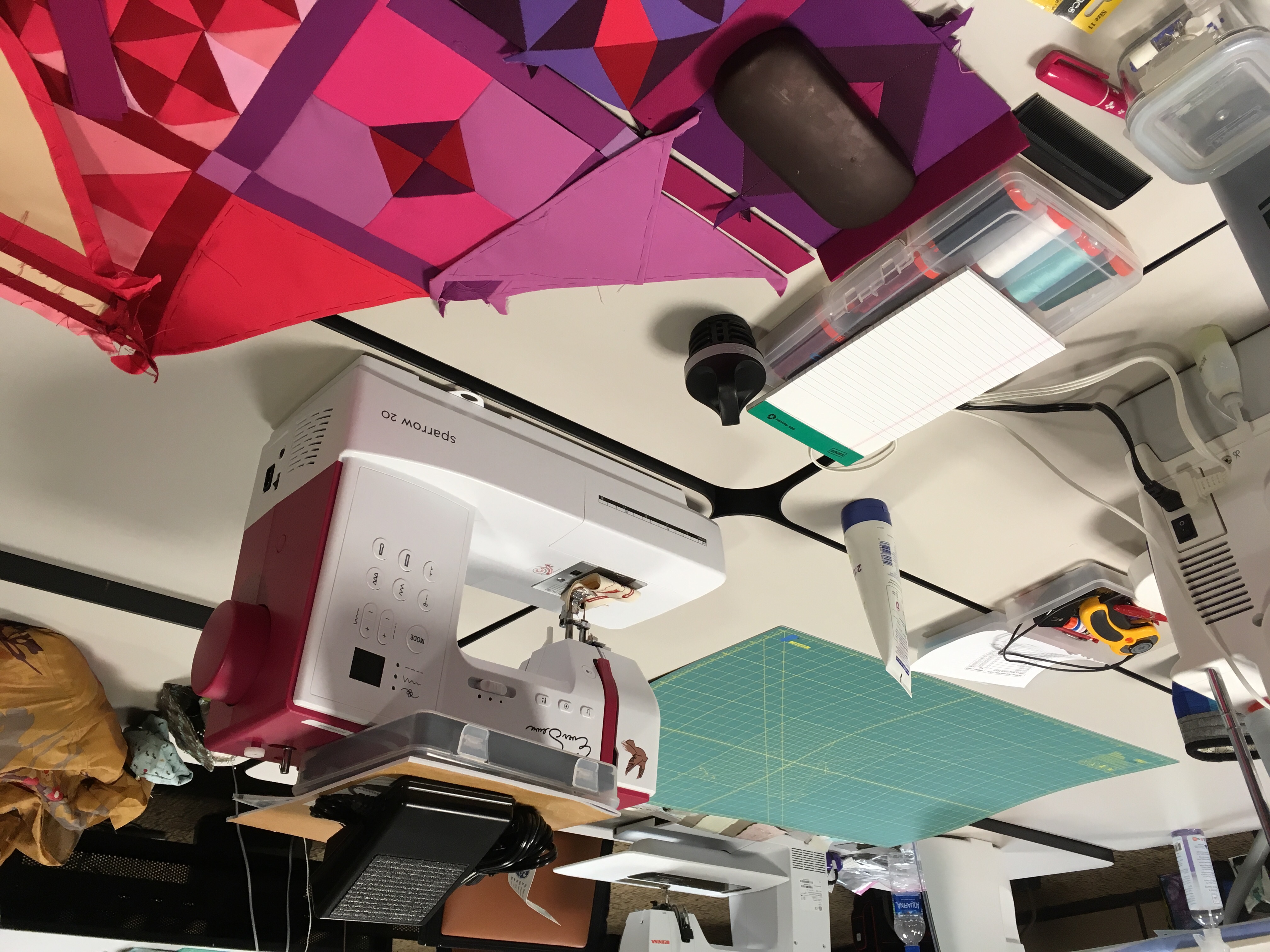
Threading was easy. She came with a full yellow bobbin. So I could get right to work. Doing the straight stitch was easy. I had trouble figuring out how to access the additional stitches, but I finally stumbled upon how to set them up. I considered assembling a small quilt sandwich and trying out the quilting feet, but decided to leave that for another day.
Here you can see some of the stitches I tried out.
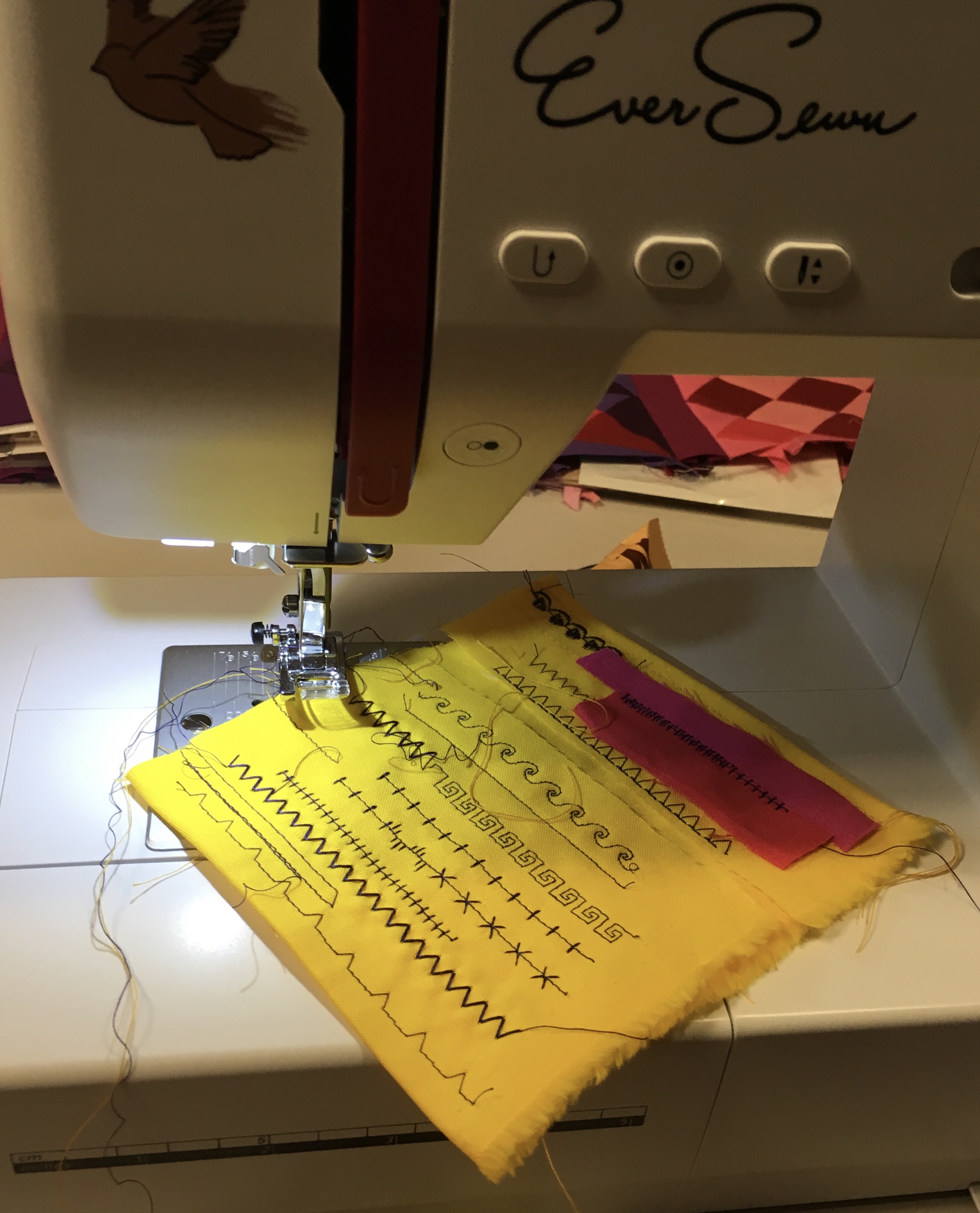
I’m happy I bought her.
After playing with my new sewing buddy I decided to cut and baste fabric for a new block. I chose #37 Flower Pot. Basting this block turned out to be a bit of a challenge. In order for tails to work out properly on the flower pieces I found it necessary to pull up the corner of the first edge on each piece in order to place the corner of the last edge beneath it. It is really necessary to do that.
I started sewing #37 the evening of the second day, (getting biblical again) and finished her in the morning of the third day. she will get a formal introduction during the next Farmer’s Wife Friday, but she makes an appearance here.
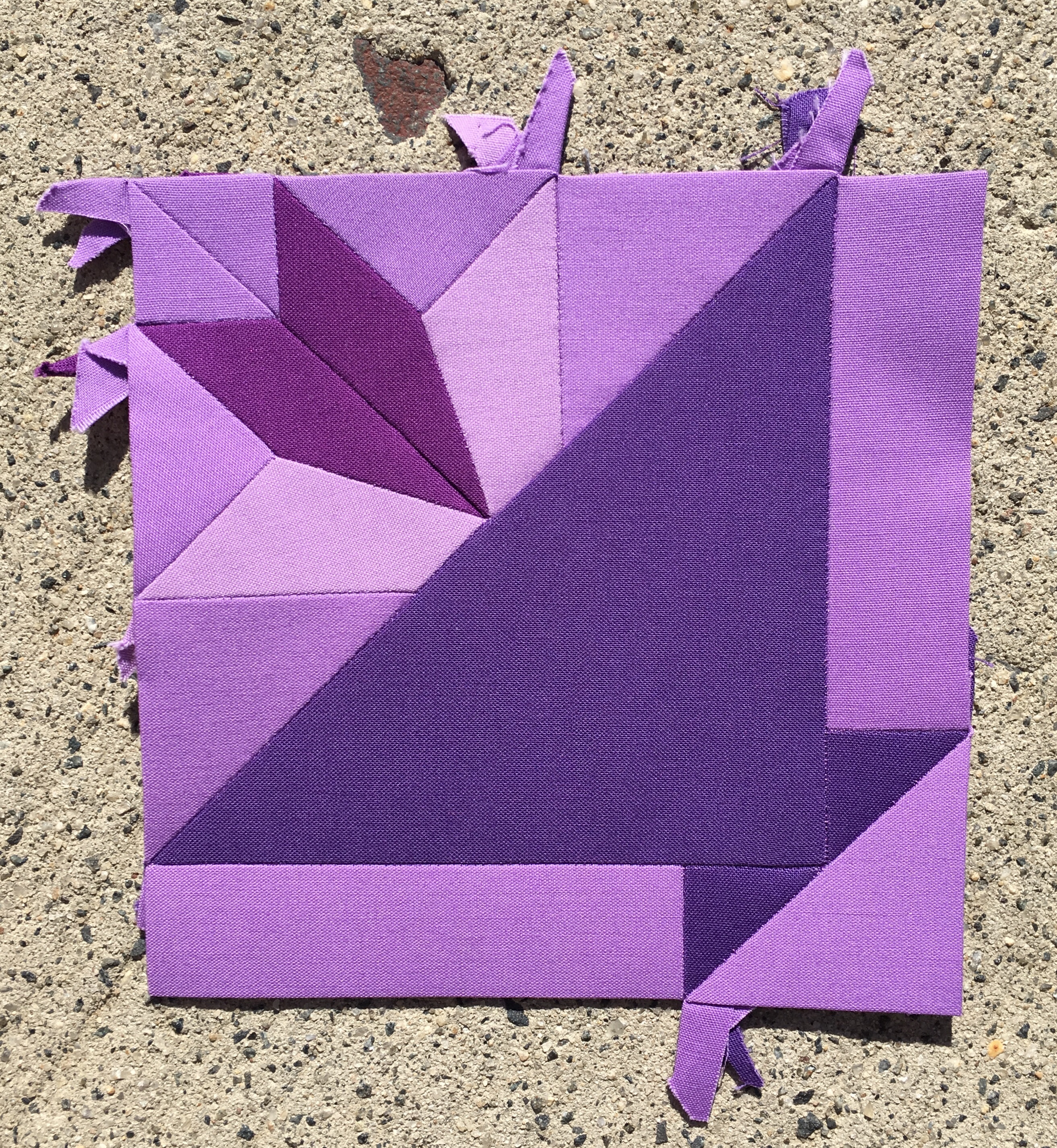
Next, with hours to go, I moved on to #38 Four Winds. It took forever to cut the pieces for this block. There are 64 pieces in this block and they are all either one inch squares or one inch triangles. I glue basted about half of them and then could not resist sewing together the lower right corner. I’m halfway done with this onerous block.
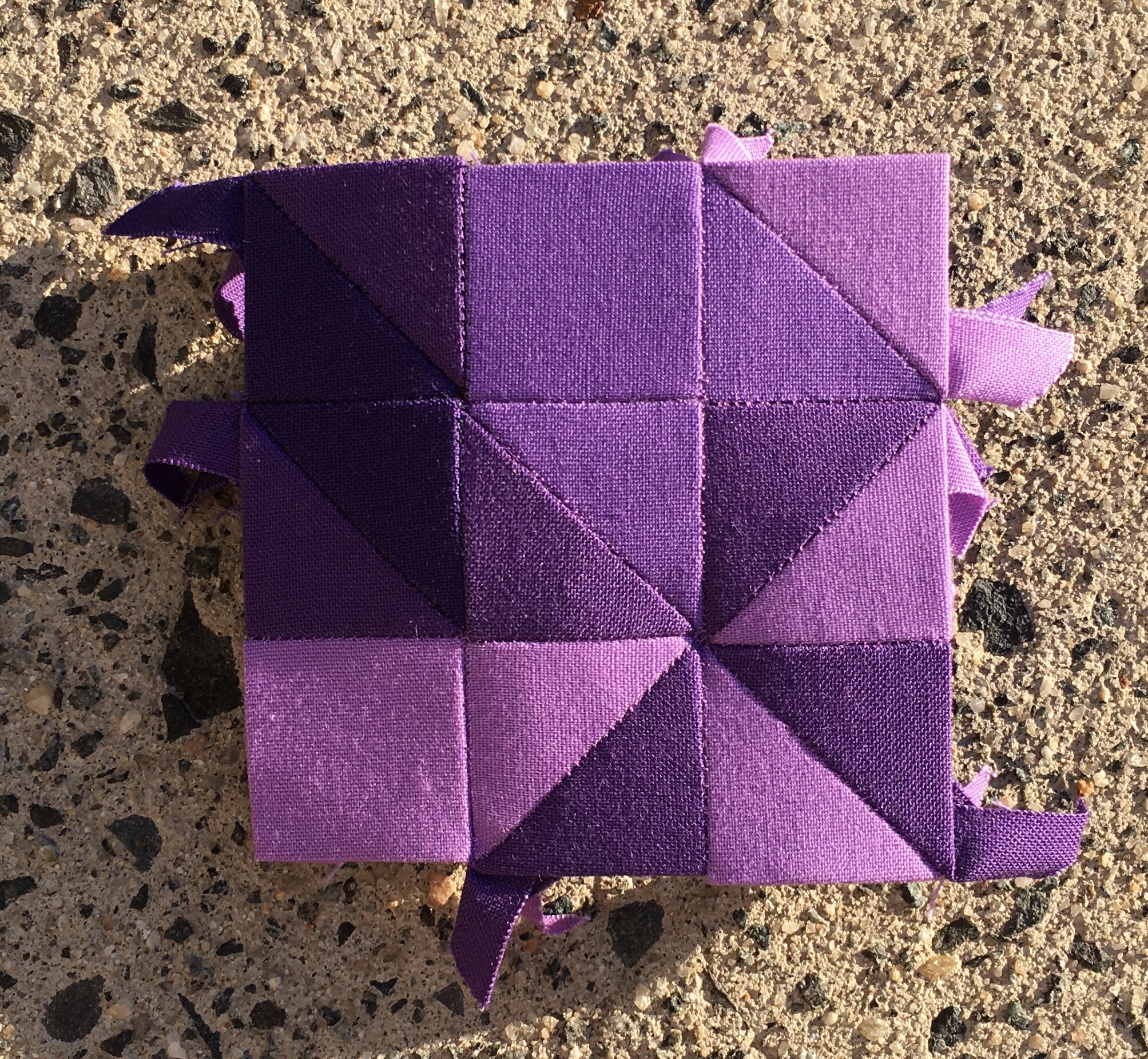
I did not press this block before photographing her. She reminded me of a little crab walking across the sand casting a big shadow because her tails where sticking out the back like legs.
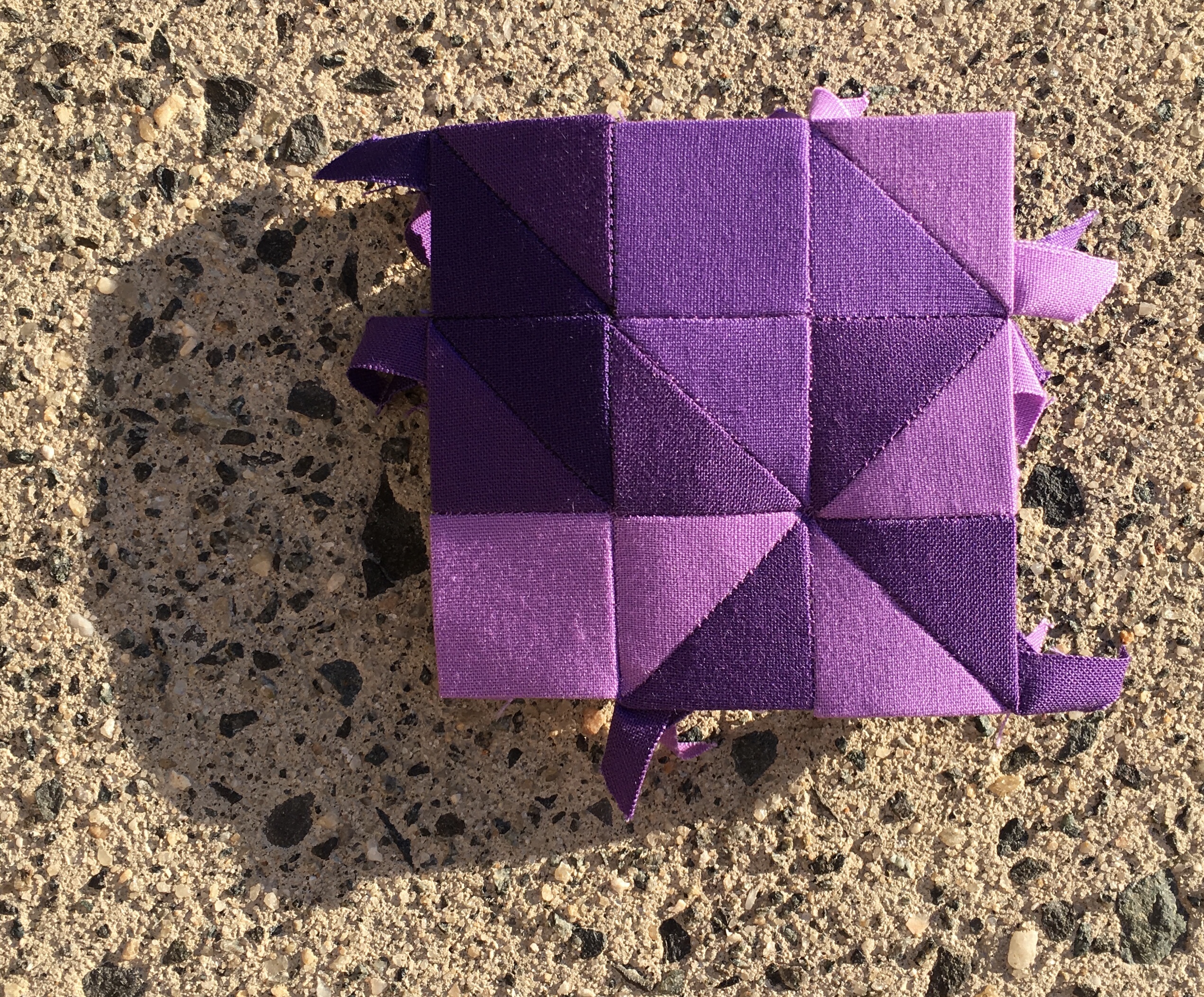
All in all it was a retreat with wonderful ladies creating wonderful projects and talking about everything under the sun.
One topic on which I could offer no input was their common love of Outlander. That will be different next year. I have subscribed to STARZ via Hulu, and will be a part of the conversation next time.
